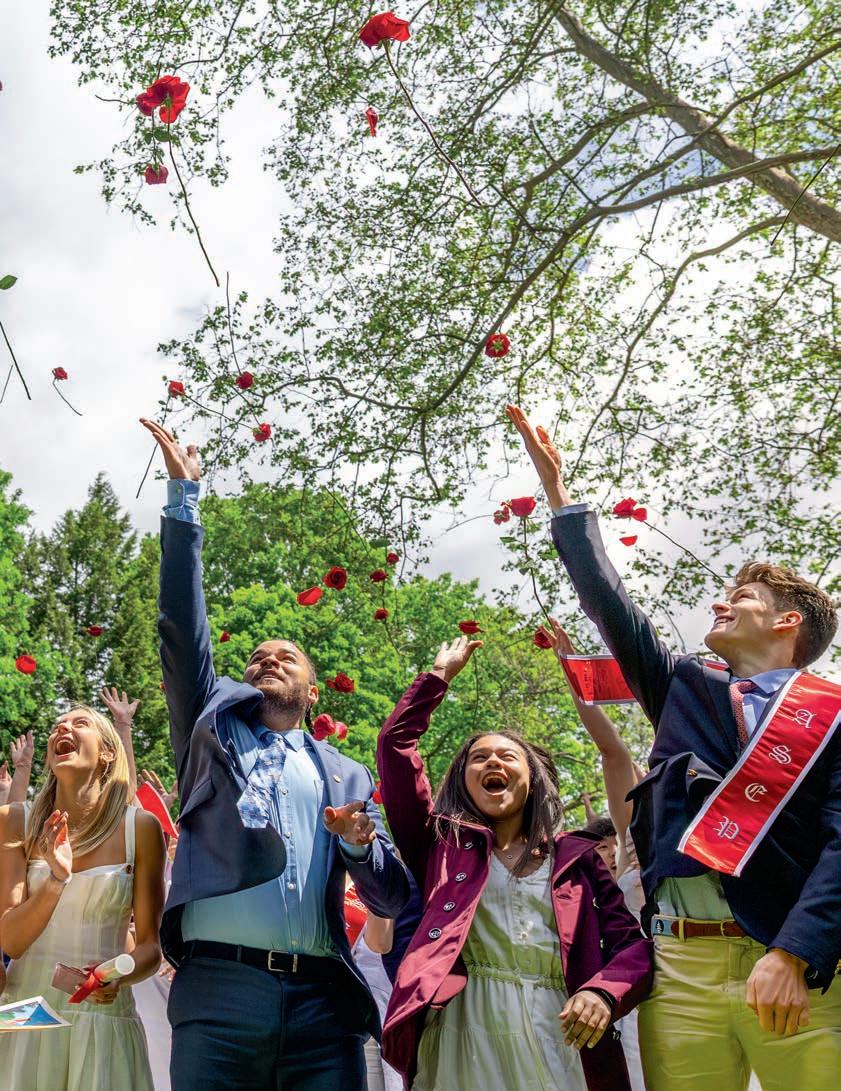

A lumni Horae
ST. PAUL’S SCHOOL | ISSUE III 2024-25
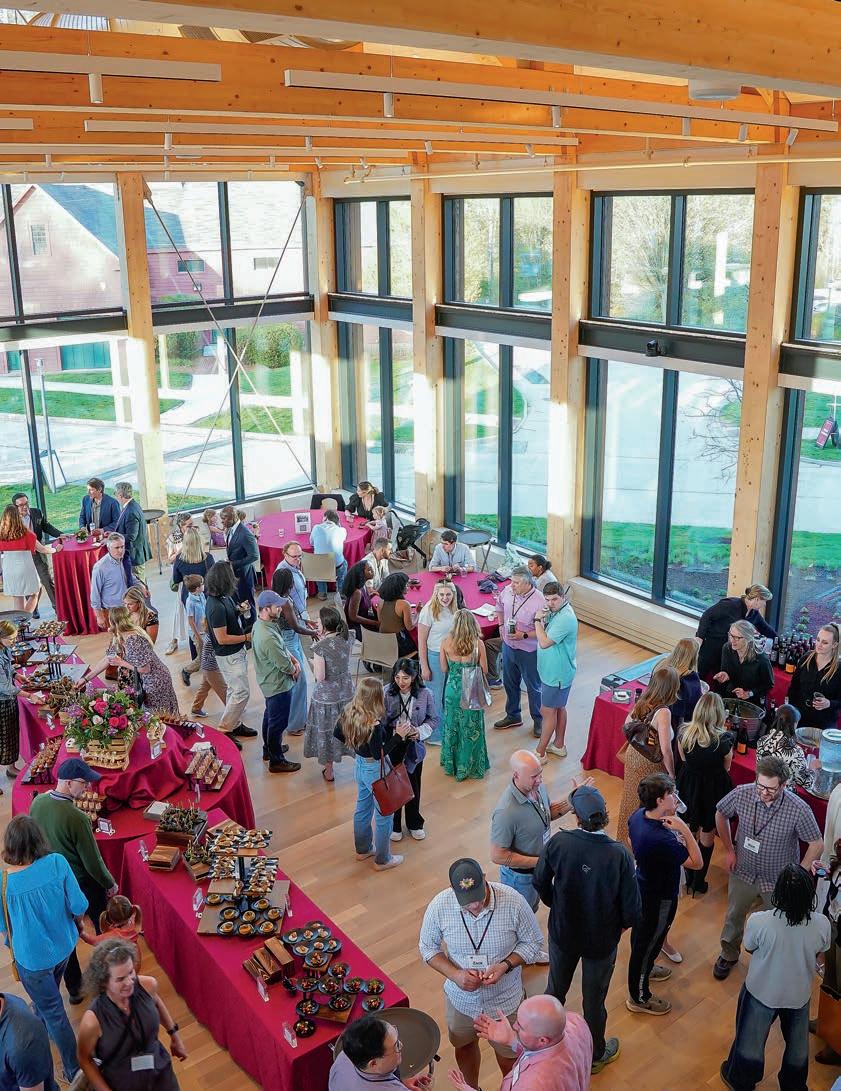
The Fleischner Family Admissions Center was in full swing during the Friday night Alumni Association Welcome Back Reception and Dinner during Anniversary Weekend.
PHOTO: AMANDA SABGA
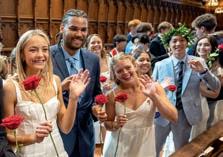
The 154 graduates of the Form of 2025 are prepared to do hard things well.

With 146 years of service to the School between them, five members of the faculty retire — and two others celebrate 25 years in Millville.

The dedication of the Fleischner Family Admissions Center and the presentation of the Alumni Association Awards were highlights of the weekend for alumni who gathered to remember their formative years together in this place that so many consider one of their homes in the world.
THE COVER
JUST BRILLIANT: The sun shone on the Form of 2025 in the moment that they became alumni of St. Paul’s School, with the traditional rose toss at the end of the Graduation ceremony marking the end of their student days and the beginning of the next chapter of their lifelong connection to Millville.
PHOTO: BEN FLANDERS
Alumni Horae
RECTOR
Kathleen C. Giles
EXECUTIVE
Karen Ingraham
EDITOR
Kate Dunlop
SECTION
Kristin Duisberg
DESIGNER
Cindy L. Foote
PHOTOGRAPHY
Michael Seamans
Ben Flanders
ALUMNI ADVISORY BOARD
Elise Loehnen Fissmer ’98
David M. Foxley ’02
Dana R. Goodyear ’94
Jonathan D. Jackson ’09
Malcolm Mackay ’59
Diego H. Nuñez ’08
Published by St. Paul’s School
ALUMNI HORAE DEADLINE
Formnotes about the personal and professional lives of alumni, as well as positive interactions with other members of the SPS community, are welcome (200 words maximum). Notes for the next issue are due Sept. 5 and may be submitted to alumni@sps.edu. A clear, high-resolution photo of at least 1 MB may be submitted for publication consideration with an accompanying caption that identifiies people in left-to-right order and provides context. Alumni Horae editors reserve the right to edit and condense formnotes; notes and photos will be included as space allows.
Update your email address alumni@sps.edu
What’s in a Statue?
ALANA-KAYE MORGAN ’25
In the midst of turmoil and uncertainty in the world, morning chapel continues to be a place of deep thought and connection. One of the best features of life at School is student chapel talks, and we have had many terrific ones this year. I am pleased to share with you this example, delivered by Alana-Kaye Morgan ’25 on May 19. She offers some important food for thought.
— Fourteenth Rector Kathy Giles
Iam here to address a pressing issue. One that cannot be ignored for any longer and is simply a reality that I have to face. My time here is coming to an end. It’s a hard pill to swallow, but it’s the truth. The past couple of weeks have been filled with a lot of lasts: I attended my last all-school dance two weeks ago; submitted my last scientific journal article; and this Saturday will be my last performance with the St. Paul’s School Ballet Company. As I get ready to depart from this place that I’ve called home for the past three years, I’ve been thinking about what brought me here in the first place. Was it the smiling faces at Visit Day, the vastness of Lindsay, or the picturesque scenery and perfectly manicured lawns?
Nope!
All of those things are great, don’t get me wrong. But they aren’t the reason why I chose to come here.
The reason why I left my home, my family, and the beautiful warmth and sunshine of Jamaica to complete my high school years in a foreign land with long winters is because of the approximately seven-foot tall structure that stands outside this very chapel: The statue of St. Paul. Is it a little irrational to choose where you spend the remainder of your high school years solely based on a bronze casted statue? Maybe. But I promise, I have my reasons.
of my ignorance. It is also a symbol of my role and responsibility to guide others out of their ignorance. I’ll tell you why that is.
If you climb onto the statue’s platform and look in the upper left corner, pushing aside the shrubbery, you will see a tiny plaque that reads “St. Paul Reaching Out to the Athenians by John Angels. Gifted by the Board of Trustees in 1931.” As the title of the piece suggests, the statue is inspired by St. Paul’s interaction with an Athenian audience that he encountered on his second missionary journey. Obviously, at the time there were no cameras to film Paul the Apostle highlight reels, so we don’t truly know how St. Paul reacted to encountering the Athenians. However, the way in which the sculptor decided to depict St. Paul for our statue is significant. He is not proudly standing with head held high, nor is he disgusted and posed with arms akimbo. In our statue, St. Paul is reaching out with a face of what I interpret as concern. The very nature of our statue suggests that the interaction between St. Paul and the Athenians wasn’t one in which Paul was belittling them for their practice of worshipping idols dedicated to unknown gods, but rather a moment in which he wanted to connect with them, reaching out to them and hoping to transform their ways and bring them out of spiritual ignorance.
“IS IT A LITTLE IRRATIONAL TO CHOOSE WHERE YOU SPEND THE REMAINDER OF YOUR HIGH SCHOOL YEARS SOLELY BASED ON A BRONZE CASTED STATUE? MAYBE. BUT I PROMISE, I HAVE MY REASONS.”
To me, our statue of St. Paul is a symbol of the School’s promise that I’ll meet people who will bring me out
Why does this story, this interpretation, matter to us? Well … we’re all Athenians, and in the same light, we are all Pauls. The Athenians were a sophisticated, incredibly organized and very accomplished group of people, and even in that, they were still riddled with ignorance. In that way, we are a lot like the Athenians. We come here and we’re all so accomplished and we’re all so spectacular and we’re all so … ignorant. This ignorance does not only apply to school; it applies to doing laundry, it applies to navigating friendships, it applies to art, it applies to life. We’re all so ignorant. But that’s why we have our Pauls. Everyone’s Paul might
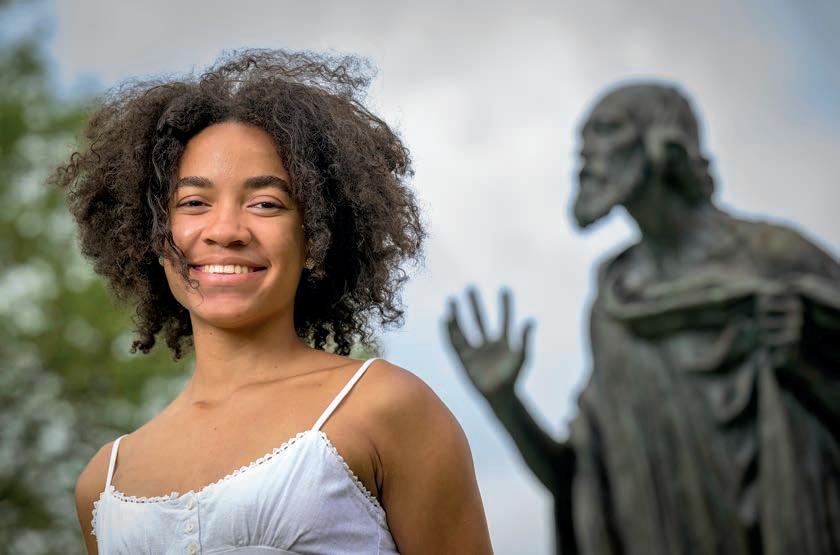
be a little different, but they all share that fundamental practice of reaching out to you, connecting with you and taking you out from your ignorance without making you feel inferior because their desire for you to change and transform comes from a place of genuine care. Pauls are the type of people you can call at two in the morning to help you with a chemistry problem, and they’ll explain it to you without making you feel stupid. Pauls are the type of people who call you out for unkind words and actions and give you reason and context for why what you said or what you did is harmful. Pauls are the type of people who recommend you talk with a counselor without making you feel as if there is something wrong with you. I’ve watched Pauls around this School transform people for the better. I’ve been transformed by the Pauls of this School, and for that, I’m forever grateful.
The statue of St. Paul watches over all of what we do here at SPS. Quite literally. It’s obvious that the statue faces Rectory Road, and if you broaden your perspective, you’ll also realize that the statue faces all of our academic buildings where we work tirelessly, our fields where we play hard, the art buildings where we allow our creativity to flourish. And depending on where you live on campus, the statue faces where we learn to live in, and build, community. As this statue presides over a lot of what we do on campus, let the spirit of St. Paul and all that he represents affect us in such a way that we may humbly guide each other out of ignorance and transform each other for the better so that we may fulfill our purpose of being in service to the greater good.
My name is Alana-Kaye Morgan, and yes, I chose St. Paul’s because of a statue. I have no regrets.
The St. Paul’s School community heard from a number of speakers during Spring Term chapels. Here’s a sampling of what some of them had to say.
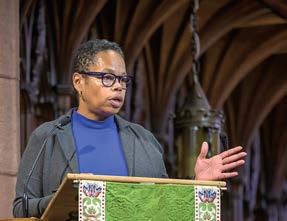
LISA CROOMS-ROBINSON / March 3, 2025
Professor & Interim Dean, Howard Law School
Marilyn Beaudry-Corbett Schlesinger Fellow, Harvard Radcliffe Institute
“My [social justice] practice involves singing. … I’m a solid choir member. … But being a good choir member goes beyond singing. You must be able to simultaneously hear and sing. If you can’t hear, there’s a special term for that, and that’s tone deaf. And we see tone deafness in many, many instances. In order to be a good member of a community you’re invested in and want to be a part of, we invite you to sing, but we need you to listen and sing. Not just sing.”

LILY FAN ’97 / May 9, 2025
Chair and Commissioner,
New
York State Liquor Authority
“What I really want to tell you is that the accolades and successes awarded by the outside world do not translate into happiness and peace. I have firsthand knowledge of this. For 30 years, I have climbed and climbed, driven by my commitment to public service … and really have achieved a lot of what society would consider as success. But at some point in recent years, I realized that even though I was spending a lot of time and effort doing what I thought were the right things, joy did not automatically come to me. After some exploration and soul searching, I finally learned that the problem is me. I have to open my heart … I’m starting to realize that I need to pause my pursuit and take the time to be present.
… The next thing I’m going to do … is to connect my body and my mind, and spend time to actually work on massaging and feeling my heart muscle so that I can receive the happiness that’s supposed to come from all my achievements.
… Every single person in this room … someone thought that you are so outstanding that you deserve to be part of this extraordinary community. Everyone here is meant to live a life of impact and change. … You must accept the fact that the majority of mankind is less fortunate than yourselves. … You are well equipped to help others. … Some days may be hard, but remember that true happiness comes from doing your best to correct the wrongs of those before us and brighten the path of those coming behind. Be present and stay mindful.”
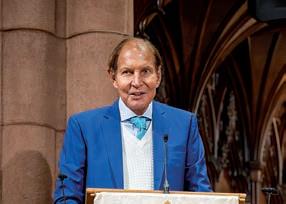
2025 Author, chair and founder of 13D Research & Strategy
“ Adversity is the best teacher, and my life has been defined by my deafness. … Essentially, deafness is about failure at the most basic and fundamental level of human interaction — communication. If you fail over and over again at something, you have two choices: You can give up or you can become stronger. … At 15, here at St. Paul’s, I had difficulty understanding the words in songs. … In the mid-1980s, my hearing loss accelerated. … Then one morning, I woke up and could no longer hear my own voice. There are hundreds of days when I didn’t think I could go on, but I did. … Deafness made me who I am. … Deafness toughened me and softened me, shaped my character and the way I look at life. Switching your mind from the negative to the positive is really a development of the heart. A personal transformation. It is only adversity that makes you question who you are, how you must change, and what you need to learn. … In the fall of 1996, I had a cochlear implant [and had to] learn to process speech all over again. … I realized that one-on-one conversations mean more to me than anything else in the world. The gift was to take it away, and then it was given back. I call myself the luckiest man in the world, and I’m still not grateful enough.”
KIRIL SOKOLOFF ’65 / May 2,
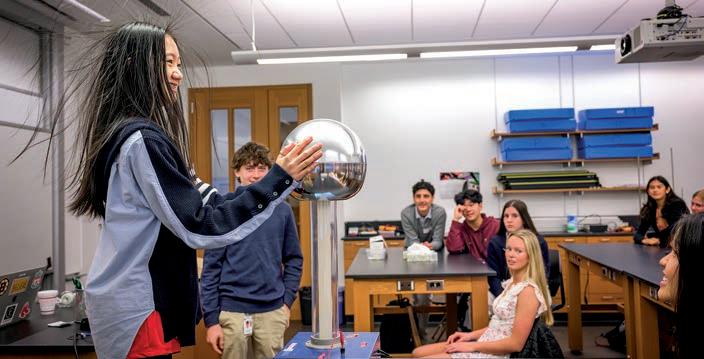
WHERE THEY BELONG
Interest in a St. Paul’s School Education Yields Strong Cohort of New Learners
KATE DUNLOP
This year, 1,561 teenagers applied for the opportunity to pursue excellence in character and scholarship at St. Paul’s School. Of those, 234 (15%) were admitted and 164 said Yes to SPS, precisely meeting the admissions goal. Those who will begin their St. Paul’s journey this fall represent 29 states and 21 countries. They join a diverse group of peers guided by 112 faculty members who ensure the integration of social, emotional, intellectual and spiritual growth into every aspect of student life.
In building this cohort of learners who are at the top of their classes in their current schools, the Admissions Office sought motivated young people who demonstrate academic excellence and intellectual curiosity, kindness and perseverance, and a passion for multiple pursuits as well as a willingness to try new things. An additional data point this year came from a return to requiring standardized testing scores, which provided a fuller look at applicants’ academic records.
Like its peer schools, St. Paul’s is navigating a competitive admissions landscape with a shrinking teenage demographic in the United States. In response, Dean of Admissions and Financial Aid Dana Anselmi ’98 says her team continues to work hard to make sure families feel like they really know St. Paul’s.
In April, the School welcomed admitted students and their families to the grounds for Spring Visit Days and a taste of life in Millville. Each family’s student host guided
them through an Activity Fair, chapel, classes, lunch in the dining hall and a dorm tour. Parents heard remarks from Rector Kathy Giles, and after reuniting with their children, attended a student panel to hear multiple perspectives about living and learning at St. Paul’s School before heading home to make their big decision.
“We heard really good feedback on our two Spring Visit Days, about everything from class visits to how they were greeted at the entrance by students waving the SPS flag to the activities fair, where they could meet representatives of every program, team and club offered at the School,” Anselmi says. “Being on campus, you can’t help but feel the pride that comes from living and learning all together, knowing that we’re all part of something special.”
The School strives to make the St. Paul’s experience accessible to as many qualified students as possible. About 38% of SPS families receive financial aid each year, and grants meet full demonstrated financial need. Families of admitted U.S.-based students with an annual household income up to $150,000 generally qualify for full tuition support. For the 2024-25 school year, more than 200 students received $12.6 million in aid.
New students will find a myriad of support systems to help them navigate boarding school life, including the online SPS 101 course all incoming students are asked to complete.
Admitted students sat in on a Physics First class’ static electricity experiment.
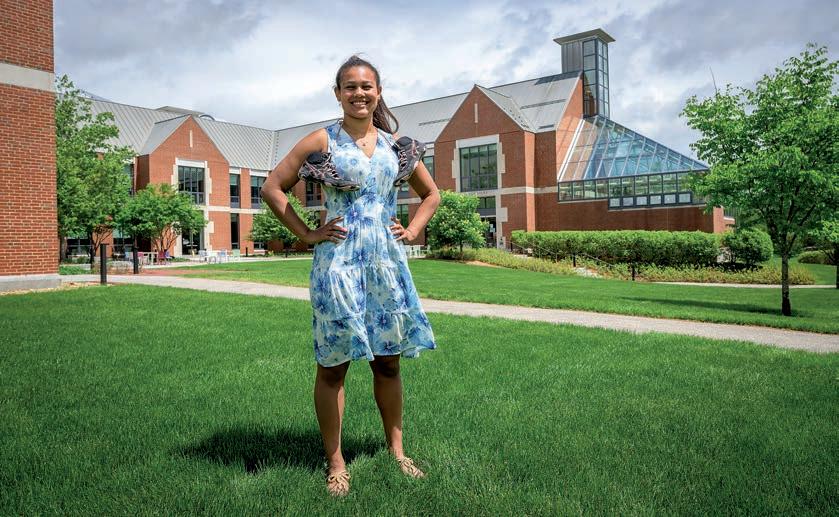
DRIVEN TO SUCCEED
Camila Capdevila ’25 was always going to defy the odds
Born to a teenage mother who had immigrated to the U.S. from Argentina only a few years before, Camila “Cami” Capdevila ’25 saw firsthand the obstacles and hardships her mom overcame to create a stable home life for the two of them. It was a model for her daughter to follow.
“Statistically, I was destined to be just another number, another story of failure,” Capdevila wrote in her personal statement for her college applications. “But rather than succumbing to the expectations this world had predetermined for me, a fire ignited within … I’m not a statistic — I’m an outlier. I redefine what is possible.”
The seeds for Capdevila’s future were planted early. When she was young, her mother worked as a cardiac tech at a hospital in the family’s Florida hometown. When her mother was called in for emergencies, and timing or money was tricky, Cami was often pulled into the rhythm of it all.
“My mom would get called in at random hours of the night,” says Capdevila. “We’d pack my school bag and I’d just wait out the hours however I could until school started.
I understood fairly quickly that I needed to grow up fast and do everything I could to help my mom because of how much she was doing for me.”
That meant dreaming big and taking chances, which is exactly how she landed at SPS. Obsessed with history, Capdevila had researched the biographies of many of America’s Gilded Age business titans — Rockefeller, Carnegie, Morgan — and realized that all of them had strong connections with the most elite boarding schools in the country.
“I knew nothing about these places,” she says. “I Googled ‘Top 10 Best Boarding Schools in America’ and started applying. But I immediately fell in love with SPS and it became my top choice.”
In the fall of 2021, Capdevila arrived in Millville as a Third Former. In the years since, she says, the School has met her determination in ways that have shaped and refined how she thinks about her future.
“I had no idea that teachers could care so much about their students,” she says. “They truly are passionate about teaching us and ensuring our success in and beyond the
IAN ALDRICH
classroom. Early on, I struggled with self-confidence. All my peers seemed elite or world-class at something, and I felt inadequate. But by being in this environment, surrounded by such incredible people, I was encouraged and supported by individuals who always showed up for me.”
The impact SPS has made on Capdevila has been mirrored by the marks she has left on the School. She’s thrived as a science student and anchored the soccer and track teams. In June, she competed at the Nike Outdoor Nationals in Oregon in the javelin — an event she only took up last year.
But if there is an element of her SPS life that best encapsulates Capdevila’s drive, it’s wrestling. Introduced to the sport as a Fourth Former, Capdevila ascended quickly and in February finished as an All-American at the National Championships in the 152-pound division.
“I’LL BE THE TOUGHEST OPPONENT THEY’VE EVER MET . . . RUNNING OUT OF GAS WAS NOT AN OPTION FOR ME.”
“The winters can get pretty gloomy, and wrestling helped me feel empowered,” she says. “Since I started in high school, I knew I wouldn’t be able to match the technique of someone who’s been doing this sport since middle school, but I’ll be the toughest opponent they’ve ever met. That’s why I turned to strength and cardiovascular training, because running out of gas was not an option for me. We’re making it to the third period, and when we do, and my opponent is exhausted, I’m going to take them down.”
As she’s honed her skills, she’s also worked to make it easier for other SPS female students to step onto the mat. Along with Madelyn “Maddie” Morse ’26 and Danielle Choi ’26, Capdevila founded Women of Wrestling, a club that introduces the sport to others and focuses on vital athletic aspects such as workout routines, nutrition and body health.
“It’s rewarding to build a supportive, collaborative environment where girls can feel comfortable and confident challenging stereotypes and asking tough questions,” she says. “That’s what the St. Paul’s community is all about.”
Paying it forward, in fact, is at the root of who Capdevila is. In the fall, she’ll enroll at Williams College, where she’ll take an important step toward realizing her dream of becoming a doctor. She looks back with fondness at the kindness she was shown by her mother’s colleagues all those years ago and wants to do the same.
“It’s what I’ve wanted to do since I was a little girl,” Capdevila says of her medical path. “So many doctors and nurses took me under their wings — it felt like the big family I never had. If I can find a way to do something like that for someone else, it would be my way of honoring the very people who first made me believe that I belonged in medicine.”
This is Jeopardy!

On March 13, faculty and staff gathered in Raffini Commons to cheer on Latin and Greek Language Teacher Liz Engelhardtas she took to the “Jeopardy!” stage to put her knowledge and reflexes to the test. It was a tight game that she led after finding the first Daily Double in the Double Jeopardy round, though she didn’t end the game as champion.
“It all grew out of a time when I was left at home with two children with a stomach bug and I just spent five days cleaning up,” she says. “I had just turned 40 and I was like, you know what? I need to do something just for myself.”
On a whim, Engelhardt took the online test, which eventually led to a spot in the contestant pool, where applicants can linger for up to two years. Englehardt was approaching that limit when she got the call last December and cleared her calendar to head to Los Angeles.
“It was a really cool experience,” she says, “a little bit nervewracking and surreal. My goal was to play the best game I could and not to become a meme that would haunt me for the rest of my life. And also to not miss the answer to any question that would cause any of my loved ones to feel deeply disappointed in me. It was really fun, and the other contestants were just incredibly fun, kind, interesting people.”
Earned Hope
CONROY DISTINGUISHED VISITOR PETER MCBRIDE ’89 INSPIRES OTHERS TO FIND WONDER IN, AND PROTECT, NATURE
KATE DUNLOP
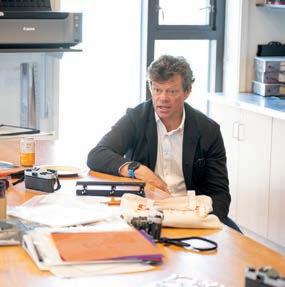


The Colorado River flows through seven states and two countries, supplies 40 million Americans with drinking water, and helps generate 10 percent of the U.S. GDP, but it has not consistently reached the sea in a meaningful way in almost three decades.
That’s just about the same amount of time that Peter McBride ’89, a self-taught photographer, filmmaker, writer and public speaker, has been honing his craft and traveling to more than 75 countries on assignment for National Geographic and other clients.
On E arth Day, April 22, the Dartmouth graduate, St. Paul’s School Alumni Association Award recipient and former Knight Journalism Fellow returned to Millville as the 2024-25 Conroy Distinguished Visitor to offer remarks during a special chapel held in Memorial Hall, have lunch with students and visit classes.
In his chapel talk “Finding Your Path,” McBride, who grew up on a cattle ranch in Colorado, shared his experiences documenting environmental and cultural stories around the word, from Africa to Mt. Everest to Antarctica and most places in between, enduring extreme conditions along the way to bring back not just stunning images of places but the stories of people, especially Indigenous peoples, and the Earth’s fragility. He’s seen the most beautiful locations and the most heartbreaking undercurrents of their reality, but instead of cynical hopelessness, he’s emerged with what he calls earned hope — and the conclusion that everyone can make a difference.
McBride’s path has most recently brought him closer to home. His third book, “The Colorado River: Chasing Water,” follows up on 2018’s “Grand Canyon: Between River and Rim,” which detailed a grueling 750-mile journey through what McBride describes as one of the most shattered and complicated landscapes in the world. A 2024 National Outdoor Book Award Winner and one of Smithsonian Magazine’s 10 Best Photography Books of 2024, “Chasing Water” is a comprehensive look at the stressed and vital lifeline of the American Southwest whose waters are diverted to keep Las Vegas, Phoenix, Tucson, Los Angeles and other cities habitable.
“Sitting here, you may think, well, that’s a bummer, that the river doesn’t reach the sea anymore, but it has nothing to do with me,” McBride told an enthralled crowd in Memorial Hall while showing an aerial image of the river’s dried tendrils. “Well, 95% of America’s salad bowl — our lettuce, carrots, cauliflower in the winter
Peter McBride ’89 talks with SPS photography students.

months — comes right from here, from the Colorado River. So, you all eat this river, whether you realize it or not.”
Despite the river’s dire drop in water levels, McBride finds hope in second chances: in 2018, less than 1% of the river was released so that it could flow to the sea, temporarily revitalizing the estuary with flora and fauna. He also finds it in the power of individuals like Renae Yellowhorse, who helped shelve a billion-dollar tram project that would have further harmed the river, along with Maya Tilousi Lyttle and her mother, Carletta, who helped unite 13 tribes and protect nearly a million acres around the Grand Canyon from future uranium mine claims and establish a new national monument.
“Nature, if we give it a chance, is totally resilient,” he said. “We’ve just got to work with nature.” And work together. “Anybody can make a difference, is the lesson I learned from [Yellowhorse],” McBride said.
McBride concluded his chapel remarks by saying he documents these moments to remind himself — and others — of “the awe and the wonder and the joy” of nature. “If we can find and reconnect with those things, as I think you do at St. Paul’s, it reminds you not only about the power of feeling small in nature, the humility that comes with it, but the importance of it,” he said. “When you head out on your path, be curious, be brave, try new things. There is no perfect path.”
Students responded enthusiastically to McBride’s message, with more than one saying they want to do what he does. “He introduced to me a life I never thought possible and showed us how he gets to have the most unique experiences while also serving the greater good of our planet, which is incredibly powerful,” Amelia Guest ’25 said. “It felt so good to see someone do the things that they love while also making a positive impact on the world.”
After visiting environmental science and honors Spanish classes, McBride ended his day in the advanced
photography class of Arts Teacher Leigh Kaulbach ’08, where he offered both technical and practical advice, discussing everything from gear and how to shoot underwater to the reality of earning a living as a photographer and how he operates in the field.
Nel Peter ’25, a photography student who would like to follow in McBride’s professional footsteps, said it was incredible to ask questions of someone with so much experience, adding that many students regarded his talk as the best of the year.
“I do pride myself, when I’ve been asked to do a story, on being a human first,” McBride said. “I’m a photographer second, so I’ll never stuff my camera into someone’s face. I’m there to build some trust …. I just feel like I’m telling stories about the natural world under pressure and trying to give a voice to the voiceless, whether wild places or Indigenous peoples.”
McBride does that through his art — through the arts, which should be valued, he says, as the voice of time and culture.
CONROY DISTINGUISHED VISITORS PROGRAM
Established to stimulate and inspire students at St. Paul’s School, to enlarge their view of life, and to suggest directions in which they can serve their country and their communities effectively, the Conroy Distinguished Visitors Program invites outstanding leaders in various fields to the School for discussions, meetings, schoolwide performances and lectures. Conroy Visitors have included poet/author Maya Angelou, cellist Yo-Yo Ma, the Chicago Symphony Singers, U.S. Poet Laureate Billy Collins and threetime Olympic gold medalist Misty May-Treanor, among others.
Aerial view at sunrise by Peter McBride ’89 showing the double oxbow “Loop” in Canyonlands, Utah.
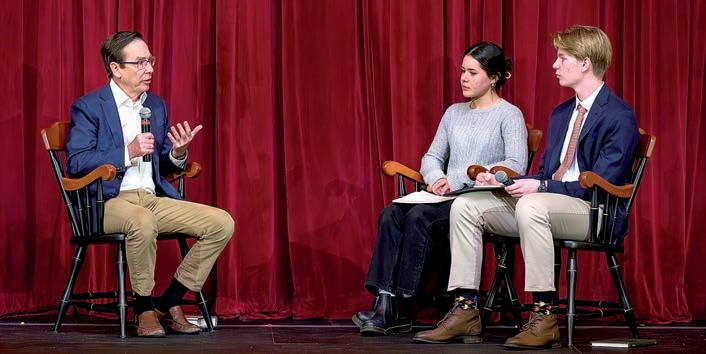
A Club For Complex Conversations
THE JOHN G. WINANT
SOCIETY OFFERS STUDENTS A BIPARTISAN FORUM FOR SHARING IDEAS AROUND PUBLIC POLICY, GOVERNMENT AND MORE.
KRISTIN DUISBERG
When Owen Sweet ’21 and Seth McKenzie ’21 revitalized the John G. Winant Society not long before they graduated, they did so in a community-wide Zoom discussion featuring the Hon. Jess Baily ’78, P’13, a career Foreign Service officer with more than 35 years of diplomatic experience. Last year, current Winant Society head Rhys Henrikson ’26 had the opportunity to moderate an in-person conversation between Baily and the SPS student body, posing questions to the former U.S. ambassador to Macedonia alongside Isa Martinez ’24.
“Getting to interact with Ambassador Baily was a really powerful experience,” Henrikson says. “It pushed me out of my comfort zone a bit, but in a great way. It helped me frame the impact I wanted to have with the club and hopefully leave with it after I graduate.”
The Winant Society was founded in 1960 by members of the Fourth and Fifth Forms, including former Senator and Secretary of State John Kerry ’62, and named in honor of the 1908 alumnus and onetime St. Paul’s School teacher who went on to become the ambassador to the United Kingdom and the 60th governor of New Hampshire. The club, Henrikson explains, aims to foster both student awareness of, and balanced bipartisan
conversation around, current affairs and politics. He got involved last year after expressing an interest in creating an ethics club on campus and connecting with the Rev. Charles Wynder Jr., the School’s dean of chapel and spiritual life and the Winant Society’s adviser, who felt there was a strong overlap between the then-Fourth Former’s interests and the club Sweet and McKenzie had relaunched three years earlier.
“He sort of gave me a tap on the shoulder and said, ‘hey, I think there are some interesting parallels here, and we could use you,’” Henrikson recalls. Following last year’s conversation with Baily, this year the club met several times each term to discuss student-selected topics that included U.S. politics and economic policies, and it helped host a visit by a group of West Point cadets. For next year, Henrikson is working on plans to bring Austin Sarat, a professor of political science at Amherst College, to campus to discuss the criminal justice system and the death penalty — topics that reflect the interest behind his own involvement in the club.
Growing up in New York City, Henrikson shared in a January chapel talk, “The news was always filled with stories of violent criminals being arrested, depicting a struggle
between good and evil. But the news stories seemed to stop at the arrest of those people labeled as ‘violent criminals.’” It was when Henrikson’s family moved north of the city and he learned about nearby Sing Sing, the maximum-security state penitentiary where many of those individuals ended up, that he began to delve into the social dynamics and systems that often set the stage for crime.
“Around this same time, I started to get involved in the revival of the John Winant Society and realized it was the perfect space to nurture my interests,” he says.
Henrikson estimates that the club had 60 students sign up last fall, with about a dozen core members who attend meetings that range from small group discussions to larger events with other student interest groups. He sees the club as a vital opportunity for students to learn how to understand others’ perspectives and to embrace the discomfort of sharing their own opinions and values.
“ The one thing I’ve seen, which is kind of exciting, is people all have the same end goal,” he says. “Everyone wants to create a thriving community, and to figure out how we can all take our experiences, our knowledge, and work together to create something that works for everybody, or as many people as possible.”
The Hon. Jess Baily ’78, P’13 with 2024 Winant Society leaders Isa Martinez ’24 and Rhys Henrikson ’26.
AROUND THE GROUNDS
DOING FINE Students gathered in Memorial Hall for the annual Hugh Camp Cup competition, which dates back to 1926 and celebrates student voices and the art of public speaking. Seven finalists shared speeches ranging from the personal to the persuasive, the lighthearted to the profound, for the consideration of their peers and teachers. Scan the code to read about Alice Qi ’28 and her winning speech.

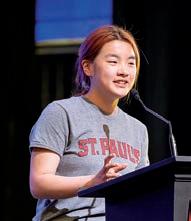
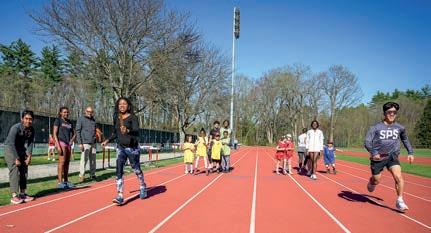
GET MOVING On April 30, the SPS Track and Field teams hosted RunJumpThrow, a free interactive program for children ages 7 to 12 designed by US Track and Field to ignite a passion for physical activity.

HOME RUN While alumni filled the grounds for Anniversary, students gathered at the Bogle-Lechner Turf Field for a Friday-night cookout followed by the annual wiffle ball tournament to benefit Thrive NH, a nonprofit that serves survivors of violence and human trafficking. The tournament, hosted by the SPS softball team, brought 18 teams to the turf, with Couple Vets earning bragging rights for the friendly contest.
“Thrive is deeply grateful for our ongoing partnership with SPS. Each year, we witness students who are not only aware of the needs within their community but actively seek opportunities to contribute meaningfully,” says Thrive’s Outreach Specialist Elizabeth Rizzitano.
“The turnout underscores the civicminded commitment of SPS students — their initiative exemplifies the power of youth-driven action and its positive impact on our shared community.”
PLAY ON The SPS Theater Company presented two performances of “Twelfth Night” in mid-May. The bedazzled Shakespearean rom-com was hailed as an utter romp as Viola navigated mistaken identities, love triangles and comic chaos in the courts of Duke Orsino and Lady Olivia — all set in a Y2K-inspired shopping mall.
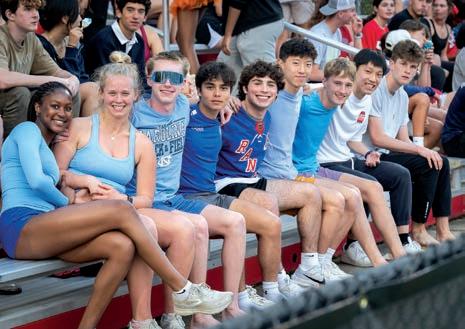

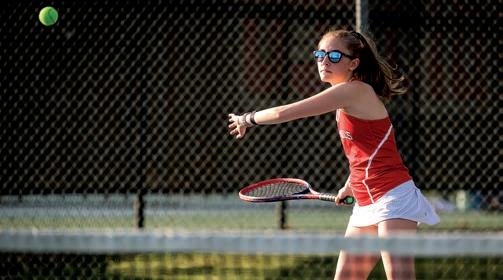

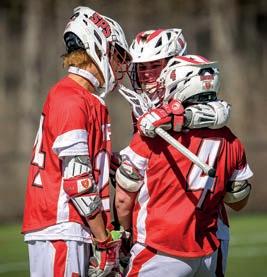
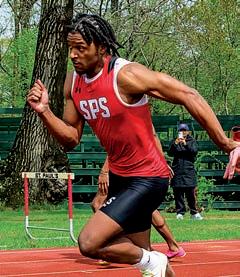
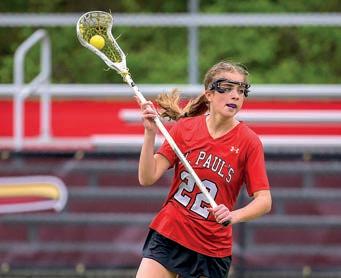
An often cold, rainy spring couldn’t keep Big Red athletes on 10 teams from having a successful season that included Aedyn Kourakos ’26 setting records for the girls track and field team in the 800m and 1500m. Twenty-two members of the Form of 2025 participated in interscholastic sports during every term of their time at SPS.
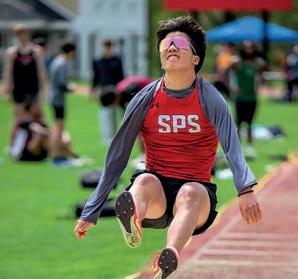
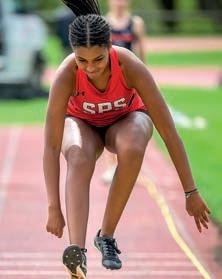
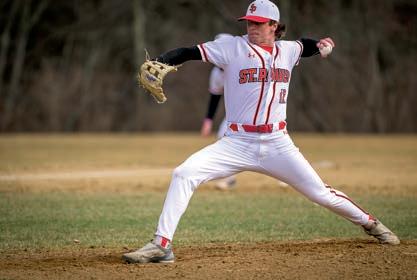
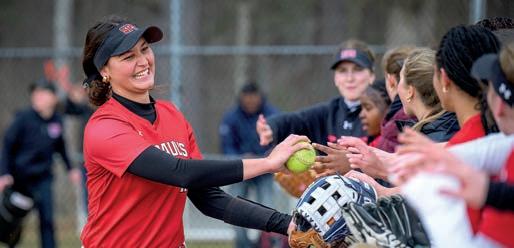
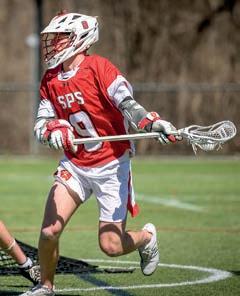

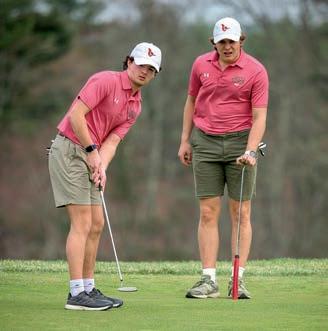
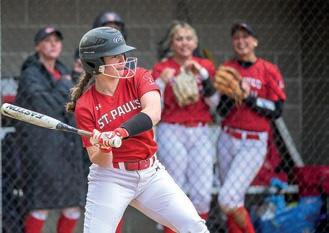

In Pursuit of Excellence in Character and Scholarship
On Saturday, May 31, SPS students f rom all forms were recognized in a s pecial awards ceremony that celebrated their scholastic and extracurricular accomplishments, talents and service to the greater good. Among the 37 academic awards was the Charles S. Knox Memorial Cup, awarded to the student of the graduating form who has attained the greatest distinction in scholarship during their years at St. Paul’s School. The 20 athletic awards included the Gordon and Loomis Medals, awarded to the best all-around boy athlete and the girl who has made the greatest contribution to the School’s athletic program, respectively.
THE KNOX CUP
By the time Olivia Hu ’25 collected The Prize Presented by the Sixth Form of 1873 for the best performance in an English course; The Spanhoofd Prize for the highest rank in German; and The John Hargate Medal, awarded to the student who attains the highest rank in mathematics, it was no surprise when she was also called forward to receive The Charles S. Knox Memorial Cup, given by the Lord Fermoy of the Form of 1905 in memory of Charles S. Knox, a teacher at St. Paul’s School from 1872 to 1920. Hu, from Shanghai, China, was a Chapel Warden and a member of the Chapel Council, a member of the alpine ski and JV volleyball teams, took
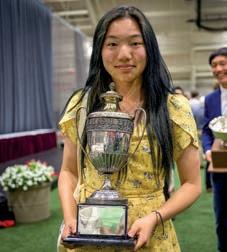
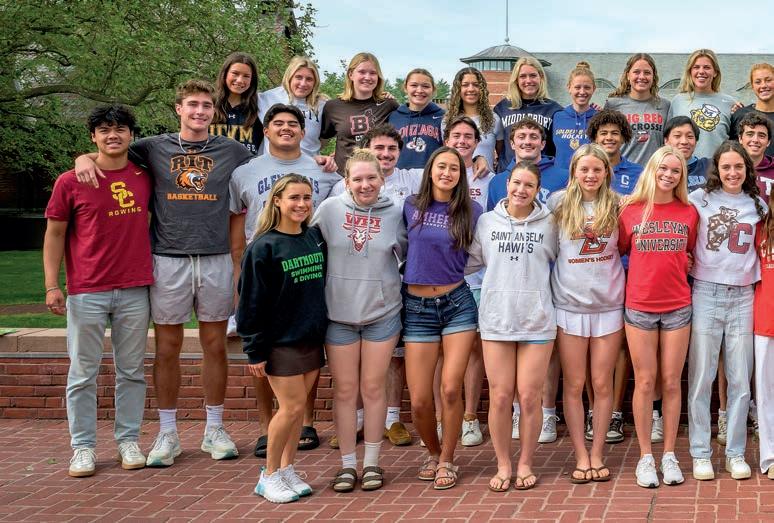
LET THE GAMES CONTINUE
In a graduating form of 154 members, more than three dozen student-athletes will continue
in
their athletic endeavors
lacrosse, basketball, baseball, cross country and track and field, diving, football, crew, hockey, softball and squash at these colleges: Army, University of Vermont (2), Lehigh, Johns Hopkins, Michigan, Boston College, Duke, University of Delaware, Wesleyan (2), St. Anselm, Hamilton, Western New England, Middlebury (2), Amherst (3), Trinity (2), Yale, Cornell (2), Harvard (2), Denison, WPI, Dartmouth, Princeton, RIT, Gonzaga, Washington and Lee, Bates (2), Colby (2), St. Lawrence, Cortland State, MIT, Kenyon and Columbia .
Olivia Hu ’25 earned the Knox Cup.
part in theater productions, and more. She will attend Yale.
Hu made one last trip to the stage to receive the Rector’s Award, given to graduating Sixth Formers who, through selfless devotion to School activities, have enhanced the lives and improved the community shared by all at St. Paul’s School. Other recipients of the Rector’s Award were Meg Bohan, Liv Blanchard, Ian Chang, Quinton Delorey, Lauren Edouard, Allison Hu, Enoch Huang, Maya Lokhandwala, Lulu Mangriotis, Lucas Miller and Gretta White.
THE GORDON MEDAL
The 134th recipient of the Gordon Medal, Teigan Pelletier ’25 of Maine, will be remembered in Millville for his talent, work ethic and competitive spirit.
Pelletier was a standout in football, basketball, and track and field. On the football field, he earned the title of Evergreen League Player of the Year, an honor that speaks to his
skill and his leadership. On the basketball court, he was a force in every game, and consistently one of the best players on the floor. In track and field, he excelled in all events he entered, earning NEPSAC All-League honors for both high jump and javelin.
Pelletier leaves a legacy at SPS of excellence, consistency and team-first mentality as he moves on to play football for Harvard.
THE LOOMIS MEDAL
Lily Fitzpatrick ’25 of Montana, the 54th recipient of the Loomis Medal, was recognized as a truly exceptional student-athlete whose impact on the School community will be felt for years to come.
During her time at St. Paul’s School, she competed in volleyball, wrestling and crew, but it is in wrestling where her legacy shines brightest. As a four-time All-American and a 2022 National Champion, she didn’t just win titles, she broke barriers. Her determination, grit and passion for the sport inspired other
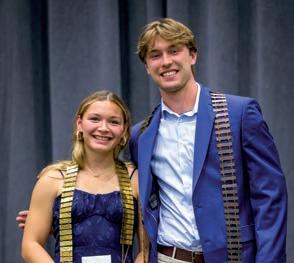
girls to step onto the mat, leading directly to the formation of the girls wrestling team.
A trailblazer, a teammate and a role model, Lily will row for Gonzaga.
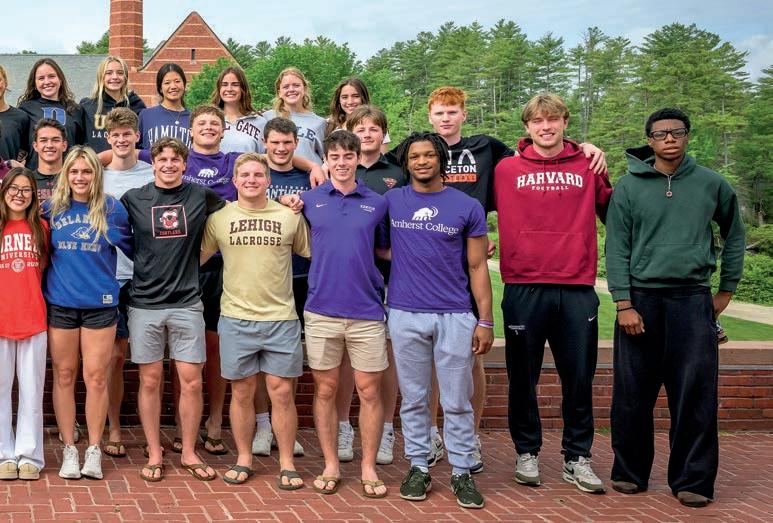
Sixth Formers Lily Fitzpatrick and Teigan Pelletier earned the Gordon and Loomis Medals.
Prepared to Do Hard Things Well
The 154 graduates of the Form of 2025 take with them the tools they need to flourish.
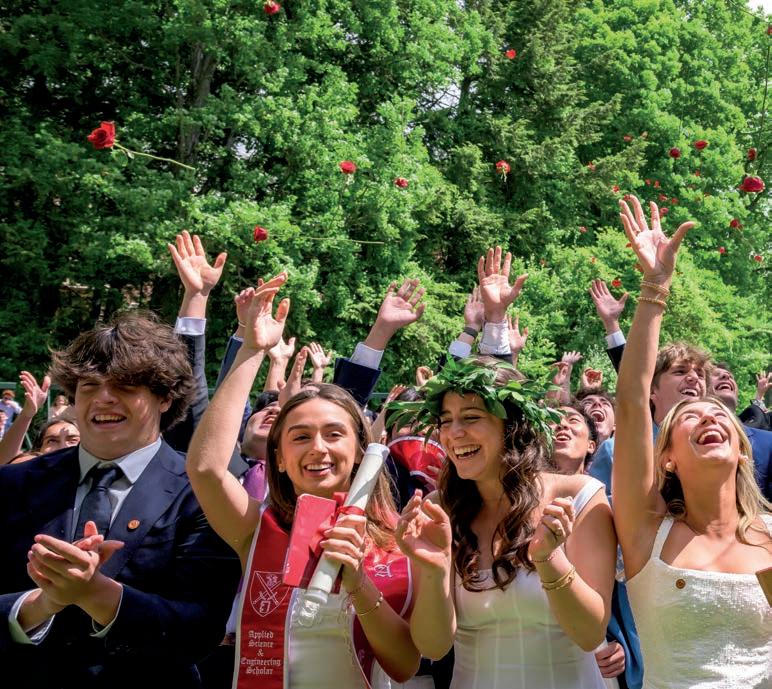
Masks were still the norm in the fall of 2021 when they arrived in Millville, but when the members of the Form of 2025 crossed the stage on Graduation Lawn on Sunday, June 1, their broad smiles were on full display.
“What an incredible future beckons you on this beautiful, fresh morning by the pond, and what opportunities you’ve had to grow up here with the challenges and delights and hard times and good times, with people who love you and see and expect the best of you,” said Fourteenth Rector Kathy Giles in remarks that offered reflections on what it means to flourish in an uncertain and ever-changing world. “Yes, you are leaving, but you can bring all of this with you throughout your lives.”
As a crisp breeze carried across Lower School Pond to the graduating form and family members gathered from
across the globe, Giles spoke about the manner in which the School prepares its graduates to do hard things well, to nurture community, and to truly believe that the we is greater than the me. “What we make together is so much greater than the sum of our parts,” she said. “And here at St. Paul’s School, when we invoke that beloved School Prayer, we embrace the inspiration of the Love Divine with us, among us and between us. Just because your chapel days are over doesn’t mean their inspiration is any less valuable.”
Later, Giles noted that she is often asked about the value proposition of a St. Paul’s education. “It’s an important question for us to be able to answer,” she said. “Yes, this experience is expensive, requiring financial, physical and emotional investment. … What are the elements of value that we add beyond these diplomas, this work that you’ve started now and will carry forward for the rest of your life?
KRISTIN DUISBERG
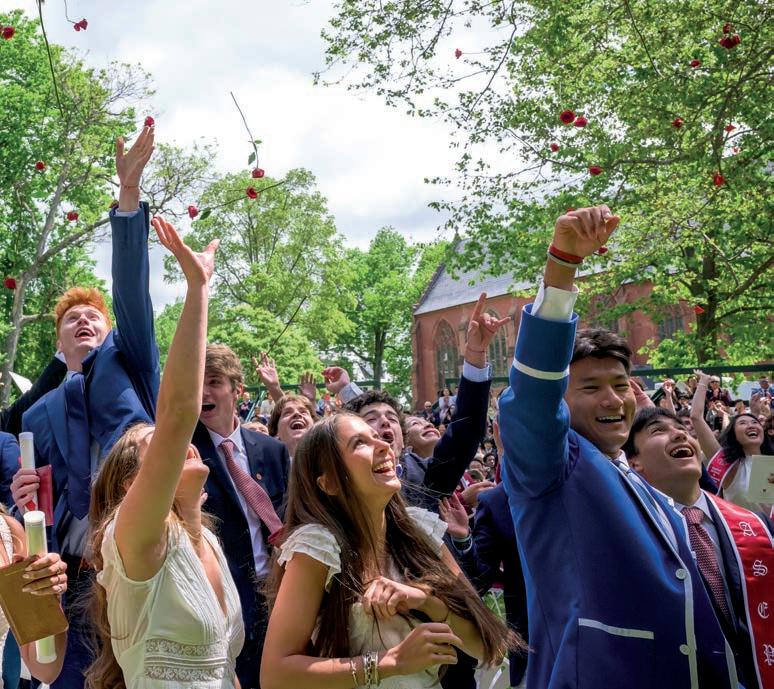
I think there are roughly five: a foundation, a toolkit, a sense of purpose, a community and a soul. … We’ve strived and will continue to strive to respect, to develop, to inspire, to grow these elements more here on the grounds every day and wherever your life takes you. … I hope it feels true to you and will help you in the coming years.”
In his remarks, Sixth Form President Kevin Wu demonstrated how the form has embraced their Rector’s message and insights, sharing, “There are two simple ideas that we have cultivated so well at SPS that we must carry forward to our next steps. Number one, compare yourself not to others, but to the you of yesterday. Oscar Wilde once said, ‘Be yourself, everyone else is already taken.’ … My second point, which I believe is the most important principle for all of life, is that good character soars above all that we do. Character trumps all that we
do with our talents and goals and on our adventures. Being a good person is the most important value.”
The culmination of years of academics and athletics, artistic performances and opportunities for personal, social and emotional growth, the Graduation Ceremony was also the culmination of a weekend of activity. Festivities began on Friday evening, May 30, with an SPS orchestra performance and continued Saturday with the Halcyon-Shattuck club crew races; the Latin Play performed by Classical Honors students; and an awards ceremony that recognized academic, athletic and community achievements. Saturday also included a Baccalaureate Service with Will Ahmed ’08; the Sixth Form parade and dinner; and an emotional Last Night Service in the Chapel of St. Peter and St. Paul as members of the form marked their final evening together as St. Paul’s School students.
“
… WHAT DO YOU WANT? FIND YOUR INNER VOICE AND GO INWARD TO ANSWER THAT QUESTION. LISTEN TO YOURSELF BEFORE YOU LISTEN TO OTHERS. MANY PEOPLE GO THROUGH LIFE TRYING TO FOLLOW SOMEONE ELSE’S IDEA OF SUCCESS. YOU MAY NOT KNOW EXACTLY WHAT YOU WANT YET, AND THAT’S OKAY. WHAT MATTERS IS THAT YOU STAY CURIOUS LONG ENOUGH TO FIND OUT, BECAUSE THE TRUTH IS THE ONLY PERSON WHO CAN TELL YOU WHAT YOU WANT IS YOU. YOU BUILD CONFIDENCE THROUGH CONNECTION, PREPARATION AND SELF-DISCOVERY. LIKE ANYTHING BUILT, IT TAKES WORK. … YOU’LL BE TEMPTED TO WAIT UNTIL YOU FEEL CERTAIN. DON’T WAIT. START NOW.”
— 2025 BACCALAUREATE SPEAKER WILL AHMED ’08 Founder and CEO of WHOOP

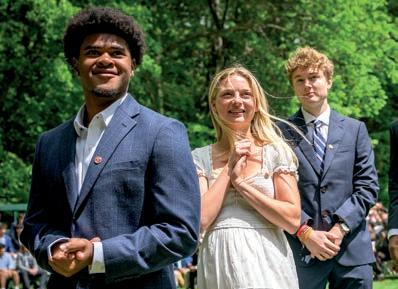
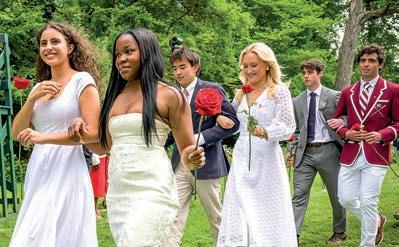


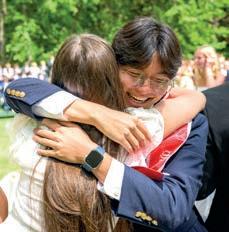
WATCH HIGHLIGHTS FROM GRADUATION
PHOTOS: Ben Flanders, Amanda Sabga and Michael Seamans
Celebrating Faculty Milestones
Thanking and commemorating members of our community for all they have contributed to the School
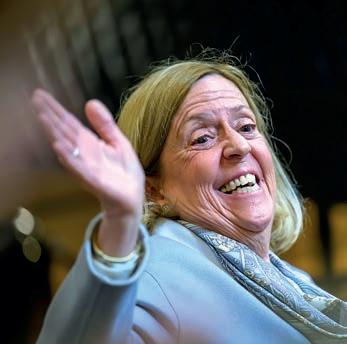
Jennifer Hornor | Retired
Auf Wiedersehen: German teacher retires after 47 years at St. Paul’s School
With a career that has spanned nearly 50 years, it’s perhaps not surprising that German Teacher Jennifer Hornor blazed any number of new trails during her time at St. Paul’s School. She was the first woman to head an academic department — a role she retained for 26 years — and the first woman to hold the senior faculty seat in chapel. She developed an exchange program for the School with Humboldt Gymnasium in Leipzig, Germany, that ran for two decades and created the Language Center where students hone their linguistic proficiency and learn about other cultures. She introduced the popular Oktoberfest celebration that draws students every fall for German fare and Bavarian oompah music, and she was the driving force
behind several campus visits by world-famous cellist Yo-Yo Ma, her brother-in-law. She’s had two generations of St. Paul’s School students in her classroom, from more than a dozen families.
“One of my former students just let me know that her daughter is coming as a Third Former in the fall to take German and I had to tell her I wasn’t going to be here,” she says. “Nobody wants to say goodbye, but we have to.”
Hornor’s goodbye to St. Paul’s School comes a few years later than she had anticipated when she arrived in Concord in 1978 to teach German and French. Educated in Germany, France and the U.S., it was not her first time at the School, as she had been a German teaching intern in the summer Advanced Studies Program, an experience the native speaker says taught her how to teach the language. But shortly after settling in Brewster House, Hornor told her head of house, Classics Teacher Doug Marshall, that she thought she would stay two years maximum. “He looked at me, very serious, and said, ‘no, Jennifer, you’re a lifer.’ It turns out he was right. I loved my colleagues. I loved the students. It was easier than I imagined to stay.”
Not just easy to stay. The adviser of many years to the School’s Independent Study Program and the Student Council as well as the International Society and German Club, Hornor found it hard to leave. “I think we just have the most fabulous students,” she says. “I have been very reluctant to retire because I feel like I’m leaving them behind.”
“I HAVE BEEN VERY RELUCTANT TO RETIRE BECAUSE I FEEL LIKE I’M LEAVING [THE STUDENTS] BEHIND.”
In part, that reluctance comes from the fact that Hornor has been the School’s only German teacher since early in her SPS tenure. In a typical year she has taught more students than many other SPS faculty members (this past year, she had 67), serving as their guide through the entire St. Paul’s School German language curriculum — a journey that’s as much about helping them see the world from another point of view as it is mastering pronunciations and grammatical constructions. The arrangement, she says, is one that not only allowed her to get to know her students particularly well but also allowed them to get to know one another particularly well.
“It’s a little bit like in Germany, where you are with a class and you have all of your subjects with that same group of students and you go through many of your years with one another,” she explains. “There’s a special dynamic and affection that develops because they have spent so much time together.”
That dynamic has frequently transcended students’ time in Hornor’s classroom. She’s been the regular recipient of emails from former students who are excited to report that they’ve reunited with friends from Schoolhouse in their college classrooms, and “urgent” messages from other graduates, now studying abroad, who have descended together on Munich from their respective universities for Oktoberfest and need to know the best place to buy a dirndl or some lederhosen.
And the connections don’t end with college graduation. Every student who passes through Hornor’s classroom memorizes Goethe’s “Erlkönig,” an eight-verse poem set to music in the German tradition of lieder. “So they learn all of this poetry, and this wonderful 19th century music that was composed for it, and 15 years later they are here for a reunion, and they’ll come running up to me and start to recite the poem,” she says. “They invite me to their weddings; they send me pictures of their babies.” They are connections that bear out how utterly Hornor has realized her mission as a teacher: “I really want them to fall in love with the German language so it will always be a part of them,” she says.
Hornor’s former students include her own children, Christopher ’05 and Charlotte ’07. And even as it is difficult for her to imagine not providing a warm Willkommen to the School’s newest German learners next fall, she is looking forward to moving to Boston, where her sister, Jill, and daughter both live; enjoying city life and spending more time with her grandchildren, who are 5, 3 and 2. It is with a smile that she says the youngest, who will be 3 in the fall, will attend the German International School Boston — no doubt laying the groundwork that will extend the legacy of German language excellence in Hornor’s own family.
With her retirement, Hornor’s longtime friend and colleague Jeanne Windsor, who came to St. Paul’s School the same year as Hornor to teach French, will move into the senior faculty seat in chapel. As much as she will miss her close friend, Windsor takes comfort in knowing Hornor’s impact on the department will endure for students and teachers alike. “As our department head, Jennifer’s extraordinary stewardship of all the different languages, cultures and personalities our department embodies brought cohesiveness and sense of purpose to our mission,” Windsor says. “She created a unique esprit de corps that has inspired us all.”
— Kristin Duisberg
Theresa Gerardo-Gettens | Retired
Human anatomy and physiology teacher hangs up her lab coat after 35 years at the School
In a previous life, Theresa Gerardo-Gettens conducted research in a university laboratory and became accustomed to wearing the appropriate attire. That habit proved hard to break and stayed part of her daily life at St. Paul’s School — for the last 35 years, the beloved science teacher donned a white lab coat every day. Her students have noticed.
During this year’s Spring Visit Days, students in one of Gerardo-Gettens’ classes paid tribute to the retiring teacher by mimicking her personal dress code, confusing some visiting parents until the meaning was explained.
“The students put on their lab coats as a way of playfully tweaking me,” Gerardo-Gettens says, “but also because they wanted me to be proud of them. It showed me how they enjoyed being together as a class.”
In her three and a half decades at St. Paul’s, “Dr. G” instilled her sense of community into her students, advisees and the athletes she’s coached. The daughter of an Army officer, Gerardo-Gettens traveled extensively with her family as a child before spending her formative years on the campus of the U.S. Military Academy at West Point, where her father was a calculus professor. It was there that she came to appreciate the idea of living in community. She earned her undergraduate and master’s degrees at the University of New Hampshire, where she discovered an affinity for human anatomy and physiology, a discovery that shifted Gerardo-Gettens’ long-held belief that she’d pursue a career as a college basketball coach.
It’s funny now that Gerardo-Gettens ended up at St. Paul’s by accident. Having recently completed her Ph.D. in metabolic physiology at the University of California, Davis, she was intent on finding a teaching position at a small college. She responded to an ad for a biology instructor in the Chronicle of Higher Education, assuming St. Paul’s was a small liberal arts college. When she realized she was mistaken, the idea of living on campus the way she had with her family at West Point, while teaching science and coaching basketball (and other sports), remained appealing. The School was equally impressed with her, heeding the recommendation of the hiring committee, which urged, “Don’t let her get away!”
“I thought I’d died and gone to heaven,” she recalls thinking at the time. “We’re here to educate and care for the kids entrusted to us. It resonated with me, and I knew

that was how I wanted to spend my life.”
In living that life, Gerardo-Gettens made a home for herself and her family, including husband Dan and children Katelyn ’07 and Alexander ’11. At the same time, she prioritized making St. Paul’s also feel like home to generations of students. In her first year in the classroom, she taught SPS Trustee Doug Asano ’92, whose daughter, Anna ’25, was a student of Dr. G’s in her final semester.
G erardo-Gettens remained at St. Paul’s primarily because she found deep purpose in her work. She treasured teaching a subject she loved, while also living with students in the dorms and coaching them in the athletic arena. Additionally, she felt a calling to help “raise kids, educate them, and to try to help them grow into young people of character and integrity.” In contemplating her final days as a faculty member, she adopted Khalil Gibran’s words to describe her work as love made visible and adds that St. Paul’s “really has felt like much more than a school; it’s felt like a family to me.”
lifelong friend. “One of Dr. G’s greatest powers,” Patzer says, “is that everyone she teaches and meets falls into the lifelong educational, personal and spiritual embrace of the mother pelican.”
Perhaps most important is that Gerardo-Gettens genuinely adores teenagers and has continually found herself inspired by their resilience, curiosity and joy. She’s valued daily chapel for the opportunity to connect with her students and colleagues, to face one another across the aisle of the sacred space and share a common purpose. It’s that feeling she will miss most as she retires to her home in Concord, close to the SPS campus, with plans to spend more time with family, travel and turn her own bountiful sense of purpose toward something new.
“WE’RE HERE TO EDUCATE AND CARE FOR THE KIDS ENTRUSTED TO US. … AND I KNEW THAT WAS HOW I WANTED TO SPEND MY LIFE.”
Former student Trevor Patzer ’92, whose daughter, Sofie, will enter the Third Form in the fall, calls Dr. G a “once-in-a-generation educator.” Patzer considers himself fortunate to have been a student in her biology class in her first year of teaching at SPS and considers her a
As she makes her way into this new life, away from the school that has meant so much to her for so long, Gerardo-Gettens references her favorite hymn, “For the Splendor of Creation,” specifically the line that reads “for the common life that binds us through days that soar or plod.” And as she hangs up her lab coat, she’s reminded that the life that has bound her to her students and colleagues almost wasn’t.
“I’m endlessly grateful,” she says, “for having landed at St. Paul’s by mistake and having lived this life.”
— Jana F. Brown
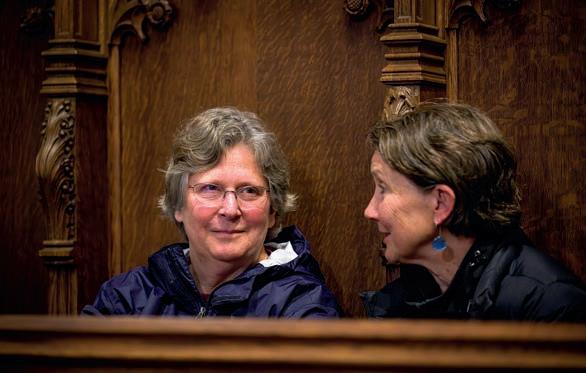
Victoria Ryder | Retired
A dedicated science teacher retires after 32 years of making her classroom a supportive space for SPS students
The January 1992 issue of TIME magazine, featuring the “Best of 1991” in building design, praised Ohrstrom Library, calling it one of architect Robert A.M. Stern’s “best works.”
By some form of serendipity, the article caught the attention of Victoria “Tori” Ryder, then a science teacher at Kent School, and led to the launch of her 32-year career at St. Paul’s School.
“When you start off young at one school, you’re always looking around because you don’t know if you want to be at the same place your whole life,” says Ryder, who spent the first 11 years of her career at Kent in her home state of Connecticut. “The article piqued my interest. I sent a letter, and they asked me to come for an interview.”
of Vermont, where she played soccer, lacrosse and club hockey. She later earned a master’s in chemistry and geology from Wesleyan University.
While she was interested in science from an early age, Ryder saw boarding school as the perfect place to stay involved in sports as a coach while also teaching. In her years at SPS, Ryder helmed soccer, hockey and lacrosse teams at all levels. As she transitioned away from those coaching responsibilities, she discovered a genuine preference for the classroom.
“I’M STILL GETTING QUESTIONS I’VE NEVER HAD BEFORE, WHICH I FIND FASCINATING. THAT HAS NEVER GROWN OLD.”
In the years since she arrived at SPS, Ryder has been driven by her mission to make her students confident in their science skills while instilling in them a love of learning. Ryder herself graduated from Taft School, then earned a B.S. in plant and soil science from the University
“It turns out that teaching has always been my favorite part because you have such close interactions with the students, and the students change every year,” Ryder explains, noting that, to the end, she was getting questions she’d never heard before — something she finds fascinating.
Ryder prides herself on creating a safe and supportive space for students in her classes and advisee groups. Her open-door policy has become a hallmark of her work at the School. She’s been recognized for this extraordinary care with a Form of 1973 Mentor Fellowship and with the de Sa Advising Award. “It’s not what you say, it’s how you make them feel,” she says of her students. “I hope I make them feel good about themselves.”
Former advisee Lane Letourneau ’17 is the one who nominated Ryder for the de Sa honor, inspired by her
teacher’s “infectious yet quiet enthusiasm for her students.”
“She has a nurturing energy that places her in a category all her own,” Letourneau says, “and that’s exactly why she deserved this award.”
Letourneau was moved when Ryder emailed her on the first day of classes at Cornell to wish her a great day. Ryder followed up a week later to “make sure I was happy. She continually shows up for the people in her life.”
Lidia Zur Muhlen ’24 got to know Ryder while taking chemistry as a Fourth Former. It was Ryder who encouraged her to try advanced chemistry the following year and who was equally supportive when Zur Muhlen enrolled in her Chemistry 2 elective instead. Zur Muhlen remembers feeling safe in the space Ryder created and praises her former teacher for caring about the whole student. She also credits Ryder for inspiring her to delve deeper into STEM at SPS through the Applied Science and Engineering Program.
“By going to office hours, I developed one of my first close relationships with a teacher at St. Paul’s, which provided me with support and confidence,” says Zur Muhlen, who just finished her first year as a Jefferson Scholar at the University of Virginia. “While providing help with challenging problems, she also offered genuine life advice and humor when I was lost. I always knew her classroom was a place I would be welcomed with warmth and guidance.”
In addition to her duties as a teacher, coach and adviser, Ryder served as head of house for many years and as co-adviser to the Gay/Straight Alliance. She also has been a trailblazer at St. Paul’s. In 2001, Ryder and her partner, former faculty member Annie Clark, became the first gay couple to live together in on-campus housing, a seminal moment that prompted further policy changes. They welcomed their son, Jonathan, in 2002.
“ There were some pretty difficult times during that process of trying to get housing for same-gender couples,” Ryder recalls. “I know there were some reservations, but we felt supported by the faculty.”
As Ryder looks to the future, she’s still working out what life away from teaching might look like. She plans to travel (with hopes of a dream trip to Antarctica), spend time in her garden, take advantage of a more flexible schedule and find new ways to give back.
She’ll miss the tight-knit community of St. Paul’s, a home to her, Annie and Jonathan for decades. She’s also sad to say goodbye to the daily exchanges with students, but will remain forever grateful for the chance to have made a lasting impact on so many young lives.
— Jana F. Brown
Davies Cabot | Retired
Fair winds and following seas to science teacher after 20 years at SPS
Outside, it was a sleepy, rainy spring morning. Inside Science Teacher Davies Cabot’s marine biology classroom, though, engaged teenagers were learning how sea creatures adapt to life on an ocean reef.
Lessons learned after watching multiple videos: You do not want to step on a stonefish; sea cucumbers are tasty; and mantis shrimp are perfect examples of why you should never underestimate your opponent. Then, Cabot set small groups to drawing different types of coral.
It was the last time through this curriculum for Cabot — after teaching for 39 years, 20 of them at St. Paul’s School (along with the additional roles of lacrosse coach, past department chair and head of house), retirement was beckoning. Or rather, his next adventure, which will include building a charter fishing business based on
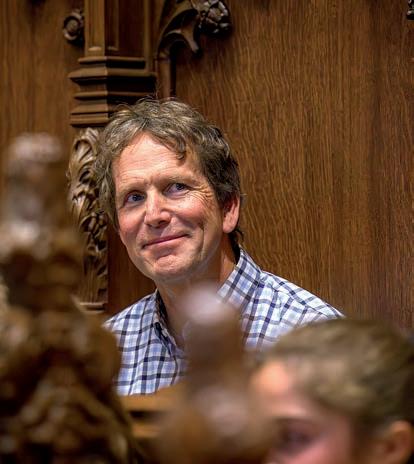
Martha’s Vineyard and spending more time with family. Family, education and the sea — these are the throughlines of Cabot’s life.
The son of two educators, Cabot grew up on the campuses of private schools and spent summers at his family’s home on the Vineyard; his earliest memories include heading out to the island’s South and Katama Beaches in an old International Travelall for a day of splashing in the waves and a cookout.
After graduating from Boston College with a B.S. in biology, Cabot had an opportunity to teach in Hawaii and decided to give it a try. In the decades since, and after stints at four other schools before landing at St. Paul’s, he developed a teaching philosophy that is just as much a mission: to get kids interested in the topic, whether he’s teaching biology, chemistry or marine biology.
“Whatever we’re talking about, I try to make it as interesting as possible so that the kids are engaged and excited about coming to class,” he says. “I try to have a fun atmosphere in the classroom and to get the kids to work hard but not bury them with work. That’s always been my overarching philosophy.”
As one student added a jaunty top hat to her colorful drawing of a coral, Cabot noted that he usually relates to his students through humor — he’s found that kids are much more relaxed when he’s relaxed. “Taking an interest in what they’re doing or saying about what’s happening in their lives is usually one of the keys to connecting with kids,” he says. “The best teachers, and coaches, are those who can relate to the students and understand the dynamics of the room. Yes, they need to be knowledgeable and well prepared, but being able to understand kids and know when you can really push them and when not to … that makes for someone the kids can relate to and learn from.”
The students and the community he found at St. Paul’s School kept Cabot inspired and returning for 20 years. He and his wife, Ann, raised their three children, Jackson ’20, Ali ’25 and Chili, on the grounds (Cabot had two of them in his marine biology classes). Now, though, it is time to bid farewell and ready Compass Rose, the 26-foot Regulator he bought from his cousin almost a decade ago, for a summer on the seas without thoughts of lesson plans or the first day of school.
“I’ll miss St. Paul’s, but it’s been 20 very good years,” he says. “It’s been an honor and a privilege working here, and a great opportunity to have spent time with these kids and this faculty.”
— Kate Dunlop
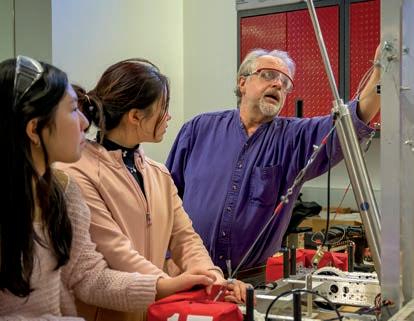
Will Renauld | Retired
The self-described “tinkerer” and science teacher retires after 12 years at SPS
Tinkering is a skill Will Renauld acquired at a young age. His journey to becoming an applied science and engineering, robotics and physics teacher at St. Paul’s School began when he developed an affinity for hands-on work and mechanical problem-solving while working in the family business: a traveling carnival.
Working with his brother, the teenage Renauld helped to maintain and operate a variety of carnival attractions, from a revolving pony cart ride to Ferris wheels and merrygo-rounds, traveling around New England with his father — and a toolbox. At 18, Renauld even became a statecertified ride inspector in Massachusetts. The stint in the amusement industry sparked his lifelong interest not only in tinkering, but more formally in engineering.
“My brother started the business off small. He didn’t tell my parents at first and showed up with the pony cart ride that we fixed up,” Renauld recalls. “Eventually it got to the point where we’d start booking with much larger operations that needed more rides. So, we traveled from New York up through to Maine every week in the summers. That’s how I paid my way through college.”
Renauld studied industrial arts education at Fitchburg State, later earned a master’s in adult and occupational education from the University of New Hampshire, and ultimately transferred his skills into a long career in teaching. He taught at Merrimack Valley High School and Hopkinton Middle/High School for more than a decade before leaving for 10 years to work as a senior designer at Provan and Lorber Engineering in Contoocook.
He was back at Hopkinton, drawn by an opportunity to pilot an engineering program that felt too good to pass up, when he connected with longtime SPS faculty member Terry Wardrop ’73 at a FIRST Robotics competition and made a comment that set him on his path to the School.
“ The SPS team was having a problem with its robot, and I gave Terry a couple of hints; one of them was correct,” Renauld says. “I jokingly said to Terry, ‘If there’s ever a position open at St. Paul’s, let me know.’”
The following summer, Wardrop did let Renauld know about an open position, one teaching Engineering and Design at the Advanced Studies Program (ASP). After a few summers of instructing at ASP, Renauld filled an open position in the SPS Science Department, joining the School community full-time in the fall of 2013.
In his dozen years on the faculty, Renauld took his untraditional path to teaching and worked to create a welcoming, supportive environment for his students. “I’ve always tried to be an adult who kids can connect with,” Renauld says. “Sometimes it works, sometimes it doesn’t, but that’s always been my goal.”
In addition to teaching and helping to guide SPS students through the annual FIRST Robotics competition, Renauld became a valued adviser and colleague. Based in the Lindsay Center for Mathematics and Science, you won’t often find him in his office — he prefers to be in the robotics lab downstairs, where he’s got “all this cool stuff to play with.”
For his excellence in teaching, Renauld was honored with a Form of 1973 Mentor Fellowship. Prior to his arrival at SPS, Renauld was recognized by Hopkinton Public Schools with a community service award and as Teacher of the Year. In the summers (and at SPS during the school year), he has continued giving back through Go Baby Go, a program that provides modified, ride-on cars to young children with disabilities so they can move around independently. With Renauld’s guidance, students have built some 70 cars for the nonprofit, including 10 through the SPS Applied Science and Engineering Program and independent studies.
“As far as I’m concerned, that’s the best thing I’ve done as a teacher,” Renauld says of Go Baby Go. “I tell students, ‘Make all the money you want, but do some good with it.’”
While Renauld feels it’s the right time to slow down, his retirement will be anything but idle. He’ll be working part time as an academic coach for students at a local charter school, spending time with his family (and the family’s dog), fixing up his old farmhouse in Penacook (“That will keep me busy forever,” he says.) and reconditioning his 1922 Velie Touring Car.
While he’ll miss the daily interactions with his students at St. Paul’s, Renauld’s legacy will live on through the countless young people he’s inspired to embrace the joy of hands-on science.
— Jana F. Brown
Scott Bohan | 25 years
Mission driven, the chief advancement officer draws inspiration from the community around him
As a middle schooler taking a seat in a St. Paul’s School rink to watch childhood friend and neighbor Troy Spencer ’91 play hockey, Scott Bohan ’94, P’24,’25 figured his life would look a lot like his parents’: he’d attend high school in his native Manchester, New Hampshire; go to an in-state college; and live in his hometown doing something that was too far off to pin down yet already felt predictable.
He left the School that night thinking, “What the heck is that place?”
“ That place” turned out to be where Bohan would go to high school; where he would meet his wife, Vice Rector for Academics and Faculty Lori Bohan, and raise their two children; and where he would dedicate 25 years — and counting — to working in Admissions and Advancement, coaching and advising.
“Boarding school was never anything anyone in my working-class family had ever thought about or even knew about, but I applied and got in and got financial aid,” Bohan says. “I had no idea what I was getting myself into. My world was literally the West Side of Manchester; we all looked alike and came from very similar backgrounds. Then I came here and met people from all over the world. Home was 20 minutes away, but I may as well have been on the moon.”
While the first year, especially, was an eye-opener, teachers and students helped Bohan adjust and excel, and to prepare for college, which ended up not being in New Hampshire, or at Notre Dame, as he’d begun to hope, but
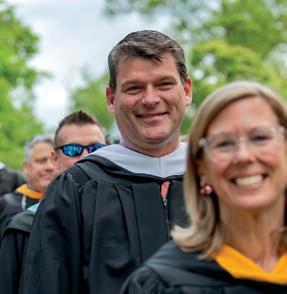
at Colgate, where he played four years of varsity lacrosse and graduated with honors in education.
“I took some education classes and just loved every aspect, so I thought I was going to be a teacher of young kids,” Bohan says. “There aren’t a lot of men in that world, and I thought there could be an opportunity for me to do some good work.”
After graduation, deterred by the reality of student loans and a teacher’s salary, Bohan landed in the admissions office at Cushing Academy instead of a classroom.
“I went there for two years and loved it, but it was in the middle of nowhere — kind of a tough spot to be at 23,” he recalls. When St. Paul’s called, he jumped at the opportunity to continue his admissions work closer to home and returned to his alma mater in 2000.
In the 25 years since, Bohan has moved between the Admissions and Advancement offices, working through roles as an admissions counselor, senior associate director and director of financial aid and dean in the former and in annual and leadership giving in the latter; he has served as chief advancement officer since 2021. Throughout the years, he has remained dedicated not just to the School’s mission but also to building strong teams to help talented people to thrive while supporting students as a coach and adviser.
“Coming back and looking at the School through the eyes of an adult, I was immediately inspired by the students. They’re such nice kids, so smart and so talented,” he says. “And then to see the dedication of the adults in the community that make all those things happen for the kids — as a student, you just think that’s what they’re supposed to do, but as an adult, you recognize they’re choosing to do that. To come back into the environment with a different lens and really appreciate the kids and the adults, the staff and faculty, that’s one of the reasons that got me to stay.”
For Bohan, working on the far ends of the student experience has plenty of similarities. “In my admissions role, I would tell the story of St. Paul’s School and ask families for their children,” he says. “Now, I tell the School’s story to alumni and parents and ask for their financial support. It’s very similar work, and it all serves the mission of the school, which is such an important one.”
This year, for the first time in his tenure at St. Paul’s, Bohan didn’t coach, though it’s something he’s loved whether working with the football, boys and girls hockey, or boys lacrosse teams. As a coach, he was able to realize his teaching aspirations and directly shape students’ experiences, helping them to be their best selves on good days and bad.
Whether guiding an admissions, advancement or athletic team, Bohan’s leadership style is based on maintaining perspective and taking a deep breath to work through tough moments — something he learned from his mother, a nurse, and his father, a Vietnam War-era Marine.
“I try to surround myself with talented, passionate people who care about the School, their jobs and the kids,” he says. “I try to give them everything they need to succeed without getting in the way of the great things they’re all capable of doing.”
As a teenager, Bohan had no idea what he was capable of, and he couldn’t have known the significance of attending that long-ago hockey game. Occasionally when walking the grounds these days, he will see something that reminds him of his high-school self. Mostly, though, what he sees is his home — and his family’s home, with the waterways where he taught his children (Conley ’24, now at Trinity College, and Meg ’25, Yalebound this fall) to fish as his father taught him, and the athletic fields where his children first played as toddlers and then competed as Big Red athletes; every space holds multi-layered memories.
He never intended to stay 25 years, but it’s been the right place to be.
“I love working here. This is such an important place, one that is truly trying to create people who are going to go off and do good work to make the world better,” Bohan says. “I’m proud of the work I’ve done to be part of that. I hope I’ve been the role model I’ve tried to be.”
— Kate Dunlop
Scott Reynolds | 25 years
Teaching, researching and coaching create the foundation for tremendous impact
When Scott Reynolds and his wife, Susan, arrived in Millville just before the start of the school year in 2000, they moved up from Massachusetts with some college-era furniture and a patio set — despite the fact that Susan was nearly nine months pregnant with their daughter, Catherine ’19.
“We brought all the temporary stuff here and left the nice stuff back in West Boylston, where we had a house, because we were just going to do this for a year,” Reynolds recalls. “It was just an itch that I needed to scratch. And then a year went by fast, so we tried another year, and then we started bringing all the furniture up.”
Reynolds laughs when he says that by the time he stopped to ponder the question of making St. Paul’s School their permanent home, Susan had already made up her mind. “She told me, ‘Oh, this is what we're doing,’” he says. “She had a group of faculty spouses she was friends with and a schedule that allowed her to do her consulting work part time; Catherine was going to the Children’s Learning Center and loving it; we had another baby [son Alex ’22] on the way. It was really just a great community experience.”
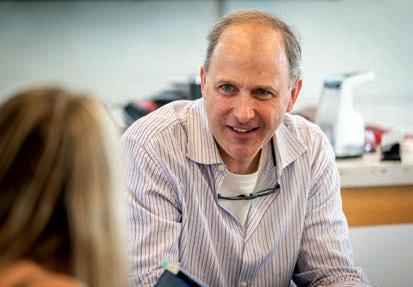
As of this summer, SPS will be what Reynolds has been doing for 25 years: teaching biology and chemistry courses, managing the tropical greenhouse at the Lindsay Center for Mathematics and Science, coaching the girls varsity volleyball team, and serving as a student adviser and sometime head of house. And while Reynolds says he never imagined staying at St. Paul’s for so long, in some respects his tenure seems almost inevitable: he grew up in Concord, and as a teenager would pass by the campus on his way to Concord High School every day, even if St. Paul’s School wasn’t on his radar for his own education.
biologist — and quickly became obsessed with the mammals and their ability to survive and reproduce under extreme conditions.
For more than two decades, Reynolds’ research has focused on a pair of issues related to bat survival: white-nose syndrome, a fatal disease affecting hibernating bats that has wiped out huge numbers of animals, and wind-turbine related deaths in migrating bat populations. The seasonal nature of that work and the predictability of the academic calendar has long made it possible for him to balance those two pursuits, feeding a need to keep his brain occupied in two very different ways. “I love the transition,” he says of school years in Lindsay teaching environmental science and botany followed by summers in the field banding bats, working with landowners and gathering data.
L ast fall, he became head of the Science Department, a role that has necessitated shifting his research program into a lower gear. It’s another transition that excites him. “I want to make a footprint on the Science Department,” Reynolds says. “I think we have the talent, we have the resources and we have the kids to do something really impressive here with new courses. I also want to help faculty stay engaged in professional organizations to make sure their skills and passions are carried into the classroom.”
“WE HAVE THE TALENT, WE HAVE THE RESOURCES AND WE HAVE THE KIDS TO DO SOMETHING REALLY IMPRESSIVE HERE.”
A self-described blue-collar kid, Reynolds was the first member of his family to graduate from college. He earned a B.S. in ecology and environmental science from McGill University and then a Ph.D. in organismal biology from Boston University; he got his first taste of boarding school life when a former lab colleague from B.U., who taught at Lawrence Academy, reached out about a one-year sabbatical position in the science department. “I found that I really liked it,” he says. “I liked the teaching, I liked the coaching, so when the year was up, I started looking around for positions. The search firm I was working with was said, ‘Well, there’s this school in Concord called St. Paul’s that has an opening,’ and I was like, ‘Yes, I know that one.’”
Not only an ideal place to raise his family — in addition to Catherine and Alex, Reynolds is father to Nick, a 2024 Concord High graduate — Millville also has provided the perfect environment for Reynolds to maintain the research program he launched in graduate school. Initially intending to study sea turtles, he instead connected with a professor who was a well-respected bat
This spring, for the first time in his SPS tenure, Reynolds taught only one course — Honors Chemistry. He’s handed down to one of his newer colleagues the environmental science course, a class created by Joel Potter in 1969 that he inherited when Potter retired in 2001. He’s also sharing oversight of the greenhouse he’s managed since the Lindsay Center opened in 2011 with Hannah McBride, a certified New Hampshire Master Gardener and spouse of Science Teacher Ben McBride.
L ooking back at his SPS career to-date, Reynolds says his favorite memories are tied to his children’s time here — not just coaching Catherine through an undefeated volleyball season and watching her receive the Lovejoy Science Prize at graduation, but also seeing Alex and Nick grow up on the grounds, skating at the Hockey Center, running on the fields, and nurturing the unique sense of self that each has carried into adulthood.
“And then there’s also the kid who comes back after graduating and tells you what you meant to them, and that the happiest and safest place they felt as a student here was playing basketball at your house with your own kids,” he says. “It's just like, wow ... I had no idea I had that kind of impact.”
— Kristin Duisberg

Celebrating Vision, Generosity and the Future
With its dedication, the Fleischner Family Admissions Center brings light to the School’s entrance and the heart of campus KATE DUNLOP

PHOTO: Michael Seamans
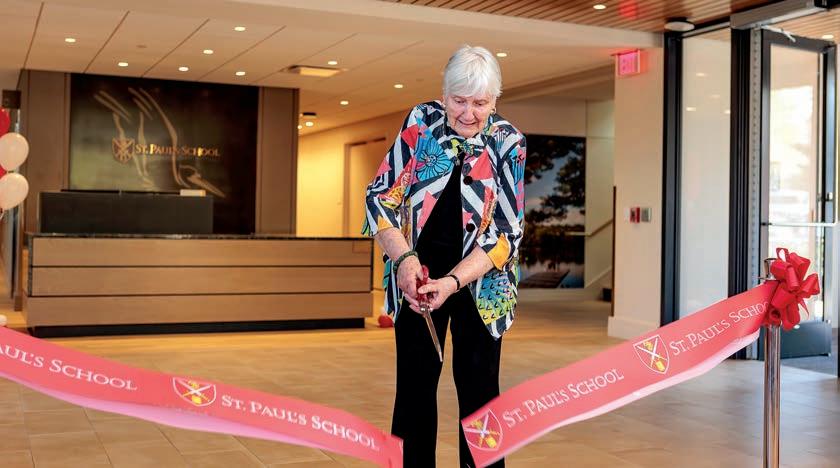
Les s than two years after breaking ground, St. Paul’s S chool dedicated the Fleischner Family Admissions Center on Friday, May 2. The festivities were capped off with a ribbon cutting by Leslie Fleischner P’89,’91, GP’20,’22,’23 who, along with her late husband, Hans, generously provided the lead gift for the building.
Located 200 yards inside the School’s entrance between Alumni House and the Lindsay Center for Mathematics and Science, the 16,000-square-foot center provides not only a welcoming and environmentally conscious new entry point to the School for prospective families and the SPS community, but also allows for Sheldon to return to student use at the center of campus.
In welcoming the standing-room-only crowd, Dean of Admissions and Financial Aid Dana Anselmi ’98 noted the excitement, anticipation and pride the St. Paul’s School
“It’s the embodiment of the kind of reinvestment in excellence that people who understand stewardship make for generations of young people who they will never know. What an incredible gift.”
community felt watching the building take shape. Adding that SPS is one of very few schools in the country to have a strategically designed space for working with families during the admissions process, Anselmi thanked the Fleischner family and the other donors who made the project possible.
Board of Trustees President David Scully ’79, P’21, in his remarks, called the day a celebration of vision, generosity and the future. Extending his deepest gratitude to the Flesichner family, he said, “Their generosity is more than a gift. It’s the embodiment of a core belief in education as a lifelong responsibility, and the belief that a St. Paul’s education must not only endure but thrive and remain available not only to the fortunate but to the deserving.” The family’s gift, he concluded, reflects something deeper than philanthropy — it reflects faith in a future they may never fully see but in which they firmly believe.
Fourteenth Rector Kathy Giles likened the center, with its glass-walled Great Room that glows at night, to a lantern at the gate of the School.
“A lantern at the gate is, after all, an old New England gesture of greeting, welcoming and kindness. It projects the generous spirit of friendship,” she said. “[This building] changes how we face the community and the first impression our prospective families have of us. It’s the embodiment of the kind of reinvestment in excellence that people who understand stewardship make for generations of young people who they will never know. What an incredible gift.”
St. Paul’s Trustee David Fleischner ’91, P’20,’23, representing the family that in addition to his parents, Leslie and Hans,
PHOTOS: MARY SCHWALM
Leslie Fleischner P’89,’91, GP’20,’22,’23 concludes the dedication ceremony with a flourish.
includes his wife, Julia, and daughters Margaret ’20 and Caroline ’23; and his brother, Chris ’89, and his wife, Dawn, and their children, Kay and Andrew ’22, recalled the conversation with Rector Giles that set the project in motion.
“We are so pleased to see the Fleischner Family Admissions Center rise up and become the lantern at the gate,” he said. Thanking those whose hard work and dedication made the project happen, he addressed the other donors who contributed to its success, saying, “your kindness and generosity are critical to what we were trying to achieve.”
What they were trying to achieve, he reminded those gathered, are the opportunities the new center creates in its own right as well as new opportunities for Sheldon, that iconic 1902 building at the heart of campus. For David and his brother, Sheldon was not only their library but a central gathering place. As student admissions officers, Margaret and Caroline spent a portion of each week at Sheldon meeting families to take them on tours of the grounds, and Andrew remembers it as the centerpiece of his favorite view on campus. For the younger generation, Sheldon was dark after business hours. Soon, though, its first and second floors will support academic and student life programming, with spaces for club meetings, teachers’ office hours, advising and tutoring sessions, and more. The offices of the Advanced Studies Program, the School’s five-week summer program for New Hampshire high school juniors and seniors, will relocate to Sheldon as well.
Wielding oversized red-handled scissors, Leslie Fleischner cut the ribbon and officially opened the building to enthusiastic applause. Throughout Anniversary Weekend, the Fleischner Family Admissions Center was a hub of activity, with the Great Room serving as a gathering space for receptions on Friday and Saturday nights and the granite patio offering space to sit and catch up while enjoying the view out over the athletic fields.
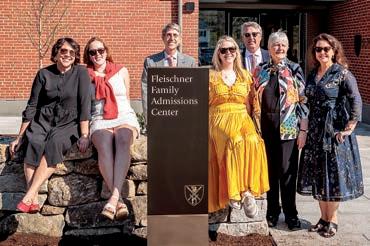
In Gratitude
Home to both the Admissions and Communications offices, the Fleischner Family Admissions Center includes dedicated student workspaces, three conference rooms, a 1,500-square-foot granite terrace and an admissions lobby that overlooks the glass-walled Great Room. Many of these are named spaces, realized by the kindness and generosity of donors who supported the project made possible by the Fleischner family’s lead gift.
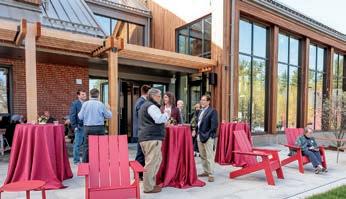


Members of three generations of the Fleischner family attended the dedication of the admissions center that welcomes prospective families to St. Paul’s School: Julia Fleischner P’20,’23; Margaret Fleischner ’20; Chris Fleischner ’89, P’22; Caroline Fleischner ’20; David Fleischner ’91, P’20,’23; Leslie Fleischner P’89,’91, GP’20,’22,’23; and Dawn Fleischner P’22.
Rector Kathy Giles congratulates Leslie Fleischner on officially opening the new center. In the background is the Kwok Reception, given by Noelle Kwok ‘98, P’27,’28. Kwok also gave two of the building’s conference rooms.
The Kavuru Admissions Lobby, given by Sudha and Vimal Kavuru P’21,’22 (shown here), overlooks the Jiang-Peng Great Room, given by Hao Jiang and Zhien Peng P’23,’24.
Throughout Anniversary Weekend, the Jason P. Andris ‘92 Terrace, given by Stathis Andris P’92,’94 and Stacy Andris Skalski ‘94 in memory of Jason Andris ‘92, was a welcoming space for conversation.
Recognizing Outstanding Service
IAN ALDRICH
This year, the Alumni Association bestowed its highest distinction on two alumni who have been a credit to the School and its teachings: health care advocate and administrator Lars Egede-Nissen ’58 and Pulitzer Prize-winning author Eliza Griswold ’91. The two were recognized for their outstanding service to the greater good during the association’s annual meeting on Saturday, May 3, during Anniversary Weekend. Nominated by the alumni body at large, recipients are selected by the Alumni Association’s Presidents Council, composed of the president and past presidents, as well as the executive director and past executive directors. Griswold was unable to attend, but in accepting his award, Egede-Nissen offered thanks to friends and family for the “great privilege” that “means so extraordinarily much” to him. “St. Paul’s has been in my heart since I arrived here in 1954,” he said. “It’s a place that … you live with all our life; you never forget what a great place this is.”
COMMITTED TO COMPASSION
Meet Lars Egede-Nissen ’58
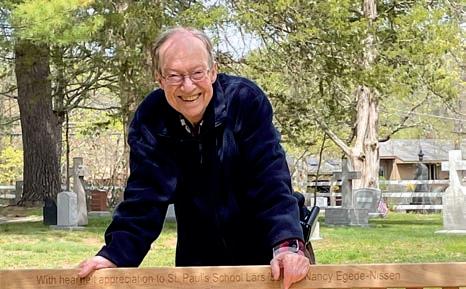
At the age of 10, Lars Egede-Nissen ’58 had the opportunity to shadow his father, a general practice physician, on house calls to patients in their hometown of White Plains, New York. For Egede-Nissen, these visits were not just a window into the work of his father but a lesson in staying committed to the practice of being a compassionate person in the wake of extreme hardship.
Less than a decade before, in the family’s native Norway, Dag Egede-Nissen had used his medical practice as a clandestine outpost to ferry residents out of German-occupied Oslo to Sweden. The work eventually led to Dag’s arrest and confinement in a concentration camp, where he endured the final months
of the war. After, Egede-Nissen’s father spoke only occasionally of that time, instead converting whatever pain he carried with him into caring for his family and patients.
Over his own long, often pioneering career in building and running hospice care programs and facilities around the United States, Egede-Nissen diligently instilled what he learned from his father into his own work practices. “I’ve never claimed to be a clinician, but I think there’s something in me that has me emulating my father in a way,” he says. “The empathy he showed people and his willingness to listen to people to know where they are and what they need were things I tried to do.”
A Columbia University graduate and Navy veteran, Egede-Nissen was employed as an editor in the mid-1970s for a publisher that specialized in medical books when he was assigned the job of publishing a new edition on nursing care for sick children by an author who was a renowned expert on death and dying. The work, says Egede-Nissen, opened his eyes to the burgeoning world of hospice care (the country’s first facility opened its doors in 1974) and its need for smart, empathetic leaders.
In 1979, Egede-Nissen took a career leap and started work at a new hospice program in California’s Humboldt County. The job proved to be the beginning of something unexpected. As a development officer and later CEO, Egede-Nissen became one of the country’s first 1,000 hospice professionals, and over the next several decades headed, and sometimes steered the creation of, hospice programs and facilities across the country. He was the first consumer member of the National Board for Certification of Hospice and Palliative Nurses and later co-authored a new certification examination for hospice and palliative care administrators; in 2013, the Hospice and Palliative Care Association of Michigan recognized him with its Lifetime Achievement Award.
“My goals have always been to assure that every American should have access to compassionate and high-quality health services,” Egede-Nissen says. “I have also passionately advocated for a heightened awareness of healthcare choices and their consequences.”
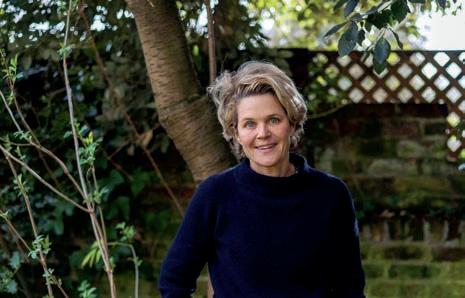
WRITING FOR THE GREATER GOOD
Meet Eliza Griswold
Eliza Griswold is a writer who cuts across genres and interests. She’s a poet and a j ournalist who’s explored the war on terror, matters around spiritual faith, and journeys through desolation and catastrophe with equal finesse. Her first book of nonfiction, 2010’s “The Tenth Parallel,” examined the regions of the world where Islam and Christianity clash. Her second, “Amity and Prosperity: One Family and the Fracturing of America,” investigated the impact of fracking in Pennsylvania and earned her a 2019 Pulitzer Prize for General Nonfiction. A year later, her second collection of poems, the deeply
’91
personal “If Men, Then,” was named as one of Vogue’s most anticipated books of 2020.
What’s the connective tissue? Perhaps it’s Griswold’s comfort in exploring the uncomfortable. For her, the most interesting stories, maybe the most important stories, reside in the spaces between worlds.
“I’m interested in liminal spaces,” says Griswold, a longtime contributor to The New Yorker. “I don’t like easy categorization, and I don’t like easy ideas. I’m always looking to complicate what we understand, because the more complicated the picture, the more accurate the picture. Maybe my work would be
more popular if I could just write in a more black and white way, but my own ambition is frustrated by my sense of the world.”
The accolades that have come Griswold’s way are plentiful. Over a career that has spanned more than two decades, she has reached the pinnacle of her profession. In addition to a Pulitzer, “Amity and Prosperity” earned a Ridenhour Book Prize, and “A Circle of Hope: Reckoning with Love, Power, and Justice in an American Church,” published last year, was a finalist for the National Book Award for Nonfiction.
Along the way, Griswold has received prestigious fellowships from New America Foundation, the Guggenheim Foundation, Harvard University and Harvard Divinity School, while other recognitions — the Rome Prize in Poetry by the American Academy of Arts and Letters, the J. Anthony Lukas Prize for nonfiction, and a PEN award for translating “I Am the Beggar of the World” from Pashto — reflect her ability to work across disciplines. Since 2016, she has also served as a distinguished writer in residence at New York University and last year returned to her alma mater, Princeton University, as its director of the Humanities Council’s Program in Journalism. Now, in addition to her own reporting, Griswold is mentoring the next generation of journalists and other storytellers through her work.
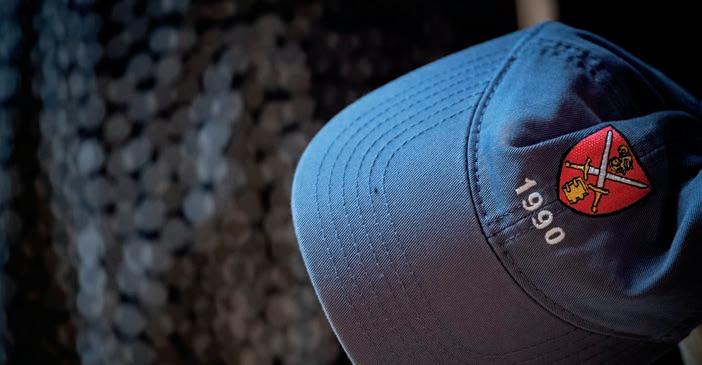
14
DINNERS in and around Concord on Saturday
TOP THREE FORMS for attendance over the course of the weekend (counts only registered alumni)
764
30
FORMS represented in the Alumni Parade
ALUMNI AND GUESTS in attendance from nine countries and 37 states 65 ROWERS on Turkey Pond 2 DAYS reuniting with friends and making new ones
Celebrating Anniversary Weekend 2025
“My heart kept swelling with waves of pure affection — for you all, for the place and for the rituals we built our life around there that came to have such meaning. I feel so grateful for the base we got to build back in the day, and for the kindness that seems to have grown in us over time. ... Even now, I cannot stop smiling, still on the high of it all.”
—Nell Manning ’85

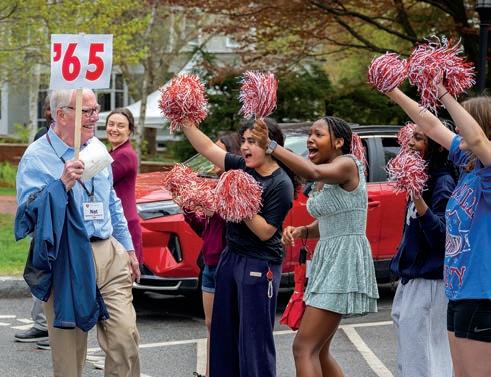
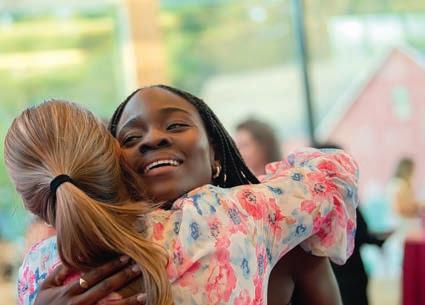
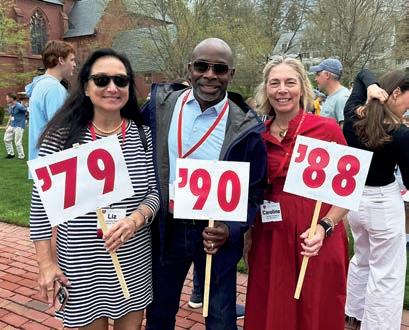
PHOTOS: Ben Flanders, Amanda Sabga, Mary Schwalm
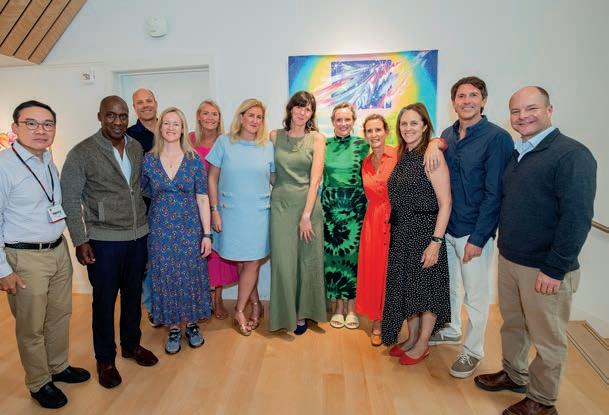

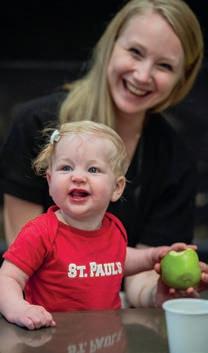




No matter how small a class or school, there is always someone new to get to know. All too often, that connection happens years after graduation — at a reunion, for example, when time, perspective and opportunity align to show a once-familiar face in a new light. Such was the case for many alumni during Anniversary Weekend 2025, held May 2-3. From 37 states and nine countries, 764 alumni and guests gathered not only to remember their formative years together and to catch up with old friends, but also to make new friendships built on the foundation of a common experience in this place that so many consider one of their homes in the world. Below, form volunteers share their thoughts on the weekend.
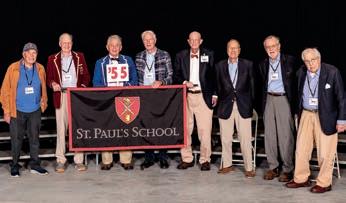
FORM OF 1955 — 70TH REUNION
Eight members of the form attended our 70th Reunion, sharing heartfelt conversations and memories while renewing friendships. We were impressed by the changes to our beloved campus. The new buildings (and missing ones) stimulated memories of how it used to be. The Fleischner Family Admissions Center is the exceptional newest addition, shining a light on the School’s entrance as one drives down Dunbarton Road. It cannot fail to persuade candidates for admission that SPS is their best choice!
The memorial service in the Chapel, which showed no change other than fresh flowers on the altar, was as beautiful as ever. Nostalgia was strong as we heard familiar prayers and sang familiar, beloved hymns. Some, confirmed in this hallowed place, felt as though they had returned home. Hearing from the eloquent Rector Kathy Giles convinced us that the School is in very capable hands.
On Saturday, we were honored by the presence of the Rector for dinner in the warmth of the Rectory. She spoke very personally to our small group about her life and her exciting ideas for the future of the School. This occasion capped a perfect Anniversary Weekend, giving us the chance to have a relaxed conversation in a room in which some of us had fond memories of having tea and cookies with Mrs. Kittredge. This enjoyable conversation continued the following morning over breakfast before leaving.
— Gunnar Baldwin
FORM OF 1960 — 65TH REUNION
Our 65th Reunion will be remembered by all who attended. On Friday, we gathered in the Upper (Coit) for dinner. Speeches were short and interesting; David Scully ’79, P’21, president of the School’s Board of Trustees, spoke about how important alumni and parent gifts are to The SPS Fund.
On Saturday, we attended a service in the Chapel; Rector Kathy Giles spoke and The Rev. Molly O’Neil Frank ’80 delivered the sermon. Lunch at the hockey rink would not receive a single Michelin star, but it was a good opportunity to chat. After, there were dance classes and sporting events and, unfortunately, a thunderstorm. Some of us attended the Alumni Association Meeting and Awards Ceremony in Memorial Hall.
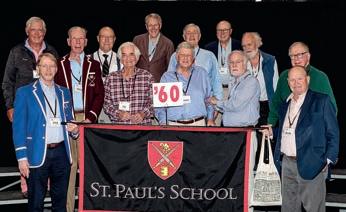
At 5 p.m., we assembled in the Old Chapel for a service in remembrance of formmates no longer with us. Jack Mechem and Tod Hall read the names of those missing. Tod also wrote two prayers and a benediction for the service, and we presented him with a Bill Abbé print in appreciation of his efforts. Win Rutherfurd’s rendition of “Love Divine” in the small confines of the Old Chapel shook the timbers. At our dinner in the Hockey Center, there was ample time to chat with friends, including Christian Kurten from Finland, and Rector Kathy Giles stopped by. From the beginning, I was pleased by her appointment as Rector. It is now clear that SPS was fortunate to land her. Kathy is a strong believer in community and is endlessly approachable by the students, who seem happy and comfortable on the most beautiful campus in the country. Jack and I thank all of you for your loyalty and generosity to the School.
— Dimitri Sevastopoulo
Peter Van Doren
(L. to r.) front: Chip Loomis, Sandy Whitman; Row 2: Harry Howell, Jay Mellon, Dimitri Sevastopoulo, Loring Woodman, Bill Schwind; Row 3: Jack Mechem, Christian Kurten, Lane Taylor, Win Rutherfurd, Bill Foulke and Peter Wright. Not pictured: Tod Hall.
(L. to r.) Charlie Cochran, Frank Lloyd, Gunnar Baldwin, John Horan, Dyer Wadsworth, Fred Lovejoy, Paul Horne and Bob Hurlbut.
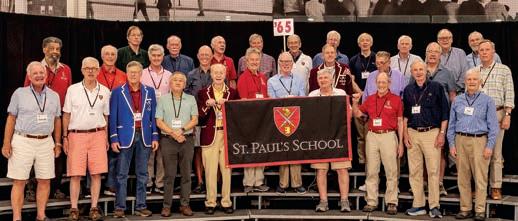
FORM OF 1965 — 60TH REUNION
With our 55th Reunion blocked by COVID, enthusiasm ran high for our 60th. When the bell rang Friday afternoon in Concord, almost one third of the form’s living members reported. That morning, Kiril Sokoloff gave an inspiring talk in chapel, an honor for himself and our form.
Sporting snappy Form of 1965 hats, we repaired to the Old Chapel, where our new form director, Peter Otis, presented a video remembering those who had passed since our 50th. It was a thoughtful, poignant and painstakingly researched production followed by a memorial service in the Chapel, well planned by Ote and David Parshall. Friday’s activities were capped with a dinner in Coit.
Saturday brought a well-attended alumni chapel service with four formmates singing in the choir. The storied Alumni Parade followed with students applauding as we walked to lunch at the Hockey Center.
The fickle spring weather held long enough to explore the grounds, attend the Alumni Association Annual Meeting and Awards Ceremony or visit Ohrstrom Library. The form was recognized for setting new giving and participation records as well as for Hargate Society membership. A massive thunderstorm sent most everyone scurrying back to the hotel.
The Oscar Barn proved an accommodating site for our dinner and a raucous, fun evening. The program, coordinated by me and Nat Prentice, asked formmates to recall the coolest thing that had happened to them since leaving SPS, excluding marriage, children or grandchildren — the responses were fascinating. Bill Colt’s painting “Skating Holiday” fetched good bucks at the silent auction to benefit the Missionary Society; Fred and Bettina Stelle, who provided jars of Bettina’s Bees honey to attendees, were the high bidders.
We said goodbye after Sunday breakfast at the Common Man, where our wives, led by Susan Yahng, did some bonding of their own. We left hoping that mini reunions come to fruition before 2030 rolls around.
— John Rice
FORM OF 1970 — 55TH REUNION
Arriving at St. Paul’s is always a little nostalgic and intimidating. The grounds looked better than I had ever seen, with many new or repurposed buildings. Topping it all off is the new Fleischner Center, located near the school entrance and dedicated over Anniversary Weekend.
On Friday, four of us rowed while many more strolled around and spoke with students. Some purchased things in the School Store (in the old Post Office). A few looked at archival photographs in the library to identify students from the ’60s (modest success). Tres lost his phone (could be at the bottom of Turkey Pond). We had a nice dinner in one of the newer Coit dining halls. We were the youngest reunion class invited and there were considerably more participants from earlier years. Not going so far as to say I felt young again, but the old codgers looked pretty good.
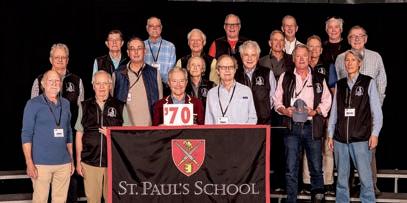
I don’t think anyone was late to chapel on Saturday. The parade started at the Rectory. There was a golf cart available but, miraculously, none of us needed it. We found our way to the Hockey Center for lunch and a form photo. I was happy to see Dennis Koller; I don’t think he had ever been to Anniversary.
At 2:30, the form convened in the Schoolhouse Reading Room to talk about what was on our minds. It was a wonderful, inclusive discussion. Not all of us agreed on everything (which I applaud) but I think it is safe to say that, while we were all pleased to be together again, most were pretty worried about the state of the country, the threats that could upend the world and our unhappiness with the lack of quality/integrity of some in positions of national authority. All that said, I left feeling reasonably optimistic — largely due to how impressive the members of this form are. Saturday night dinner at the Centennial was festive. Colly read a soberingly long list of formmates who are no longer with us, Spanky being the last name. More than half a dozen spouses were present, and I can’t state strongly enough how their presence elevated everything. At the end of the evening, I talked a little about Newport, RI — we all are hoping many of you will join us there Oct. 19-23. It should be a wonderful, relaxing few days with plenty to do, lots of great things to see, dozens of terrific places to eat, etc. There will be some surprises. Please come! We have a lot of rooms set aside but make your reservations soon. More info to follow shortly. Best to all. Mory Houghton
(L. to r.) front: George Howard, John Rice, Nick Hoff, Michael Yahng, David Parshall, Peter Otis, David Martin, Skip Hobbs, Rick Burroughs; Row 2: Bob Hall, Hunt Rounsavall, Scott Howard, Fred Stelle, Dave Eklund, Nat Prentice, Peter Twining, Eric Saunders, Bill Colt, Buff Chace; Row 3: Laurie Brengle, John Foss, Ed Bartlett, Bill Kennedy, Randy Morgan, Sandy Faison, Ren Martin, Bernard Gray, Arn Welles and Charlie Pillsbury. Not pictured: Kiril Sokoloff.
(L. to r.) front: John Eldridge, Fritz Newman, George Host, Clem Wood; Row 2: Doug Bateson, Charlie Wagner, Colly Burgwin, John Martin, Bill Craumer, David Shiang; Row 3: Peter Culver, Craig MacColl, Bert Honea, Dennis Koller, Frank Kennison; Row 4: Chip Gowen, Steve Crandall, Sandy Stewart and Mory Houghton. Not pictured: Tres Davidson, Don Lippincott.
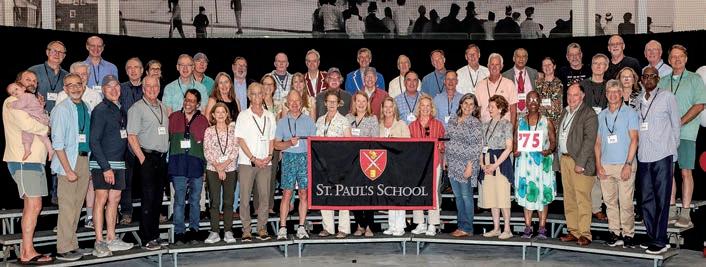
Bill Laverack, Randa Wilkinson, Eric
Mary
T Winand, Chip Clothier, John O’Herron, Blaine Carter, Steve Chardon, Hal Sprague,
Smith and Tom Welch.
FORM OF 1975 50TH REUNION
Nearly 55 form members and guests came together for a memorable weekend renewing relationships, helping create new ones and also “helping with some needed healing.”
Randy Blossom and Carl Lovejoy hosted a golf outing at the Concord Country Club and our crew returned to Turkey Pond. The Rev. Richard Belshaw officiated the memorial service for our 13 departed formmates. Dick moderated remembrances shared by formmates in-person and in writing. The Form of 1975 Exhibit in Ohstrom Library featured pictures, articles, Abbé artwork and books written by our formmates.
Chip and Lynne Morgan and Roberta Tenney were our dinner guests at the Upper, and Rector Kathy Giles recognized our form’s 25th Reunion effort when we launched the Building Healthy Relationships Fund. The theme was the School embracing racial and gender diversity that occurred during our time at SPS. The arc started with the 12 First Form boys, the first 14 full-four-year girls and ended with 120 girls at SPS in 1975.
Form Director Dorien Nunez did the chapel reading at Saturday’s Alumni Chapel Service. The parade and lunch were enjoyable with lots of hugs, pictures and stories. Thanks to form agent Blaine Carter, the form’s fundraising committee’s efforts and the generosity of our formmates, we were recognized at the Alumni Association Annual Meeting for having the highest contributions of all reunion forms.
Randy Blossom hosted our Saturday dinner at the Concord Country Club, which included guests Marcia and Bill Matthews ’61, P’86, ’89. Jim Waterbury shared Bill Matthews’ retirement video tribute — Bill and Marcia were all smiles all evening.
Carl Lovejoy shared memorabilia from our form. Whit Ford gave an overview of the Building Healthy Relationships Fund. That night and the next morning, we continued sharing memories and agreed to do more to better keep in touch.
— Dorien Nunez
FORM OF 1980 45TH REUNION
I want to convey in these few lines the feeling of reunion and connecting with friends rarely, or if ever, spoken to at School. I can honestly say from the moment Rich Perkins and I drove up to the School, to when he dropped me off, magic was in the air. What struck me is how nice and interesting we all are, and how freely we share ourselves and our experiences together. What lives we have lived!
We band of brothers and sisters sang the School hymn and were together again for a few minutes of remembrance in the Chapel. This was my first walk down the lane in 45 years.
We ate in the Hockey Center and took our pics. I looked for the two tree stumps that Stride, Williamson, Bardsley, Maeck and Hornblower had cut down on a Saturday night.
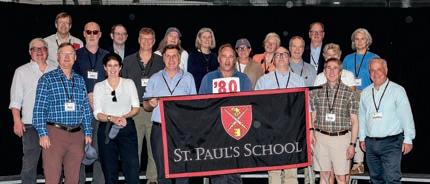
Valerie Pierce, Mason Wells, Jennie Hunnewell
We walked to Memorial Hall to hear Rector Kathy Giles and Board President David Scully ’79, P’21 talk about the state of the School, and it was very good. Scully noticed Reynolds, Schwalbe and Wells in the back rows. The memorial for Anne Hutchins-Orsi was beautiful. Molly O’Neil Frank, newly frocked, gave the eulogy and Clare Hepburn Cushman and Helen Crane van der Voort shared their memories.
Row
Steve Bain, Will Schwalbe, Betsy Trimble, Helen Crane van der Voort, Sarah Barnum, Tom Reynolds and Clare Hepburn Cushman.
From the memorial service and the form dinner at Tom Hok’s house with Mr. Burns, George Carlisle and Liz Overton Robbins ’79 to the informal gatherings at the hotel to watch the horse races and have pizza together ... as Rich texted me afterward, “the weekend was a blast.”
Lots of good will come from this weekend … new connections and renewed memories of shared experiences. I wish you all could feel the same love we shared together as fellow travelers at SPS. It was a magical time.
— John Maeck
(L. to r.) front: Steve Turner, Tom Ferraro, Carl Lovejoy, Randy Blossom, Luis Huertas, Cathy Gilroy Eby, Sonny Cave, Bill Vickery, Mary Bigelow, Martha Strakweather Altreuter, Mimi Armstrong deGruy, Nina Marache King, Anne Latchis, Lucie Closson Dean, Addie Burns Redd, Paul Dean, Rick Gomes, Dave Askins; Row 2: Kevin McCaffrey, Richard Belshaw, Walter Hunnewell, Kristina King, Daphne Firth, Helen Hunt Bouscaren, Tarry Rago, Whit Ford, Jim Waterbury, Jeff Cooley,
Clow,
Baily Wieler, Alex Chako; Row 3: Eric Siebert, Martin Mellish, Hilda Cupeles-Nieves,
Mark Powden, Mike Miller, Dorien Nunez, Gregg Townsend, Jeremy
(L. to r.) front: Dick Perkins, Molly O’Neil Frank, Eldon Scott, John VanS. Maeck, Gifford West, Scott Scharer, Geoffrey Underwood; Row 2: Tom Hok, John Martin, Dave Nelson,
Kaplan;
3:
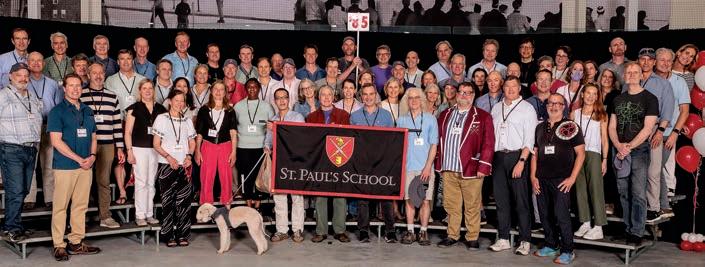
John Trevor, Cynthia White Day, Haydn Cutler, Emmy Starr, Stephen Vehslage, Georgie Stanley, Caitlin Gallager Eills, Cici
Lew Nash, LeGrand Elebash; Row 4: Jim Frates, Bill Veghte, Jon Shaw, John Potter, Jack Rusher, David Stubbs, Jamie
William Maeck, Gary Channing, Jonathan Young, John Turner, Geoff Schaefer, Toby Ali, Jennifer
FORM OF 1985 40TH REUNION
Nick Spooner and Ashley Skinner Knickrehm.
Our form returned to SPS in full force, leaving a lasting memory in our collective minds and setting high expectations for our 50th Reunion. Not only did we secure victory in the Race to Reunion with the highest giving participation, but we also claimed bragging rights for the highest attendance of the weekend. Most impressive was the distance our formmates traveled to reconnect in Millville. Both Carole Irving and Toby Ali flew in from England. Other notable long-distance travelers included Elliott Smith from Texas, Jack Rusher from Wisconsin, Nell Manning from Virginia, Ashley Knickrehm from Arkansas and Richard Baldwin from Missouri. Eight members made the trip from California, and New England and New York had strong contingents.
Over two unforgettable days, old friends reconnected at cherished SPS locations, meandering through the woods, singing with the choir, attending chapel, swimming in Lower Turkey and cheering on the boat races. Saturday’s dinner at The Red Blazer was a great success, as were the dancing and mingling after at one of Concord’s finest basement establishments, Tandy’s. Sunday’s breakfast at the Hampton Inn stretched well into the morning, with quiet conversations, heartfelt hugs and reluctant goodbyes.
Throughout the weekend, a sense of gratitude was palpable, a feeling that continued in the flurry of emails and texts exchanged afterward. Nell Manning captured it best, writing, “I had a horrid 24-hour trip home to Virginia, stuck in various airports with flight cancellations and storms, but my heart kept swelling with waves of pure affection — for you all, for the place and for the rituals we built our life around there that came to have such meaning. I feel so grateful for the base we got to build back in the day, and for the kindness that seems to have grown in us over time. And damn, we are interesting people now! Even now, I cannot stop smiling, still on the high of it all.” Emily Hartshorn shared a similar sentiment: “I’m just coming out of the rosy haze of the weekend (although my knees have reminded me that I did a bit of dancing on Saturday!) and am so grateful for our time together.” Jamie Young echoed, “Still basking in the afterglow! Amazing few days!” From across the Atlantic, Carole Irving added, “What a rollicking, riotous weekend! I am a weary, happy gal with a healthy glow-over … So lovely to see everyone.” For the Form of 1985, it was a reminder that the bonds formed a few decades ago have stood the test of time, and dare I say, have improved with age. Get ready for our next reunion!
— Cynthia White-Day
FORM OF 1990 35TH REUNION
Our group was small but mighty! The weekend was filled with wandering, singing, swimming, laughing and reminiscing. We reveled in the pleasure of one another’s company in this special place that always feels like home. Thanks to Abbie, we all dug deep and engaged in an extremely powerful dinner conversation allowing vulnerability and filled with deep love. We all walked away from the weekend feeling profoundly grateful for the shared SPS experience and deep connections we continue to cultivate almost 40 years after first setting foot in Millville. The only thing that could have made the weekend better would have been seeing more of our formmates, so I hope that we can work on that for the 40th. Keep an eye out for some mini-reunions in the next few years and start thinking about making it back in 2030!
Chapin Mechem
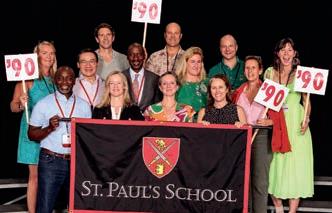
(L. to r.) front: Bernard von Bothmer, Heather Robinson, Kern Shin, Charlie Newton, Rob Garrett, Ham Young, John Hunt, Elliott Smith, Nate Emerson; Row 2: Courtney Fawcett, Tim Billings, Anna Andrews Smith, Emily Whitney Hartshorne, Agy Njoku Asemota, Sarah Hodges, Amanda Washburn, Elizabeth Catlin, Leelee Lloyd Treadwell, Lisi Bailliere Dean, Barton Quillen, Charlie Shaffer, Karen Shaffer, Ace St. George; Row 3: David Boit, Kevin Powers, Ed Krayer, Greg Selch ’84, Kim Donaldson, Samantha Moody Brookes, John McB. Greene, Richard Baldwin, Ward Atterbury, Nate Downey, Carol Irving,
Cotter Nowland, Nell Manning,
Young, Chip Alliger, John Britton,
Horne King,
—
(L. to r.) front: Ray Joseph, Claire Fiddian-Green, Abigail Dillen, Sarah Cornell; Row 2: Chapin Mechem, Henry Ho, Amachie Ackah, Marett Taylor, Amanda Stollenwerck Chandler; Row 3: Ted Waters, Gray Harley, Peter Rankin and Nelly Calder.
FORM OF 1995 30TH REUNION
Unsurprisingly, the Form of 1995 brought the party in honor of our 30th, with 45 of us returning from points across the country, including California, Wyoming, Texas and Louisiana. Festivities kicked off Thursday with a perfect evening hosted by Geoff DeVito at his home and, proving people get older but don’t necessarily grow up, some of us arrived back to our hotels at 3 a.m.
Friday’s boat races showed Joe Koetters, Zack Mully, Danny Dias, Tom Champion, Alexey Salamini and Lisa Day haven’t missed a beat. Ahead of Anniversary, DeVito and Will McCulloch joined The Fraternal Order of Eagles to ensure we had an epic after party Friday night. The incredible band — Nick Van Amburg, Harry Eichelberger, John Connolly and Kevin (honorary form member), with guest appearances by Keith Meade, Jason Angell and Vittorio Cottafavi — brought us back with the songs that made up the soundtrack of our SPS lives and we were joined by other
forms wanting to get in on the fun.
We took a walk on Saturday to the dam in memory of our formmates who are no longer with us, and I was struck by how we all remember each turn and path. New generations got to share the Millville love, with Courtney Evans’ daughter, Ellie ’28, showing Phoebe Paul (daughter of Roberta Paul and Jon Paul ’96) her Kitt 2 room. Saturday dinner at the Bedford Village Inn ended with stories that brought everyone to tears (the laughing kind).
... THE FORM OF 1995 IS A UNIQUELY SPECIAL GROUP OF PEOPLE, DRAMATICALLY DIFFERENT ON PAPER BUT UNITED BY A SHARED CURIOSITY, SENSE OF HUMOR AND A PROFOUND LOVE AND RESPECT FOR ONE ANOTHER.
Admittedly biased, but I left campus more convinced than ever by what I have instinctively known since meeting my formmates more than three decades ago: that the Form of 1995 is a uniquely special group of people, dramatically different on paper but united by a shared curiosity, sense of humor and a profound love and respect for one another. I just hope it isn’t another five years before we can all be together again!
— Morgan Stewart
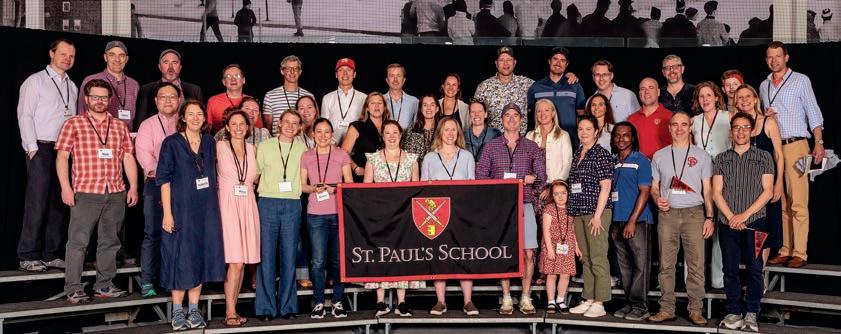
(L. to r.) front: Isabella Calder, Alison Mcl. Twiss, Dolly Bross Geary, Grace Kim, Thayer Walker, Kary Fronk Clark, Nick Van Amburg, Phoebe Paul, Roberta Bruce Paul, Marlon Key, Albert Pope, Alexey Salamini; Row 2: Matt Kulas, James Ahn, Morgan Stewart, Sarah O’Herron Casey, Aly Jones, Courtney Evans, Lisa Funk Day, Allyson Ross Pachios, Elda Lambert Fisher, Andrew Fisher, Jess Parsons, Keith Porteous; Row 3: Andreas von der Goltz, John Connolly, Will McCulloch, Mike Godwin, Adam Simons, Vittorio Cottafavi, Oakley Duryea, Alessia Carega, Zach Mully, Danny Dias, Gordy Rogers, Harry Eichelberger, Malcom Eichelberger and Tom Champion.

(L. to r.) front: Pierre Amariglio, Bradford Craigen, Jerry Evarts; Row 2: Amy Randall Beltz, Kate Ellison Craigen, Lina Schuerch Finlan, Paige Ferrari, Lauren Conley Moorman, Shields Weaver Callahan, Suzette Oates Kratovil, Amory Loring Logan, Victoria van Roijen Hall, Caroline Farrington, Francesca Gardner, Clifton Rogers, Shannon Hart Geonetta, Natalie Jay, Katie Baines Drossos, Margot Hoppin, Renee Boey, Nicholson Price, Tom Ferriss, Peter Noteboom; Row 3: Stephen Exner, Victoria Serues, Lisa Farwell, Rachel Lee, Ellen Nichol, Ashley Kim Burke, Megan Hackett Mihm, McKay McFadden, Lauren Miller Hobbs, Julia Thier Moore, Tina Thatcher Helzer, Sarah Burns, Sarah Pearce, Marilyn Katz, Michelle Machon Earle, Theodore Ma, Jon Wakelin, Nick Pike, Laura Gohlke von Minckwitz; Row 4: Stefan Karlsson, Inger Karlsson, Ed Pena, Sarah Pena, Steven Cicala, James Peniston, Clay Nichol, Ben Vear, Dan Mallott, Jamie Perencevich, Taylor Rettig, Julian Kehaya, Werner DeW. Kratovil, Ben Martin, Michael Kurd and Fluff Niederhauser.
FORM OF 2000 25TH REUNION
The Form of 2000 had a banner showing, with 57 classmates plus 72 family members. Distance awards were earned by Laura Gohlke von Minckwitz (Germany) and Renee Boey and Theodore Ma (Hong Kong), while dozens of other classmates flew in from all over the U.S. and Bermuda (James Peniston), too. To quote Reverend Molly O’Neil Frank ’80, “time is devilish,” and Anniversary Weekend offered many opportunities to feel the transcendence of time. From the well-worn path to the boat docks to the creak of the Upper doors, much is the same at SPS. Yet, several impressive buildings have been constructed, the PO is now the store, and if it’s possible, the grounds seem even more beautiful.
ANNIVERSARY WEEKEND OFFERED MANY OPPORTUNITIES TO FEEL THE TRANSCENDENCE OF TIME. FROM THE WELL-WORN PATH TO THE BOAT DOCKS TO THE CREAK OF THE UPPER DOORS ...
Highlights of the weekend included a beautiful Friday dinner at the Rectory; a rowdy Friday night bus ride to downtown Concord with the Form of 1975; crashing the Form of 1995 after-party complete with cover band; a beautiful
chapel service Saturday morning; noticing that we are now closer to the middle of the pack in the Alumni Parade; and Saturday night dinner in the Fleischner Family Admissions Center, during which we were treated to form trivia (congrats to Amy Randall Beltz for nailing almost every question), and viewings of Fluff and Werner’s senior slide show and McKay and Ferriss’s 25-year-old time capsule video. We learned that 16 of our formmates are married to other SPS alums (10 to each other), Victoria Van Roijen Hall possessed a keen sense for how cell phones would be used in the future and Nick Pike had a serious head of hair in 2000.
There’s nothing like seeing actual footage of ourselves 25 years ago to remind us that time has, in fact, marched on. I think I speak for everyone who attended in saying it was an incredible weekend of reconnecting. I am so grateful for the friendships made at SPS and look forward to our 30th!
— Amory Logan
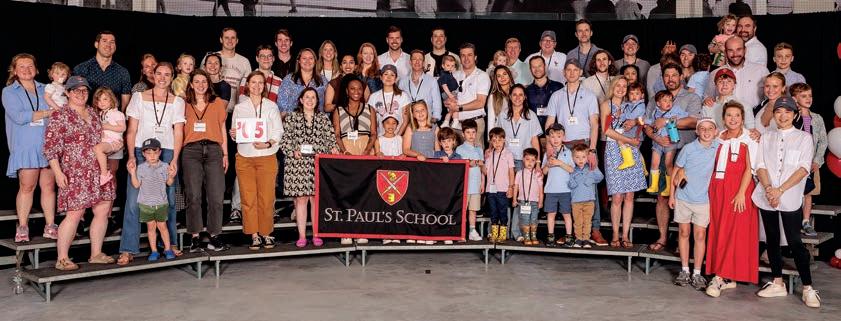
FORM OF 2005 — 2OTH REUNION
The Form of 2005 returned to Millville to celebrate 20 years since graduation and to reconnect with the place and people who shaped us. Over the beautiful spring weekend, 36 formmates gathered with spouses and nearly 30 children for a reunion filled with joy, reflection and plenty of running around.
Campus did not disappoint. The buildings were mostly as remembered, though the Upper has a tasteful addition (no more eating in the Pit), and Sheldon will return to student use now that the Fleischner Family Admissions Center has opened. Lunch in the rink still brought back memories of SATs.
No surprise, we had the most representation of any form at the Saturday morning 5K on the cross-country trails, led by honorary captains Tim Liddell, Mark Crocker and Bradshaw Hawkins and sons. Others opted to skip the early workout and rolled up just before chapel. One of the most powerful moments for many was being back in the Chapel, either singing “O Pray for the Peace of Jerusalem” or listening to the incredible quintet of students. Many remarked that they had goosebumps when the first line of “Love Divine” was sung, with gusto, before we were dismissed to parade ourselves to lunch and beyond.
As our Anniversary Weekend committee (Ryan Blossom, Matt Danzig, Chauncey Kerr Hamilton, Laura
Hammett, Garrison Jones, Lindsay Kryzak, Tim Liddell and David Wagner) had hoped, there was ample time for catching up and reconnecting by sitting on Chapel Lawn, trekking to Beech Hill Farm, and walking to the boat docks, where time-honored rituals were passed to the next generation.
It was especially meaningful to meet so many partners and children, proof that while our bonds were formed on the grounds of St. Paul’s, they continue to grow far beyond them. Jenn Choi and her daughter, Alex, traveled from Hong Kong and connected with Bradshaw Hawkins and his daughter, Blythe, who came from Texas. The Common Man’s Form of 2005 kids table was rocking.
It was clear that the Form of 2005 hasn’t missed a beat. The tell: true deep laughter that comes from the belly and the soul. Our form has always made each other laugh, and we are still laughing about Ryan Blossom and Hannah Goldman Blonshteyn debating what year certain incidents occurred (if at all), Peter Darrow regaling us with tales of life in L.A., and the realities of dancing at the bars in Concord in our mid-30s — thanks, Alex Downs and Aneka Roberts, for your leadership there. For one weekend, the heartfelt catchups, warm hugs and laughter that echoed off the Schoolhouse made us feel like we had only been apart for spring break instead of 20 spring breaks. Here’s to old friends, new memories and the promise of seeing each other soon.
— Lindsay Kryzak
(L. to r.) front: Sarah Burleigh, Hillary Carroll Jeffries, Catherine Nelson, Laura Hammett, Lizzie Mills Murthy, Aneka Roberts, Hannah Goldman Blonshteyn, Rich Littlehale, Kimberly Lofgren, Kurt DeVylder, Charity Hawkins, Jen Choi; Row 2: Sasha Jostrom-Reiser, Peter Grace, Daphne Hallett Donahue, Lindsay Kryzak, Michael Juel-Larson, Alex Downs, Rebecca de Sa, Andrea Wong, Garrison Jones, Ryan Blossom, Dominique Nobre Silva, Ben Beisswenger, Henry Claflin, Andrew Kurd, Bradshaw Hawkins; Row 3: Bowman Dickson, C.J. Robertson, Kate Stewart, Alexandra Tilt Renehan, Tim Liddell, Peter Darrow, Ed Ross, Oliver Embry, Alec Stillman, Pitch Lindsay and Mark Crocker.
FORM OF 2010 15TH REUNION
We celebrated with more than 20 members returning to Millville. The rain held out for the alumni parade, with new additions to the form — partners and baby Paulies — joining us. Ruthie Bates Fish, Kelsey Bogle Gallagher, Jeff Ferguson, Louis Ott and Emily Summit brought their little ones for the weekend of festivities. Sophie Snowden came from Seattle and Alan Keegan made the second-longest journey from his new home base in Miami. Emily, Kelsey, Loddie and I enjoyed the 5K fun run together; Rex and Alan swam at the docks. Jeff and his daughter shared a nap together at Ohrstrom. Others took walks and enjoyed the beautifully renovated student center (formerly Hargate). It felt good to be home.
FORM OF 2020 — 5TH REUNION
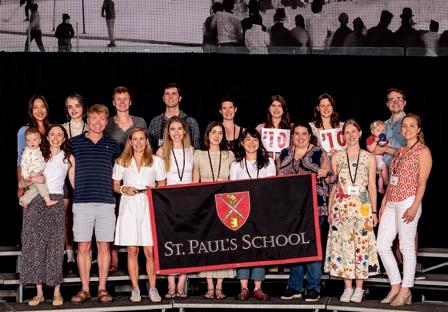
— Zoe Williams
Nearly 80 of us gathered to reconnect and learn what everyone is up to. Highlights from the weekend included the opening of the Fleischner Family Admissions Center, a well-attended chapel service on Saturday, reconnecting with beloved teachers during the parade, form takeovers of two downtown bars, the party bus on the ride to the Contoocook Cidery, late-night pizza (thanks, SPS!) and a poignant piece of nostalgic comedy from Jackson Cabot.
Though COVID had an outsized impact on our Sixth Form year, the emerging sentiment among formmates is a desire for our SPS experience not to be defined by the way it ended, but instead by the many wonderful experiences we did get to share. From delicious Upper breakfasts, afternoons on Chapel Lawn and evening conversations in the Upper common room to the football game at Gillette Stadium, Fiske Cup hijinks and time in the community center, we reminisced about all the memories that made up our formative years at SPS. We are excited about the next 50+ years of reunions ahead of us and the many more memories we will make. After all, we have at least a term’s worth to make up for!
— Emily Barker
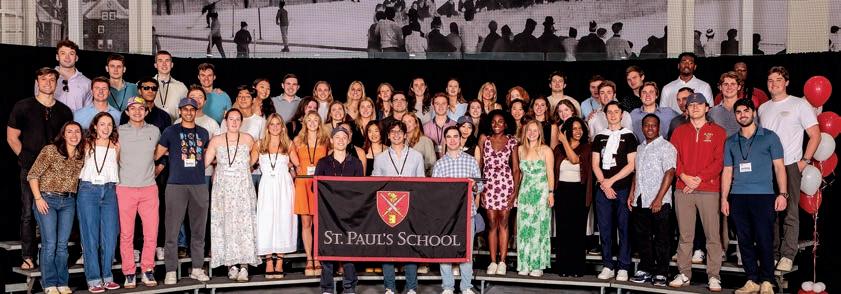
(L. to r.) front holding sign: William Albright, Andrew Kapadia, Lucas Davenport; Row 2: Ariane Bretl, Emily Barker, Logan Cudlip, Rohan Gudivaka, Margaret Fleischner, Zoe Stanton, Charlotte Nicholas, Ellie Neel, Claire Yoo, Reed Cole, Karen Ma, Miniya Greene, Celia Vergara, Mia Toledo-Navarro, Charles Culver, Cameron Shaw, Blake Haberstock, Jeremy Naimer; Row 3: Ben Jenkins, Brenner Morton, Taiyo Olorode, Tate Ellinwood, Danielle Choi, Lucy Caffrey, Adelaide Hocking, Isabelle Coleman, Alex Rymes, Erik Hoets, Whitney Johnson, Celis Lee, Ashley Davidson, Zoe Dienes, Grayson Shaw, Clayton Malone, Dan Hillery, Nick Enders, Jackson Cabot; Row 4: Conor Dunleavy, Ery Kehaya, Trevor Eckler, Larson Avery, Alison Liu, Aidan McH. Campbell, Ella Stewart, Abby Houghton, Alexandra Vitkin, Bisbee Scott, Emma Jennison, Kendra Kaericher, Freddie Hamilton, Charlie Murphy, Luke Dieterle, Tom MacEachron, Jordan Geronimo and Nathanael Bagonza.
(L. to r.) front: Emily Summit, Rex Littlefield, Kelsey Bogle Gallagher, Jessica Parry, Loddie Allison, Sohee Cha, Caroline Heitmiller Darling, Ella Koeze, Zoe Williams; Row 2: Jess Yoon ’09, Emily Mester, Alan Keegan, Tyler Bembenek, Sophie Snowden, Jackie Brew and Jeff Ferguson.
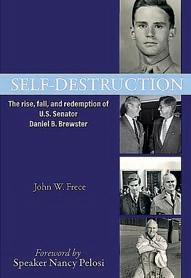
SELF-DESTRUCTION
John W. Frece
Loyola College/Apprentice House, April 2023
A handsome, wealthy, educated, decorated Marine veteran, St. Paul’s School alumnus Daniel B. Brewster ’42 seems to have it all — even a seat in the U.S. Senate and the nickname “the Golden Boy of Maryland Politics.” In 1964, as a stand-in for Lyndon Johnson in Maryland’s Democratic Presidential Primary, Brewster defeated the segregationist George C. Wallace, a victory that was credited with clearing the way for Congressional passage of the landmark Civil Rights Act of 1964.
Then, debilitated by alcoholism, Brewster self-destructed in a breathtaking descent into divorce, electoral defeat, a bribery scandal, financial collapse and personal shame. In his third act, Brewster reclaims his dignity, helps other recovering alcoholics, joins hospital boards, and quietly finds equilibrium and happiness in a life filled with enormous highs and lows.
“Reexamining the life and legacy of Senator Brewster is particularly timely at this pivotal moment in our nation’s history, in light of our renewed struggle for racial justice,” writes former Congresswoman Nancy Pelosi in the foreword. “Danny showed notable political courage in helping pave the way for progress on civil rights. … He was the only senator from south of the Mason-Dixon Line to co-sponsor both the 1964 Civil Rights Act and the 1965 Voting Rights Act.” [Adapted from publisher’s description.]

NUCLEAR WAR: A SCENARIO
Annie Jacobsen ’85
Dutton/Penguin Publishing, March 2024
There is only one scenario other than an asteroid strike that could end the world as we know it in a matter of hours: nuclear war. One of the triggers for that war would be a nuclear missile inbound toward the United States.
Every generation, a journalist has looked deep into the nuclear military establishment: the technologies, the safeguards, the plans and the risks. These investigations are vital to how we understand the world we live in — where one nuclear missile will beget one in return, and where the choreography of the world’s end requires massive decisions made on seconds’ notice with information that is only as good as the intelligence we have.
Now, Annie Jacobsen ’85 offers “Nuclear War: A Scenario,” which explores this tickingclock scenario, based on dozens of exclusive interviews with military and civilian experts who have built the weapons, have been privy to the response plans and have been responsible for those decisions should they have needed to be made. Unlike any other book in its depth and urgency, “Nuclear War: A Scenario” examines the handful of minutes after a nuclear missile launch. Forbes calls it “timeless and masterful,” while The New York Times Book Review says the narrative is “gripping.”
Jacobsen is the author of the Pulitzer Prize–finalist in history “The Pentagon’s Brain” and the New York Times bestsellers “Area 51” and “Operation Paperclip.” She was a contributing editor at the Los Angeles Times Magazine. [Adapted from publisher’s description.]
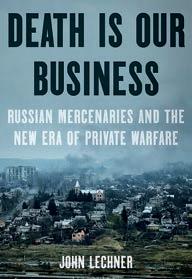
DEATH IS OUR BUSINESS
John Lechner ’07
Bloomsbury Books, March 2025
In 2014, a well-trained, mysterious band of mercenaries arrived in Ukraine, part of Russia’s first attempt to claim the country as its own. Upon ceasefire, the Wagner Group faded back into shadow, only to reemerge in the Middle East, where they’d go toe-to-toe with the U.S., and in Africa, where they’d earn praise for “tough measures” against insurgencies yet spark outrage for looting, torture and civilian deaths. As Russia gained a foothold of influence abroad, Wagner founder Yevgeny Prigozhin, known as “Putin’s Chef,” went from caterer to commander to single greatest threat Putin has faced in his more than 20-year rule.
Armed with military and strategic prowess, the Wagner Group created a market in a vast geopolitical landscape increasingly receptive to the promises of private actors. In this trailblazing account of the Group’s origins and operations, John Lechner ’07 brings us on the ground to witness Wagner partner with fragile nation states, score access to natural resources, oust peacekeeping missions and cash in on conflicts reframed as Kremlin interests.
Featuring exclusive interviews with more than 30 Wagner Group members, “Death Is Our Business” is the terrifying true tale of the renegade militia that proved global instability is nothing if not an opportunity.
Lechner graduated from the Master of Science in Foreign Service program at Georgetown University’s School of Foreign Service. There, he focused on security issues in
Central Africa and the Sahel, Turkey, Russia and the former Soviet Union. An expert on Russia’s growing influence in Africa, he speaks fluent Russian, advanced French, Turkish and Georgian as well as conversational BosnianCroatian-Serbian, Chechen, German and Sango (the lingua franca of the Central African Republic). [Adapted from publisher’s description.]
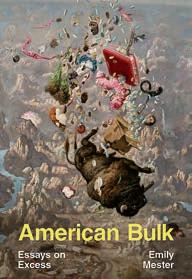
AMERICAN BULK
Emily Mester ’10
W.W. Norton and Company, Nov. 2024
Raised with hoarding and compulsive shopping, Emily Mester ’10 is caught in between. What happens when consumption begins to consume you back?
In a series of deeply personal essays, Mester explores how the things we buy, eat, amass and discard become an intimate part of our lives. We guiltily watch Amazon boxes pile up on the porch, wade through endless reviews to find the perfect product and crave the comforting indulgence of a chain restaurant. With humor and sharp intellect, Mester reflects on the joys and anxieties of Costco trips, how a seasonal stint at Ulta Beauty taught her the insidious art of the sale, and what it means to get “mall sad.” In a nuanced examination of diet culture and fatness, Mester recounts her teenage summer at fat camp and the unexpected liberation she finds there. Finally, she ventures to Storm Lake, Iowa, to reckon with her grandmother’s abandoned hoard, excavating the dysfunction that lies at the heart of her family’s obsession with stuff. A Kirkus Book
Reviews Best Book of 2024, “American Bulk” introduces readers to a striking new literary talent from the American heartland, one who dares to ask us to regard consumption not with guilt but with grace and empathy. A New York Times Book Review says a “cultural critic of such promise deserves a big welcome mat” and Vogue calls the essay collection “dryly witty and deeply thoughtful.”

Mester holds an MFA in nonfiction from the University of Iowa, where she was the winner of the Prairie Lights Nonfiction Prize. She lives in New York. [Adapted from publisher’s description.]

BANNED TOGETHER
Tom Wiggin ’74, producer/director Apple TV+ and Amazon Prime, April 2025
A diverse cast of visionary teenagers, stirring public protests, private threats, criminal charges and drama-filled school board meetings: this is the explosive world of “Banned Together.”
STAMP OF APPROVAL
Almost 100 years after he graduated from St. Paul’s School, Clement Hurd’s artwork is flying around the country.
A member of the Form of 1926, Hurd illustrated the classic children’s bestseller “Goodnight Moon,” written by Margaret Wise Brown and published in 1947. In May, the United States Postal Service released a pane of 16 stamps based on his artwork. Though some may find themselves affixed to bills and other mundane correspondence, it’s lovely to imagine the familiar characters helping to make sure that thank you notes and birthday cards land with an extra bit of nostalgia and warmth attached. The stamps are issued as Forever stamps, which will always be equal in value to the current First-Class Mail one-ounce price.
The 90-minute film pulls back the curtain on two of the most controversial issues in America today: book bans and curriculum censorship in public schools. “Banned Together” follows three students and their adult allies as they fight to reinstate 97 books suddenly pulled from their school libraries. As they evolve from local to national activists — meeting with bestselling/banned authors, politicians, Constitutional experts and others — the film reveals the forces behind the accelerating wave of book bans in the U.S. One of the teens wrote about her experience for Teen Vogue and says, “Hopefully, the film will leave you feeling inspired, optimistic and ready to take action; after all, we have the joy of learning, literature, diversity and inclusivity on our side.”
The first feature film on book bans and classroom censorship, “Banned Together” has won Best Documentary Feature Awards at three film festivals and has been accepted into Oscar winner Michael Moore’s Traverse City Film Festival. Wiggins’ work on “Banned Together” continues a professional show business career that has spanned five decades. He started as an actor, playing leads on Broadway (“Grease”), Off-Broadway (“Livin’ Dolls”), on prime time TV (“Breaking Away”) and on daytime TV (“As the World Turns”), among numerous stage and TV credits. He has served as a creator, developer, producer, story editor and director for a variety of projects. [Adapted from film’s description.]
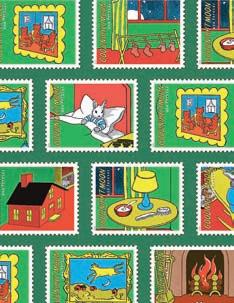
NPR INTERVIEW WITH MESTER
An Enduring Partnership: 75 Years of Seikei
Last fall, St. Paul’s School hosed a delegation from Tokyo’s Seikei Junior Senior High School to celebrate a 75-year exchange program between the two schools that has fostered global understanding and cooperation, and to honor the young people who built the relationship that began in the aftermath of World War II.
In turn, on March 11, the Seikei School hosted Rector Kathy Giles, SPS Board President David Scully ’79, P’21 and Director of Alumni Relations Steve Donovan to celebrate on Japanese soil the enduring partnership.
After his fall visit to St. Paul’s School, Principal Naoto Senda’s was a familiar face welcoming the trio to the Seikei School for programming that included student performances and workshops; a campus tour with SPS Seikei Scholars Tamaki Nakajima ’25, Raya Yuguchi ’26, Maho Rokuta ’28 and other Seikei students; a panel discussion with the Seikei-SPS Alumni Association, headed by Miki Tanaka ’84, who was instrumental in planning the visit; and an evening reception with remarks from Seikei University Chancellor Masako Egaway and Rector Giles, an anniversary speech from Makoto Tokutomi ’79 and an exchange of gifts.
The next day, Seikei hosts graciously shared their city with the SPS visitors, taking them on a sightseeing tour before a tempura lunch and farewells.
Minoru “Ben” Makihara ’50 came to SPS in 1949 as the first Seikei Scholar at the invitation of Sixth Rector Henry Kittredge, who felt the imperative of emphasizing goodness, ethics and global citizenship as part of the School’s pedagogy following the end of the Second World War. Arriving in Millville from occupied Tokyo, Makihara became the first in a long line of Seikei students to bring the world to SPS — and to experience their own transformation in the School environment.

Community Receptions
This spring, alumni and parents across the generations gathered for receptions with Rector Kathy Giles in Tokyo and Singapore. Special thanks to Hyun Joon Cho ’87 for hosting the at-capacity Tokyo event (below) on March 12.

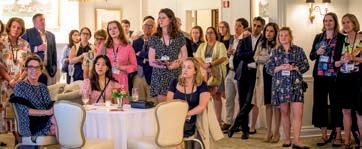
On June 26, the summer receptions series launched with gatherings in Brookline, MA, and Seattle. Thank you to our hosts, Laura and Bruce Monrad ’80 at The Country Club (above), and Andrew Bleiman ’98 at Maximillien Restaurant (below right).
Speaking to the East Coast crowd, Rector Kathy Giles offered an update on life at the School and the important work being done to look at its facilities, which includes restoring or repurposing some older buildings while constructing new ones to foster community connection and energy: “It’s our time to steward the School in all the ways that will make it worthy of the centuries to come, so that there will still be a home for children that inspires and transforms them to commit themselves to learning and growing and serving the greater good,” she said. “If you love the School and you loved your experience, you did that on the belief and the support of people a century before us. … We have to take very, very good care of our beautiful school because the ripple effects of a St. Paul’s education continue to change the world.”
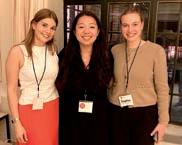
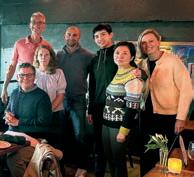
On May 14, SPS Trustee Lisa Hughes ’78, P’17,’19, Iain Hughes ’17 and Livia Hughes ’19 hosted an evening for alumni in the Forms of 2015–2020 in support of The SPS Fund at their home in NYC. Shown here are Livia Hughes ’19, Alison Liu ’20 and Sophie Ward ’19
Rector Kathy Giles presented Seikei School Principal Naoto Senda with a bowl commemorating the 75th anniversary of their schools’ exchange program.
Shattuck Event Celebrates Philanthropy
With a spectacular view of Midtown Manhattan’s Chrysler Building, more than 50 St. Paul’s School alumni, parents and guests gathered in New York City on March 26 for the inaugural Shattuck Society and 1856 Society: Coits Circle dinner. Hosted by Trustee Susan Fales-Hill P’21 and Aaron Hill ASP ’80, P’21,,the evening honored members of the SPS community whose lifetime gifts exceeding $1 million or fiscal year 2024 gifts exceeding $100,000 represent an investment in the future of the School campus and its students. The event featured remarks from the hosts as well as Rector Kathy Giles, Board of Trustees President David Scully ’79, P’21 and Chris Fleischner ’89, P’22.
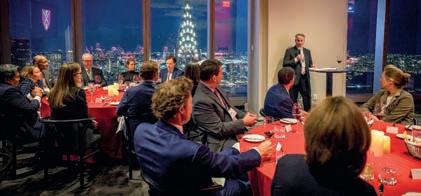
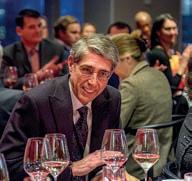




SEPTEMBER
DECEMBER




’94, P’24,’25
Board President David Scully ’79, P’21 offers remarks.
Chris Fleischner ’89, P’22
Susan Fales-Hill P’21
Leslie Fleischner P’89,’91, Rector Kathy GIles and Jacob Ruttenburg ’13
Morty Singer P’27, Mae Karwowski ’04
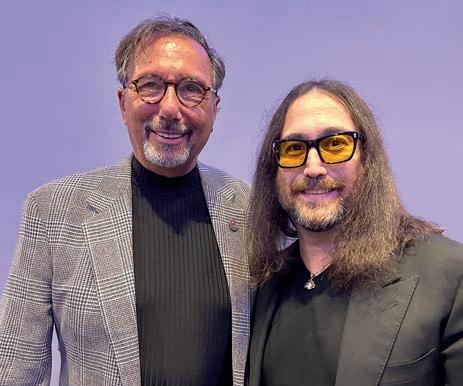
in my life
From Wonder to Lennon, Dan Barbiero ’62 looks back on his brief but memorable career in the music industry
JANA F. BROWN
In a late-night recording session for the 1973 EP “Mind Games,” John Lennon told Dan Barbiero ’62 about leaving the Beatles, sharing that the group had “done it all” and “were ready to come apart.”
Though not exactly a parallel experience, Barbiero felt similarly after working extensively with Lennon and another music superstar that year, 23-year-old Stevie Wonder. Feeling he’d already achieved more than he imagined, Barbiero did the unexpected — he left the music industry.
“I’d accomplished the dream,” Barbiero says, “and once I did that, sound engineering became more like a business than a creative pursuit.”
Since that magical year, Barbiero has lived many lives as a financial manager, real estate developer, father and grandfather. But decades later, his time as a recording engineer for Wonder and Lennon remains his most unforgettable. In 2023, Lennon’s son, Sean Ono Lennon, asked Barbiero to reflect on his work with the Beatles icon for the liner notes of a remastered version marking the 50th anniversary of “Mind Games.” The task brought with it a flood of memories.
Barbiero’s musical journey began early. His
mother, a talented musician herself, enrolled him at Saint Thomas Choir School as a sixth grader. The “Italian kid from Long Island” continued to grow as a musician at St. Paul’s School, singing in the choir, forming a jazz trio with Forbes Tilghman ’62 and Chad Floyd ’62, and appreciating other opportunities like watching the Mitchell-Ruff Trio perform at the School.
At Yale, Barbiero roomed with SPS formmate John Kerry and majored in psychology. He served three years in the U.S. Marine Corps, including a tour of duty in Vietnam from 1967 to 1968.
After his service, Barbiero moved to the Virgin Islands, where he worked various jobs, including as a radio announcer. His brother worked at Media Sound Studio in New York and suggested Barbiero take his position when he left to join a band. Initially assigned to the shipping department, Barbiero rose to studio assistant and eventually sound engineer.
His breakthrough came when Wonder arrived at Media Sound to record in the studio’s converted space in a Baptist church. The two connected immediately, with Barbiero singing melodies that Wonder transformed into harmonies. Their chemistry was so
strong that Wonder requested Barbiero as his engineer for the recording of “Innervisions,” which won multiple Grammys, including Best Engineered Non-Classical Recording.
Barbiero carries profound respect for the musical genius he witnessed. “There are a lot of very good musicians,” he says, “but to be at Stevie’s level … it was like sitting next to Mozart.”
Barbiero’s contributions to “Innervisions” were significant. He remembers encouraging Wonder to push himself vocally during one 3 a.m. session for “Living for the City,” knowing the song needed a particular rasp only exhaustion could deliver.
“Stevie wanted to quit; he was tired,” Barbiero recalls, adding that he also introduced Wonder to the phaser effect, the swirling, psychedelic sound that became an important sonic element on the record. “I knew for that song his voice had to get to a certain ragged sort of edge. We did one more track, and that’s what we kept.”
B arbiero believes it was Wonder who referred him to Lennon. In the fall of 1973, Barbiero began working with the former Beatle on “Mind Games.” Their first night together at Record Plant Studio A set the tone for their relationship.
“We didn’t even turn the equipment on,” Barbiero says. “He gave me a night of his life to just talk.”
The two developed a close working relationship. Perhaps because he was young and brazen, Barbiero didn’t have a problem with honesty — during one of their sessions, he told Lennon his vocals were “a little out of tune.” It turns out Lennon was more insecure than fans might imagine.
“John didn’t like how his voice sounded,” Barbiero says, “so we’d run it through all kinds of equipment to make it sound fuller.”
Barbiero also recalls Lennon’s humility; the former Beatle told him, “I’m no Stevie Wonder, I’m just a pretty good rhythm guitarist.”
In his post-music-industry career, Barbiero built Beacon Financial, a retirement advisory company he has since sold. He’s now happily retired to his home in Glen Cove, New York.
The call from Sean Lennon inviting Barbiero to reflect on his past brought it all back. While those days are a distant memory, a 1974 black-and-white portrait of John Lennon still hangs in Barbiero’s home office. It watches over him and serves as a reminder of his work with two legends.
Dan Barbiero ’62 with Sean Lennon.
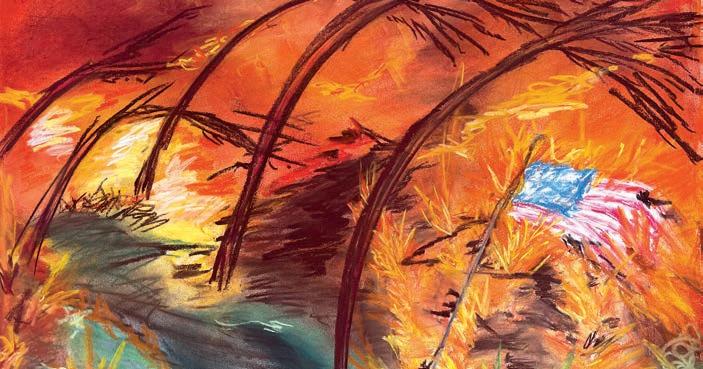
in the moment
Catherine Gallagher ’77 shares what it was like to witness the January wildfires that devastated Southern California from her home near the Angeles National Forest.
First, the winds came.
Fierce winds, knocking down trees, driving out power. Whole streets dark; strewn with downed branches. Neighbors texting, “Are you okay?” “So far ... so far,” came the responses. A dry hurricane with 100 mph winds — hatches battened, hunkered down.
Then the fires.
Countless warnings of not one but two urban conflagrations, every alert a shot of adrenalin. Evacuation zones extended, then extended more. We were a town away, but embers travel for miles in fierce winds. Suitcase packed and by the door, ready to go. Alerts at 4 a.m. shook us from restless sleep. In crucial places, alerts failed to sound.
Texts to our neighbors, friends and family rattled the silence. Later, with power and communication down, we couldn’t reach our loved ones to reassure them.
The angry glowing hillsides sent up bursts of yellow as new trees caught fire. It seemed so close in the dark. “I’m leaving town,” said one friend. “I’m still here,” said another. “My house is gone,” said a third.
The news was jarring: Firefighters’ water blown back at them. Air crews grounded.
Fires spreading, spreading. Some idiot’s drone grounded a Super Scooper firefighting aircraft from Canada. Our lovely northern neighbor sent another. Our southern neighbor, Mexico, and the Navajo Nation sent brave firefighters. Beautiful humans helping humans.
Next came the smoke.
The sun rose, the winds died, and we looked to our hillsides to see billowing clouds in tones of sickly ochre. Smoke blanketed towns while authorities warned us that airborne toxins and asbestos would not register in traditional Air Quality Index (AQI) apps. Not safe to go outside.
We began to hear of the devastation. A friend lost her home. So did a co-worker, then another. Two women I enjoyed sports with; one I broke bread with; a friend whose concerts I attended. Soon, we knew 60 people in our church congregation had lost everything. We realize how our lives are intertwined when the strings of one, and then another, are burnt away.
We began to hear of deaths. The man found by his home still holding a garden hose. The elder living alone.
Those not directly affected began to rally. Food, clothes, water, diapers, blankets, toothbrushes and more filled local Ys and churches. It was our desperation to help that drove us, but we were creating our own disaster of stuff. “No more!” the aide
groups cried. “Send us money so we can help people get shelter and buy what they really need.” So many fundraisers, hundreds of Go Fund Me posts. Story after story, picture after picture. Devastation front and center met with generosity from friends of friends of friends.
In the ashes.
A month later, many still could not return even to comb the wreckage; others were allowed in with hazmat suits and gas masks. They found so little. A ring. A statue.
The rains came. Bad ones, but usually the k-rails and flood bags held. Every prediction of rain brought joy and trepidation. Our smoldering embers would be doused, but our hills might begin to slide.
Rally and rebuild.
Five months later, and the heavy trucks still line up to clear away debris. Neighbors fight against predatory purchasers looking for a quick profit in what was historically a redlined neighborhood of community and hope. One group helps raise voices and rally, another helps residents afford to rebuild. Arborists and experts work to minimize hasty decimation of salvageable trees. Volunteers continue to shelter and rehouse animals. We put mesh in our attic vents and rip up flammable non-native plants. We attend workshops to “harden” our yards and homes from future fires. We pray we stay out of their paths.
The fierceness of the winds and flames, captured in an image by the Altadena Mountain Rescue Team, inspired Gallagher to create this pastel version.
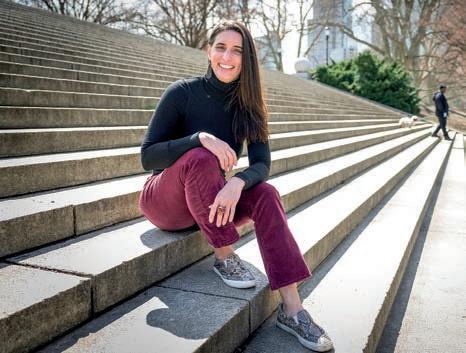
Visual Connection
Immediate past president of the National Press Photographers Association Carey Wagner ’96 is committed to her storytelling — and mentoring others
KATE DUNLOP
With a few hours to kill before picking up her friend at the airport, Carey Wagner ’96 looked around the small Montana town where she found herself. No coffee shops, no obvious space to hang out. She decided to get a manicure — the worst one she’s ever had, but by the time the polish was dry, she’d gotten all the local dirt from her manicurist and the barber working at the next station over, and she left the salon feeling like she knew something about them and their community. It’s what she does as an award-winning Brooklyn-based documentary photographer, filmmaker and educator who just completed a one-year term as the president of the National Press Photographers Association (NPPA): take every opportunity to listen and connect.
Long before earning those titles and working on print and video projects as varied as covering the New York City deathcare community during the pandemic for TIME, gender violence in Papua New Guinea for The New York Times, and Muslim women running businesses in Indonesia for PRI’s The World, Wagner was a student in the late Karen Smith’s photography class at St. Paul’s School.
She was also an intern at the Concord Monitor, where she shot side by side with staff photographer Denise Sanchez during the presidential primary (and ultimately disregarded her advice to do anything but become a photojournalist).
Wagner’s forays into the greater Concord community, and New Hampshire at large, introduced her to all kinds of towns and people outside what she calls the SPS bubble. It was the beginning of her awareness that storytelling can take one into a community and help build one while working with likeminded partners. That awareness grew throughout her years at University of California, Berkely, where she studied cognitive science and Spanish and served as the photo editor for the student newspaper.
“I had constant deadlines, I was producing something, it was creative,” she says of those formative days. “It combined my love of being physical with observing people, being out and about, getting to know the community. It was fun, too.”
Wagner gave herself two years to work in newspapers and after 9/11, landed a job at a tiny paper in California. For the next 10
years, at California and Florida papers, she covered everything from sports to the unhoused to the impact of methamphetamines on individuals and communities.
“ There’s a lot of improv when you’re working on stories; you don’t always know what you’re going to find, and that appealed to me,” she says. “There’s a lot of creativity in storytelling and meeting people and trying to depict what the writer is talking about or finding your own way to communicate visually what’s going on.”
Instrumental in launching and sustaining her career was the mentorship of photojournalist John McDermott (everything is negotiable was one lesson), and now mentoring others is a big part of what Wagner enjoys.
“Guidance, for John, was so simple, and you realize it’s just not that hard; when people say ‘I can’t be a mentor because what do I know’ … yes, you can! There are things that are second nature to you that someone doing it for the first time needs to know,” she says. “John reminds me that I need to give back, so I’ve always volunteered and donate what I can. It comes back to St. Paul’s and acts of service. Ultimately, it’s not about what you did but how you can help others shine in their own lives.”
Wagner’s term as president of the NPPA — the culmination of a long affiliation that began with volunteering in the nonprofit’s mentorship program and service as a regional chair — was devoted to helping others shine. The role became a second full-time job, but she relished the even broader community she found, and created, through the opportunity.
Now, she’s returned to concentrating on running her business and working with editorial, nonprofit and commercial clients; her recent storytelling has focused on social emotional learning in public education, narrowing the gender gap in tech, financing women entrepreneurs in Peru and connecting with a growing refugee population worldwide.
“I’m a woman business entrepreneur in New York,” she says. “It’s not easy, but I meet amazing people all the time, women and men who are really defying the odds and redefining things.” Wagner says her job feels particularly important now, during a period when journalism is facing unprecedented scrutiny. “I really do believe that it’s important for us to share the truth of what’s going on around us as best we can.”

artistic motivation
Jorge Silva ’08 combines business acumen, social justice and creativity in his theater work
JANA F. BROWN
Most days put the problem-solving skills of Jorge Silva ’08 to the test. As the director of business operations and managing director at Northwestern University’s Wirtz Center for the Performing Arts, he oversees a slate of 40+ productions per year — and he’s usually got a hand in every detail.
“I’m trying to produce a show on a regular basis while figuring out how to overcome hurdles,” says Silva, who’s been in his role since 2022. “A lot of my day is figuring out how we get a director at a certain time; how we do something when we don’t have the money; or how we apply a certain policy. We also don’t want to forget we’re part of a community and want to serve our audiences.”
A self-described producer, storyteller and activist, Silva’s career has evolved into one that uses the power of narrative and collaboration to drive social change. He grew up on the south side of Chicago, attending public schools before receiving a scholarship to St. Paul’s, where he discovered an affinity for theater, especially after finding community through a Fiske Cup production of “The Full Monty.”
Life at SPS was challenging at first for Silva, the only child of a close-knit Latino family. His culture shock, however, was met with support from his teachers, who encouraged intellectual curiosity.
“I wanted to be this crunchy, angsty, leftleaning kid listening to Rage Against the Machine,” Silva recalls. “And whereas that seemed weird to lots of people, they were like,
‘Cool, how do we build on that?’”
Silva went on to study government and theater at Cornell (with minors in Latin American and Latino studies). His decision to pursue multiple subjects allowed Silva to explore how they informed one other. He found that many of his classes on topics such as politics in Latin America and gender/sexuality were able to translate directly to the stage.
“I saw overlap and synchronicity between politics and theater,” Silva says, “because politics is one big show, and there’s a lot of politics in art. But I was also in a bit of a denial about whether I was going to be a theater artist, because I’d started on the pre-law track and my parents thought, ‘Great, he’s going to be a lawyer. We can relax.’”
Although he changed course, Silva has done anything but relax. After Cornell, he joined a touring theater collective in South America to study global performance methodologies. That experience set up his next move to Washington, D.C., where he spent three years as an actor and then production manager at the Smithsonian Institution’s Discovery Theater.
After struggling to find acting roles beyond Latino stereotypes, Silva transitioned to fulltime work as a producer. In 2015, he returned to Chicago, where he initially worked as producing coordinator for the Goodman Theatre, a multifaceted role that included oversight of its play festival. He was then recruited to serve as executive director of the Neo-Futurists, an experimental theater company, where he
learned to balance the artistic and operational demands of running a nonprofit. He also experienced the challenges and benefits of consensus-based decision-making, a model of “participatory and procedural justice” he’s now integrating into his work at Northwestern, with the hope of making the arts pipeline in Chicago more inclusive.
Silva also found time to pursue an MBA at the University of Chicago Booth School of Business, where he was a Neubauer Civic Scholar, while also completing a Global Arts Management Fellowship at the University of Maryland. His background in arts and activism shaped his current role at the Wirtz Center.
“I don’t feel like art lives in a vacuum,” Silva explains. “If we’re speaking to ideas, we also have to be willing to act on those ideas.”
That philosophy manifests in Silva’s work, which includes teaching in the graduate program at Northwestern while producing thoughtprovoking theater that grapples with social issues. He remains driven to create more equitable arts practices that aspire to reach underserved communities. While Silva’s focus remains on the arts and nonprofit management, he’s entertained the idea of entering the political arena.
“The motivation is wanting to see this cultural fabric that’s economically vehement to the city of Chicago,” he says. “I want to see it improve, grow and have meaning. And I also want to be able to reach people it’s not currently reaching, which felt like me for many years.”
This section was updated May 24, 2025. Please note that deaths are reported as we receive notice of them. Therefore, alumni dates of death are not always reported chronologically.
1944 – Alexander K. “Mike” McLanahan
Jan. 1, 2025
1944 – Ross Whistler
April 15, 2025
1946 – The Rev. H. Bacon Collamore Jr.
Feb. 13, 2025
1948 – Herbert Barry III
Jan. 9, 2025
1948 – Bradley L. Coley Jr.
May 12, 2025
1948 – Clarence Hopkins “Clacky” King Jr.
Dec. 20, 2024
1948 – Byam Kerby Stevens Jr.
April 11, 2025
1949 – Thomas G. Moore
Aug. 23, 2024
1949 – Michael Peirce
April 10, 2025
1950 – Daniel Collins
April 15, 2020
1950 – James L. Harrison Jr.
March 29, 2025
1950 – James R. Shepard
Nov. 19, 2023
1950 – Robert A. G. Monks
April 29, 2025
1951 – William V. P. Newlin
Dec. 11, 2024
1951 – Morton T. Saunders
Jan. 7, 2025
1952 – John Henshaw Crider Jr. Dec. 20, 2024
1952 – Albert Francke March 2, 2025
1952 – Edward T. Taws Jr. Feb. 26, 2025
1953 – Henry P. Elliott Jr. Feb. 14, 2025
1955 – J. Howard Boulton
April 19, 2024
1956 – Henry Lawrence “Larry” Bogert III
March 14, 2025
1956 – Walter H. Lippincott Jr.
Jan. 18, 2025
1957 – Edmund Quincy “E.Q.” Sylvester III April 30, 2025
1958 – Troy R. Douthit Jr. March 16, 2025
1958 – The Rev. William C. Riker Jr. Feb. 2, 2025
1959 – Louis H. Orr III
Jan. 13, 2025
1960 – Samuel Lord “Sam” Brookfield Jr. Feb. 5, 2025
1960 – Anthony Drexel “Tony” Duke Jr.
April 14, 2025
1960 – William Henry Marmion Jr.
March 29, 2025
1960 – Henry Tilford “Tim” Mortimer Jr. Jan. 16, 2025
1961 – Peter Brice Britton
April 26, 2024
1963 – David Courtney Evans
March 9, 2025
1965 – John K. Motsinger Sr.
Jan. 7, 2022
1965 – Peer E. Wedvick Jr.
May 4, 2025
1965 – Richard T. Young Feb. 16, 2023
1966 – Thomas N. Lea
April 6, 2025
1969 – Graham Gardiner Wisner
Jan. 8, 2025
1970/1971 – John B. Warner
Feb. 18, 2025
1975 – Francis Moors “Frank” Bradley Nov. 26, 2024
1983 – George T. Campbell III
Dec. 17, 2024
1984 – Jay H. Finney
Aug. 6, 2024
1996 – Terrance Pedro Edney Sr. April 13, 2025
FACULTY
Charles J. Lemay
May 22, 2025
Robert J. Powell
Jan. 17, 2025
Mary Louise Gilman Sawyer Spouse
April 21, 2025
STAFF
Georgia Allard
May 6, 2025
Timothy J. Crutchfield
April 13, 2025
Doris Eriksson
Oct. 7, 2024
Mary A. Gaudette
May 24, 2025
Catherine M. Green
Jan. 11, 2025
Keith Harmon Sept. 1, 2023
Connie Strome
May 6, 2024
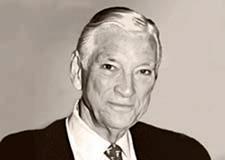
1944
Alexander K. “Mike” McLanahan gentleman, raconteur, athlete, veteran and devoted Houston arts advocate, died peacefully at 98 on Jan. 1, 2025. Born in Paris in 1925 to Alexander H. McLanahan and Frances Gurr McLanahan, he spent his first four years and many summers there before enrolling at St. Paul’s School, where he rowed for Shattuck and was active with the Library Association.
At 17, Mike enlisted to serve in World War II as a nose gunner and bombardier on a B-24 Liberator in the 15th Air Force. He flew 34 missions over Austria, Germany and Czechoslovakia; anti-aircraft fire damaged his plane twice, forcing parachute evacuations that required rescues by Yugoslavian partisans. His service decorations included the Air Medal and three oak leaf clusters.
Mike earned his undergraduate degree at Yale in 1949 and then embarked on a multifaceted career. He began working as a roustabout with Shell Oil in Oklahoma, then moved to Texas and joined oil explorer Francis Callery. He later entered the investment business and worked at Dominick & Dominick; White, Weld & Company; Paine Webber; and UBS.
While serving from 1972 to 1978 as board president of The Museum of Fine Arts, Houston, Mike helped enhance its endowment and presided over the construction of Ludwig Mies van der Rohe’s Brown Pavilion (dedicated in 1974). In 1978, he took a sabbatical from his investment work to become the museum’s full-time president, then returned to the business sector two years later with Blocker Energy; Donaldson, Lufkin & Jenrette; and as a director of Bellwether Exploration.
In addition to his devotion to the museum, Mike advocated tirelessly for art and education organizations. He served on the Smithsonian’s National Board, President George H. W. Bush’s Committee on the Arts and Humanities, and the boards of the Yale University Art Gallery (life trustee), St. John’s College
(Annapolis and Santa Fe) and the Chrysler Museum of Art (Norfolk, Virginia). He also served with The Experiment in International Living and loved taking foreign visitors to their first baseball games at the Astrodome.
Closer to home, Mike was a supporter of and activist for the arts in his adopted hometown and was proud of helping to instigate the hotel-motel tax, which enriches the arts throughout Texas. An aficionado of music and opera, he served as the founding chair of the Cultural Arts Council of Houston (now the Houston Arts Alliance), which distributes millions of dollars annually. He served on the boards of the Downtown YMCA, Houston Grand Opera, DACAMERA, Houston Center for Photography and Houston Symphony (life trustee). He helped establish the Houston Artists Fund and the Houston Arts Festival.
To say that Mike loved interacting with people is an understatement. He was an active member of the Travellers Club (Paris), Knickerbocker Club (New York), and in Houston, the Coronado Club, Bayou Club and Houston Country Club. He led the Houston chapter of the Chevaliers du Tastevin for Burgundian wine lovers. He also loved counseling young people who sought his advice about the future.
An avid sportsman, Mike was the pingpong champion of his World War II squadron in Italy. He was a JV oarsman at Yale, and he captained Yale’s undefeated squash teams of 1948 and 1949. A tennis buff for decades with a dedicated group who played well into their 90s, he enjoyed heated battles on the court, always followed by a celebratory glass of wine. He never missed a bodysurfing opportunity and loved hunting birds with close friends in South Texas, Mexico and Argentina.
In all his endeavors, Mike relished his relationships. He particularly loved his small, close-knit family and his sports associates, as well as his faithful golden retrievers and pugs. His family enjoyed many good times together in Estes Park, Colorado, at Rocky Mountain National Park and at the home in France where Mike grew up.
Mike is survived by his beloved wife of 71 years, Mary Ann “Muffy” McLanahan; his son, Alexander Gurr “Sandy” McLanahan, and his wife, Mary Flournoy McLanahan; his daughter, Lynn McLanahan Herbert and her husband, William Andrew Herbert; and his grandsons, Ian McLanahan Herbert and his wife Jashin Ra Friedrich, and Francis Henry Herbert.
1945
Anthony M. “Tony” O’Connor of Essex, Connecticut, died Aug. 2, 2024, at the age of 97.
Tony was born in New York City on Feb. 7, 1927, the son of Robert B. O’Connor and Mary Wistar (Morris) O’Connor. He grew up in Mt. Kisco, New York, except for several years in Switzerland during the Great Depression.
While a student at St. Paul’s School, Tony competed with Delphian and Shattuck. He played football and also ice hockey, a sport he continued to play into adulthood. He was a Sixth Form supervisor, treasurer of the Missionary Society and secretary of the Student Council. He was also a member of the Student Cultural Alliance. After graduation, he joined the U.S. Marine Corps and trained to be deployed in rubber boats from submarines to perform reconnaissance. He was on a troop ship to China to be part of the invasion force when the war ended. He remained in the Marine Corps Reserve and, following graduation from Princeton, was recalled to active duty and served at Camp Lejeune until 1951.
Following a stint at the Pentagon working with famed Special Operations Executive Virginia Hall, Tony joined the investment banking firm of Smith Barney & Co., for which he opened the Tokyo office and helped bring many Japanese companies that are now household names to the American stock markets. He became a first vice president and managing director of the international division before retiring and opening his own investment consulting firm.
In addition to his professional life and spending time with his family, Tony enjoyed following the New York Rangers, gardening and playing tennis at his summer home on Martha’s Vineyard.
He was survived by his wife of 66 years, Suzanne Perry O’Connor, who subsequently died at her home in Essex on Nov. 17, 2024; their sons, Anthony M. O’Connor Jr. ’77 and Edward R. O’Connor (Christi); four grandchildren; and his brother, Robert B. O’Connor ’44. He was preceded in death by his daughter-in-law, Susan Kearing O’Connor, granddaughter, Perry O’Connor ’13, and brother Fenwick.
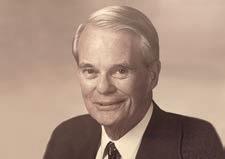
1946
The Rev. H. Bacon Collamore Jr. died at his home in Naples, Florida, on Feb. 13, 2025.
Born on June 25, 1928, in Hartford, Connecticut, he was the son of Dorothy Rowe Collamore and H. Bacon Collamore. He attended local schools before graduating from St. Paul’s School and Princeton University. He later earned an MBA from the University of Hartford and a certificate in pastoral counseling from St. Joseph College.
At the beginning of his career, Bacon worked briefly for Arrow Hart & Hegeman before joining the American Leasing Corporation in Hartford. He enjoyed a long career there, serving as its president. He also was president of the American Association of Equipment Lessors, a prominent national trade association.
Active in civic affairs, Bacon was a corporator of both Hartford and St. Francis Hospitals and served on the board of the American School for the Deaf. He was a member of the board of the Church Home of Hartford and spearheaded the planning and building of the Seabury retirement community in Bloomfield. Bacon was an ordained deacon of the Episcopal Church, serving at Trinity Church in Hartford, Old St. Andrew’s in Bloomfield and Trinity-by-theCove in Naples.
In recent years, he had been active in the Residents’ Association at Moorings Park, serving as its president, and in the Minor League of Naples and the Princeton Club of Southwest Florida.
Bacon was predeceased in 2022 by his loving wife of 71 years, Elizabeth (Betty) Jones Collamore. He is survived by their children, Harry; Bruce and his wife, Laurie; and Tom and his wife, Jacqueline; seven grandchildren; and three great-grandchildren.
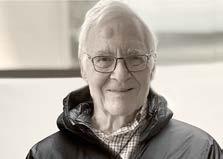
1948
Herbert Barry III died peacefully on Jan. 9, 2025, at the age of 94. He spent his last days with his three nieces and his loving caregivers, with visits and calls from family and friends.
Professor Emeritus of the School of Pharmacy at the University of Pittsburgh and longtime resident of Oakland, Pennsylvania, Herb was a quintessential academic, with thick eyebrows, rumpled suits and an intense gaze that showed he was really listening. A prolific scholar, he authored or co-authored more than 250 publications. His extensive body of work included research in psychopharmacology, cross-cultural studies and psychohistory. Beyond his academic work, he also contributed a column to the Western Pennsylvania Mensa Society newsletter and worked to make his essays appeal to nonacademic audiences. He was known for having a stack of blank computer punch cards in his jacket to take notes.
Born in New York City and raised in Cambridge and Brookline, Massachusetts, Herb earned a B.A. in social relations from Harvard in 1952 and continued his studies at Yale, earning an M.S. in 1953 and a Ph.D. in experimental psychology in 1957.
His early research focused on repeated experiments using laboratory rats to test learning, memory and behavior in controlled environments. The results provided critical insights applicable to human psychology. His research on the behavioral effects of psychoactive drugs earned him national recognition, including a Research Scientist Development Award from the National Institute of Mental Health, the Distinguished Scientist Award from the Society for the Stimulus Properties of Drugs and a Lifetime Achievement Award from the Psychohistory Forum in 2023.
Though he never married, Herb shared his life with bright, independent women, most
notably Helene Borke, a clinical psychologist and faculty member at Carnegie Mellon University, with whom he traveled extensively during their 20-plus year partnership. As an uncle, he always made time for holidays and brought gifts, along with photocopies of his latest essays. He was a former director of the University Club, a member of the Pittsburgh Athletic Association, and he sang in the choir of the First Unitarian Church of Pittsburgh. He stayed active, swimming daily, playing tennis and squash and competing in chess tournaments. Surrounded by awards in his sitting room, he would say he’d had “slightly better-than-average success.” Herb’s legacy is one of intellectual curiosity and real commitment. He remained as curious at 93 as he was as a boy.
Herb is survived by five nieces and nephews, Lucy Patricola, Cynthia Johnson, Godfrey Baker, John Baker and Parrish Robe; Helene’s two daughters, Louise and Susan Borke, as well as their children, who all had the good luck to get to know him well.
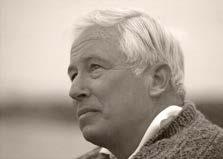
1948
Clarence Hopkins “Clacky” King Jr.
died peacefully at home in Easton, Maryland, on his 95th birthday with his wife, Sandy, by his side.
Born two months after the start of the Great Depression in 1929, Clacky was the third child of Clacky and Marian King and trailed eight to nine years behind sister Lucia and brother Gregg.
His journey to St. Paul’s School as a Fourth Former was not easy. As one of only two students from Missouri, he had a hard time just getting there. He was grudgingly allowed an extra day of travel time by the Rector’s assistant, who initially doubted that he lived “west of the Mississippi.” Clacky’s elderly parents occasionally dropped him off at Union Station in St. Louis without a railroad
ticket. Friendly college students on the way to Northampton learned this and hid him in the upper berth while the conductor passed by; he usually had a few dollars to get the rest of the way to Concord.
Most teachers these days would instantly recognize that left-handed Clacky was dyslexic, but that went undiagnosed in the 1940s. He got through St. Paul’s by native smarts, sheer determination, a great deal of hard work and his smile.
An Old Hundred, he spent time in the last hockey rink on the Lower School Pond. In spring, he warmed the seat in the fifth or sixth Halcyon boat. While athletics were not his forte, photography was. His formmates remembered him always with a large Speed Graphic camera in hand or emerging from the darkroom with most of the pictures that appeared in The Pelican and the SPS Pictorial during his time at St. Paul’s.
Through determination and perseverance, and by holding the Rector to his promise of getting him into Yale if he made the “blue list” for two semesters straight, he graduated from Yale in 1952. A Naval ROTC graduate, Clacky took his commission and served on the USS Wisconsin during the Korean conflict as a gunnery officer on the 16-inch and 5-inch gun batteries. His film negatives of a cruise around the world to Hong Kong, Korea and through the Panama Canal stand as his record.
Clacky’s professional career in the architectural hardware industry was based on his gift of making friends and delivering on what he promised. He became a successful executive and later manufacturer’s representative, sailing his yacht around Michigan with his clients. Sailing on Lake Michigan during childhood summer visits to Charlevoix had been a wonderful escape from the summer heat and humidity of St. Louis and gave birth to his lifelong love affair of boats — a passion that he and his second wife, Sandy, shared.
He was proud that both of his and the late Toni King’s children graduated from SPS. He was particularly pleased that his daughter, Toni King Callahan ’76, went on to spend many years at SPS as an admissions officer, French and German teacher and later faculty spouse. Two granddaughters, Sarah Callahan Koontz ’05 and Bronwen Callahan ’08, are also SPS graduates. Clacky spoke fondly of his time at SPS and of lifelong friends from the Form of 1948.
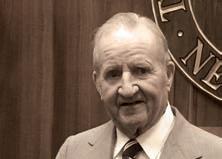
Byam Kerby Stevens Jr. of Cove Neck, New York, died April 11, 2025, at the age of 94.
The son of Byam K. Stevens of the Form of 1915 and Clare Reynders Stevens, he was born June 19, 1930, in New York City. He attended Green Vale School and the Malcolm Gordon School before enrolling as a Second Former at St. Paul’s School.
At SPS, he participated in the Propylean and Concordian Societies, the Glee Club and Scientific Association, and he chaired the Yearbook Committee before graduating magna cum laude. He was coxswain of Halcyon crews from his initiation turning buoys on Lower School Pond to the Halcyon first boats (194648) and the 1947 SPS crew.
At Yale, he coxed the varsity heavyweights for two years, including the Centennial Harvard-Yale Regatta in 1952. He became a lifelong advocate of the sport with US Rowing and scholastic, collegiate and amateur rowing organizations across the country.
Byam began a career in investment management as a research analyst for Abbott, Proctor & Paine. In later years, he joined Smith Barney, Harris Upham & Co., Inc. and then Wellington Capital before retiring in 1995.
Byam’s commitment to St. Paul’s was lifelong — he served as a form agent, form director and president of the Alumni Association prior to joining the Board of Trustees. He served on many other nonprofit boards, often in an investment management capacity, including American Ballet Theatre, Green Vale School, the Malcolm Gordon School and the King Manor Museum. He served as the mayor of Muttontown, New York, for many years and was active on the village planning and zoning committees.
Byam enjoyed summers cruising the East Coast from Long Island to Maine with family and friends, skiing and golfing. His cultural interests led him to travel extensively in Europe, Asia and Africa.
Byam was predeceased by his wife of 66 years, Priscilla. He is survived by his second wife, Marian Verlander Stevens; daughter Priscilla (Robert Polk); sons Byam ’71 (Robin), Alden ’73 (Patty) and Brooke ’75 (Leslie); six grandchildren; and seven great-grandchildren.
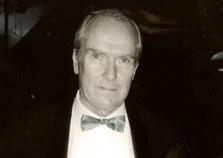
1952
John Henshaw Crider Jr. died in Brandon, Florida, on Dec. 20, 2024, one day shy of his 91st birthday. The oldest child of John Henshaw Crider and Maxine Roemer, he was born in White Plains, New York, on Dec. 21, 1933. He was a resident of Nashua, New Hampshire, before moving to Florida in 2018. He is remembered for his love of family and his quick literary wit.
John attended The Emerson School for Boys in Exeter, New Hampshire, before graduating from St. Paul’s School and Harvard. He was employed by Arthur D. Little Inc., a mica engineering company in New Hampshire, and BTU Engineering in Billerica, Massachusetts. He installed in-home stereo equipment for a company in the Lake Tahoe area for several years before he returned to the Boston area to consult on technical advertising projects.
Gifted musically, John played piano on Nantucket; in Stowe, Vermont; and in Boston. He joined the Nashua Choral Society around 2002 and was a member of the Sitzundjibers, a Boston Social Club.
He is survived by his former wife, Ruth Eddy Gardner; their children, Benjamin Coffin Crider (Laurie), Katherine “Katie” Eddy Crider (the late Art Stewart) and Mary Georgiana Carper (Steve); and siblings Peter R. Crider and Cynthia Crider Doolittle. He was proud of his growing family that includes George, Erica, Danielle, Sarah, Channing and Samuel and great-grandchildren Abigail, Madison, Atticus and Luca. He also leaves many nephews, nieces and cousins, and a best friend, William Precobb.

1953
Abram Carrington Read
Charlton Sr.
died on April 29, 2024, in Farmville, Virginia, after a brief illness. He was 88. He was a longtime resident of Greenfield Plantation in Charlotte County, Virginia, which has been in his family since 1771.
Read was born on July 15, 1935, in Savannah to Thomas Jackson Charlton IV and Anne Read Charlton, and he led an extraordinary life. After St. Paul’s School, he graduated from Yale with a B.A. in art history and a degree from the Yale School of Forestry. He served in the U.S. Marine Corps and the U.S. Army. He worked for the federal government in Laos and also in Paris during the Paris Peace Accords and served as an analyst for the Army until his retirement in the 1990s.
An avid outdoorsman, Read loved fishing and duck hunting, and he particularly enjoyed trips to the Edisto River in South Carolina and Ocracoke Island in North Carolina. In his later years, he preferred to observe wildlife, of which there was no shortage at his home. A passionate steward of the Greenfield estate, he put it under a conservatorship to help ensure it would not be developed after his passing.
He is survived by his wife of 54 years, Ann Morris Charlton; children Abram Carrington Read Charlton Jr. and Sarah Elizabeth Charlton Detrick; son-in-law Thomas Richard Detrick; and grandchildren Samuel Read Detrick and Carrington McClaran Detrick. He is also survived by his brother, Thomas Jackson Charlton ’52, and many beloved nieces, nephews and close friends. He was preceded in death by his sister, Anne Charlton Anderson.
1948
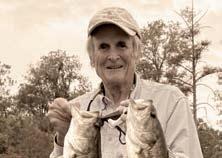
1955
William Lytle Nichol IV died on June 24, 2024, at the age of 87. He was born on May 10, 1937, in Memphis, Tennessee, the first child of William Lytle Nichol III and Mary Meade Swayze Nichol. He grew up in Memphis and attended Snowden School.
In the fall of 1952, Lytle joined several other Memphis boys at St. Paul’s School, where he played varsity basketball and football for Isthmian and rowed for Halcyon. The three years he spent in Millville were among his most formative, and he made many lifelong friendships. Lytle matriculated to the University of Virginia on an NROTC scholarship, completed his degree in three years and completed his first year of law school at the University of Virginia before serving three years in the U.S. Navy as a communications officer.
After graduating law school in 1964, Lytle joined the Memphis firm of Evans, Petree, Cobb and Edwards, now known as Evans Petree, P.C., where he practiced for 59 years in the areas of corporate law, estate planning and probate.
He remained an active SPS alumnus, serving as form agent and form director and regularly attending official and unofficial reunions. He also was an avid sportsman whose love of nature and the camaraderie shared in the field or on the water led him across the globe to hunt birds and catch fish. He especially loved spending time with his dear friend and formmate, Johan von der Goltz, on the grouse moors of Dorback Estate, Scotland, and guiding family and friends (including formmate Ethan Emery) on Brushy Lake at Five Lakes Outing Club in Arkansas. Ever the optimist, he always wanted to stay a little longer in the blind or make just one more cast.
Lytle had countless stories and jokes; those who knew him for years or met him only briefly would agree that his most memorable characteristic was his loud belly laugh. This laugh proved infectious, made Lytle easy to locate at large gatherings, and will be dearly missed.
Lytle is survived by his wife, Margaret Wrye Nichol; brother Richard Everard Meade Nichol; sister Esther Habersham Nichol; sons William Lytle Nichol V ’97 and John Harris Clay Nichol ’00; and grandchildren Lytle, Winston, Charlotte and Mary Elliott Nichol.

1956
Henry Lawrence “Larry” Bogert III died after a brief illness on March 14, 2025, surrounded by his daughters and granddaughters. His beloved wife of 30 years, Eleanor (Peri) Wheeler Bogert, predeceased him in 2021.
L arry was born on July 11, 1938, in New York City to H. Lawrence Bogert Jr. and Margaret Milbank Bogert. He attended Buckley School, where he was a star gymnast and held the record for walking on his hands. At St. Paul’s School, he focused on team sports, especially lacrosse, which he played well enough to later compete at the varsity level at Yale.
His childhood summers were spent at Fishers Island, spearfishing for stripers and competing in bullseye sailing races. Loving the shore and being near the sea, Larry brought his family to Southampton and eventually Mecox Bay in Watermill, New York, where he became a longtime resident with many friends who shared his love of sailing, tennis and paddle tennis, parties and dancing.
Like his father, Larry’s career revolved around Wall Street, starting at Spencer Trask and Shearson Lehman American Express before ending at Wellington Shields & Co., where he was an attentive and beloved adviser to his many clients.
L arry is survived by his brother, Jeremiah M. Bogert ’59; daughters Hilary Bogert McKown and Cyrena Bogert Fink; and granddaughters Brigitte, Chloé and Charlotte Fink.
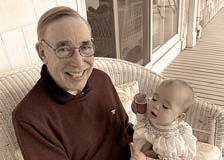
1956
Walter H. Lippincott Jr. died on Jan. 18, 2025, in Lawrenceville, New Jersey, two days after his 86th birthday.
Walter was born in Philadelphia, the eldest son of Helen and Walter Lippincott of the Form of 1928. After graduating from St. Paul’s and Princeton, he found his calling in book publishing. He was director of Cornell University Press from 1983 to 1986 before returning to run Princeton University Press until 2005. Walter took pride in his ability to find excellent talent; he felt that his greatest professional legacy was having helped start and advance the careers of some of the finest people in the business.
Walter had a deep love of opera, and his friends will remember him with the latest high-fidelity speaker system, surrounded by wall-to-wall records, conducting baton in hand. A regular at the Met, he loved following the up-and-coming singers. He also was a big sports fan, particularly of his beloved Phillies and Eagles, although he always knew that something terrible was just around the corner for his teams. Much to his surprise, he was rewarded for his years of suffering with Phillies World Series victories in 1980 and 2008 and then, finally, an Eagles Super Bowl win in 2018.
Walter met Caroline Seebohm at a Super Bowl party in 1973, and they were married in 1974. They shared many interests, including opera, sports and travel. Although they divorced in 1991, they maintained a wonderful partnership until the end of their lives. Their travels took them to Egypt, India, Antarctica (twice), Europe and, perhaps most importantly, Mount Desert Island in Maine. Walter spent time in Northeast Harbor almost every summer of his life, hiking, eating lobster and entertaining guests, and he was able to convince many of his friends that they should be doing the same.
He was keenly intelligent and a lively conversationalist. With Caroline, he would host wonderful dinner parties, bringing together
academics and intellectuals of all disciplines, and never hesitating to provide his own strongly held opinions. His smile and ungoverned laughter were unmistakable.
He was a loving and proud father, and he was a doting and patient grandfather, giggling and bouncing his granddaughter on his lap. His ability to keep taking pleasure in all the varieties of life was inspiring and a sign of a man who lived life well and fully.
Walter is survived by his children, Sophie Ferrer, Hugh Lippincott and Sammy Prentice; his sister, Helen Jennings; and three grandchildren, Hudson, Archie and Josie Ferrer. His brother, Paul Lippincott ’59, died in 1990.
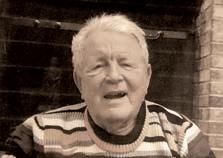
1956
John Prentice Schley died quietly on Nov. 5, 2024, at home on the Island Farm in Whitehouse, New Jersey. He looked out on Rockaway Creek, where he skated as a child, and at a dam he built with rocks gathered from the nearby fields he helped preserve as permanent farmland.
The son of Elizabeth Dickson Boies and Reeve Schley Jr. of the Form of 1927, John’s early schooling began in Fort Riley, Kansas, where his father had enlisted in the U.S. Cavalry at the beginning of WWII. John moved to New York City and attended the AllenStevenson School. At the time, his father was dropped behind enemy lines in France with the OSS. At war’s end, his family returned to the Island Farm, a working dairy farm, and John raised Rhode Island Red chickens and helped make hay during the summers. He played football at Far Hills Country Day School and competed at local horse shows, jumping bareback over post and rail fences.
At St. Paul’s School, John loved playing hockey on the pond and wrote at his 50th reunion about “the black ice and the rumble of the boards, the echo of the sticks, puck and blades on ice, the cry of young boys’ voices with the fading light.” He was captain of the varsity hockey team and captain of the
Delphian baseball team. He also won the 100-yard dash. After a year in Toronto at Upper Canada College, he went to Yale and played hockey on the top line for Murray Murdoch.
In 1963, John volunteered for the Peace Corps and was sent to Brazil to organize 4-H Clubs in Santa Catarina. For months, he would make the rounds to his kids’ chicken farms with a cast on his leg after he broke it in a barefooted soccer game. Later, in New York City, John wrote about his Peace Corps experience and was known for the many stories of his adventures.
On the Island Farm, he set up an equestrian operation and built a state-of-the-art indoor riding facility. He practiced real estate and continued to play hockey with the Far Hills Foxes. The fall of communism in Eastern Europe inspired him to lead hockey trips to Prague, Warsaw, Budapest, Moscow and Slovenia. In several of these cities, he hosted shows for local artists. On a trip to Manchuria, the team was caught in a blizzard. When the plane finally took off from Changchun, John took the microphone and addressed the passengers with a poem describing the Chinese winter landscape. It was translated by Alexander Wilmerding ’82, who was teaching in China at the time.
John is survived by his brother, Reeve Schley III ’54 (Georgia Terry); his niece, Marie Schley ’90 (Nick Morton ’89); and his nephew, Reeve Schley ’93 (Brittney Martin). His grandfather, Reeve Schley, was a member of the Form of 1899.
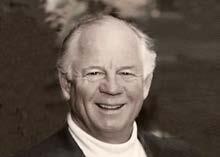
1957
Edmund Quincy “E.Q.” Sylvester III died peacefully on April 30, 2025, at the age of 86 from complications related to pulmonary hypertension. He was surrounded by his beloved family, and typical to his nature, was recounting stories and memories with wit and humor to the very end.
Born in Chicago to Edmund Quincy II of the Form of 1931 and Elizabeth Duval Sylvester, E.Q. lived his life with characteristic enthusiasm and a belief that success was measured not by accolades or outcomes, but by impact, curiosity and courage. Even as a young boy, he stood out. Gregarious and warm, he was elected president of the eighth grade at Lake Forest Country Day School.
He went on to attend St. Paul’s School, where his leadership, athleticism and service took root. A three-sport varsity athlete, he captained the lacrosse and hockey teams, sang in the choir and served as an acolyte. He continued his athletic and academic pursuits at the University of Colorado, graduating with a B.S. in economics and serving as captain of the lacrosse team.
After college, E.Q. briefly served in the U.S. Coast Guard before launching a career in international business. He joined the Rockefellerbacked International Basic Economy Corporation (IBEC), managing poultry operations in Colombia and then leading a new venture in Peru that returned its entire investment in its first year — a feat that earned him the presidency of Arbor Acres de Peru and the role of treasurer of the Peruvian Poultry Association. He then moved into major infrastructure projects with General Motors’ overseas operations, playing a central role in building locomotive manufacturing programs in Argentina and Brazil.
Eventually, E.Q.’s entrepreneurial spirit led him to acquire Fibrex Insulations, a small mineral wool manufacturer. As chair and CEO, he grew the company’s sales tenfold, pioneering innovative pipe insulation products and winning the Ontario Business Award for Innovation. But to E.Q., business was never just about profit — it was about building teams and championing new ideas.
E.Q. also believed that community and connection were essential elements of life. A natural convener, he served as president of the Hinsdale Golf Club, commodore of the North Channel Yacht Club and resident of his beloved Mill Reef Club in Antigua. He also was a director of the Western Golf Association, where he actively supported the Evans Scholars Foundation and the educational advancement of young caddies.
In 2011, E.Q.’s life took an unexpected turn when he suffered severe septic shock. He emerged from the experience a triple amputee, but true to his nature, he was undeterred
and determined to persevere, not just to overcome his disability, but to help others do the same.
He founded the Freedom Golf Association (FGA) in 2012 and the United States Adaptive Golf Alliance (USAGA) soon after. These nonprofits brought the game of golf — and the confidence and joy that come with it — to thousands of individuals with physical challenges. FGA’s inaugural year saw 178 lessons given; by 2019, that number had grown to nearly 9,500. E.Q.’s passion and advocacy earned him the Henry Viscardi Achievement Award and the Alumni Association Award from St. Paul’s School.
A lifelong photographer, E.Q. had a darkroom in his home before the digital era, and his artistic eye captured portraiture and sweeping landscapes, especially around his cherished summer retreat on the North Channel of Lake Huron. He was also a member of the United States Senior Golf Association and the Niblicks Golfing Society, never missing an opportunity for camaraderie and competition.
E.Q. is survived by his devoted wife of 62 years, Katharine Van Dusen Sylvester; his children, Edmund Q. “Kipp” Sylvester IV ’84 (Anne Miller), Phoebe Sylvester Kaylor (Thomas) and Anne Duval Watson (Charles); and 10 adoring grandchildren. He also leaves his siblings, Michael Sparks Sylvester ’59, Ann Blackhurst and Elizabeth Fearnhead.
Whether building global ventures, reimagining life after adversity or simply making others feel seen and included, E.Q. lived boldly and wholeheartedly. He brought people together, made the world better and did it all — one swing at a time.
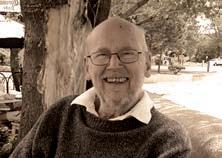
1957
Christopher Fleming “Kit” Pool died of lung cancer in his home in Kennett Square, Pennsylvania, surrounded by his beloved wife and family on July 22, 2024, at age 85.
Kit was born in New York City on April 18, 1939, to John L. Pool of the Form of 1926 and Patricia Martin. He attended St. Bernard’s
School before entering the Second Form at St. Paul’s in 1952. His grandfathers, John L. Pool (Form of 1881) and Drelincourt Martin (Form of 1903), and many other relatives attended SPS.
Kit was well-liked for his ability to laugh, or at least chuckle, in almost any circumstance, and he made many lifelong friends at SPS. He played on the Isthmian football teams of 1955 and 1956 and baseball teams of 1955-57, and the SPS basketball teams of 1956 and 1957. He served as vice president of the Missionary Society, was a member of the Glee Club, Library Association, Mathematics Society, Concordian Literary Society, Le Cercle Français, and was a camp counselor. He was notable for never making negative comments about his fellow schoolmates.
At Princeton, Kit was a member of the Ivy Club; after, he entered the U.S. Marine Corps. During his first job working for New York City’s finance administration in his mid-20s, he underwent a crisis, the outcome of which he described as his most important personal milestone: “the decision to embark on a journey of recovery from the disease of alcoholism.” With the help of Alcoholics Anonymous, Kit recovered. He graduated from Columbia’s Business School in 1970. He met his soulmate, Judith Mason Hoerrner, and they married in 1972. Kit became an instant father to Timothy, Margot and Karin, all under five years of age. His new role fit him like a glove and, in 1975, he and Judith welcomed daughter Elizabeth to their family.
Kit’s career as a banker began with Bankers Trust’s International Department, which took him and his family to Toronto, where they lived for three years in the 1980s. He loved sports (the Phillies were his club, and he applauded any team that beat the Yankees) and was an avid player of board games. In the Second Form at St. Paul’s School, he played passionate Monopoly games, during which his amiable personality turned ferocious over the destinies of Boardwalk and Park Place. Even in later years, according to his family, he showed no mercy, even to his youngest grandchild, though he always had a twinkle in his eye.
Kit is survived by his wife, Judith; stepson Timothy Hoerrner and his daughter, Natalie; stepdaughter Margot Hoerrner and her husband, Jeff Pulford, and their children, Noelle and Miles; stepdaughter Karin Hoerrner Eckerson and her husband, Jeff, and their
children, Megan and Ben; daughter Elizabeth and her husband, Jeff Snyder, and their daughters, Gracie and Charlotte; his sister, Julia Wald, and brother, Martin Pool; and many nieces and nephews.

1960
Samuel Lord “Sam” Brookfield Jr. died on Feb. 5, 2025, after a valiant 12-year struggle with Parkinson’s disease, during which he rarely lost his sense of humor.
Born in New York City to Samuel Lord Brookfield of the Form of 1933 and Alyce Pressprich Brookfield, Sam was raised in Rye, New York, with his sisters, Nancy and Alyce “Lee”. He attended Rye Country Day School before St. Paul’s School and graduated from Yale in 1964. At St. Paul’s, Sam enjoyed rowing with Shattuck, playing football and hockey for Old Hundred, and making friends. He had a long career in education at Pomfret School, a Fulbright year teaching at Cheltenham College Prep School (UK), Cranbrook School and Brooks School. In the early 1980s, he was an assistant director of admissions at Yale.
In 1984, Sam and Pauline moved to Manhattan, where he became president of the Business Council for the United Nations, a 16year commitment he loved, having the privilege of bringing greater understanding of the U.N. to the business community throughout the U.S. He volunteered at StreetSquash and was on the business school board at Babson College. Later, he worked for the Nigeria Higher Education Foundation. Sam spent a lifetime of vacations in his beloved Adirondack Mountains, hiking, fishing, sailing and rowing his beautiful Adirondack guideboat.
In addition, he loved Buzzards Bay and spent many hours with friends and family members at his home in South Dartmouth, Massachusetts, enjoying views of the islands and walking the beach as often as possible. Most importantly, Sam dearly loved both his immediate and large extended family, and opportunities to spend time with them always provided great joy.
He is survived by his wife of 42 years, Pauline Persons Brookfield; his children, Jon, Chris, Alyce and Sam; and six grandchildren.
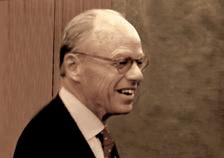
1960
Anthony Drexel “Tony” Duke Jr. died peacefully on April 11, 2025, in Jupiter, Florida, surrounded by his loving family. He was 84 and had faced a courageous battle with Lewy body dementia.
Tony was known for his intelligence, warmth and humor. A gifted storyteller with a quick wit and a love of jokes, he brought laughter wherever he went. Born into a legacy of philanthropy and leadership, he graduated from St. Paul’s School, earned a B.A. in international relations from the University of Pennsylvania and was a proud member of St. Anthony Hall. He later served in the Peace Corps in Uruguay before earning his MBA from Columbia Business School in 1974.
Professionally, Tony was admired for his wisdom and generosity. He served as senior vice president at Fiduciary Trust International of New York for 18 years and retired in 2011 as executive vice president of Bessemer Trust after 19 years. His colleagues deeply valued his steady guidance and sense of humor.
Tony’s roots were steeped in service. His father, a member of the Form of 1937, founded Boys and Girls Harbor in East Hampton and East Harlem. He was also the great-greatgrandson of Washington Duke, founder of the American Tobacco Company, and the great-grandson of Benjamin N. Duke, a key benefactor of Duke University.
Tony is survived by his wife of 40 years, Olga; his children, Anthony Drexel Duke III (Dana) and Milena Duke Holmes (David); and his stepchildren, Cristina King Kloss and the late Spencer King. He was a devoted grandfather to Mackenzie, Harrison, Olivia and Alice.
He divided his time between Locust Valley, New York, and Hobe Sound, Florida, enjoying golf, lively conversations and the companionship of his beloved springer spaniels, Maggie and Millie.
Tony had a magnetic presence, a boundless love for people and a deep generosity of spirit. Whether in the boardroom or on the beach, he made meaningful connections and left an unforgettable impression.
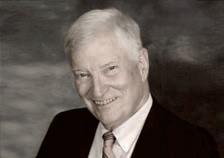
1960
William Henry Marmion Jr. died on March 29, 2025, at 82 in Dallas, following a period of declining health due to Alzheimer’s disease.
The son of Bishop William H. Marmion and Mabel Nall Marmion, Bill was born in Birmingham, Alabama. He attended Tower Hill School in Wilmington, Delaware, before moving to Roanoke, Virginia.
At St. Paul’s School, Bill played basketball and baseball, served as a supervisor, and was a member of the Missionary Society and the Scientific Association. Most importantly while at SPS, he discovered his calling to teach and coach. Bill went on to attend Washington & Lee University, graduating Phi Beta Kappa. He received a Master of Arts in Teaching from Harvard and a Master of Divinity from the Episcopal Divinity School.
After two years on the staff of St. Paul’s Church in Philadelphia, Bill joined St. Christopher’s School in Richmond as chaplain. He went on to teach at Bryn Mawr School, Emma Willard and Gaston Day School before joining the faculty at St. Mark’s School of Texas. In his 31 years there, Bill led the history department and taught AP Economics and AP U.S. History. As a football and basketball coach, he believed in teaching the fundamentals and worked tirelessly to instill those skills in his players.
Bill maintained that his No. 1 rule of life was “never buy anything that eats.” Despite this philosophy, he adored animals and doted on his daughters’ dogs. He also enjoyed spending weekends on the golf course. A Virginian at heart, Bill was a committed fan of UVA sports and rooted religiously for the Boston Red Sox. He maintained his New England
connections by spending summers on the Maine coast.
Bill is survived by his wife, Nancy Marmion; daughters Katherine Marmion and Elizabeth Marmion; and brother Roger Marmion.
1960
Henry Tilford “Tim” Mortimer Jr. died on Jan. 16, 2025, at the age of 82, following a long illness due to complications from emphysema.
Born on Aug.12, 1942, in New York City, Tim was the son of Henry Tilford Mortimer and Elise Urquhart Duggan. He attended the Buckley School in New York and the Institut Le Rosey in Rolle, Switzerland before enrolling at St. Paul’s School, where he played ice hockey and soccer and ran track for Old Hundred. He also was active in drama, Student Council and Le Cercle Français. He earned a B.A. in economics from Harvard, served as a second lieutenant in the Army and completed his MBA at Harvard.
Tim built a distinguished career in finance, beginning at Eastman Dillon, where he rose to managing director and led the Paris office. He later joined E.F. Hutton as a managing director in corporate finance and then moved to Financial Security Assurance, managing the company’s London office before returning to the U.S., where he worked until retirement.
Known for his erudition, good humor and impeccable manners, Tim made lasting friendships across the globe. An avid boater, he first delighted in racing offshore with his boat Beep Beep and later enjoyed more leisurely outings aboard his speedboat Woof Woof. He also loved games, from tennis and croquet to backgammon, Scrabble and jigsaw puzzles.
Gardening and home projects brought him quiet joy in his later years. Tim and his wife, Susan, shared a love of travel, revisiting London and Paris and exploring Scotland and Marrakech. He deeply cherished time with his family, especially summers in Southampton and holidays together.
He is survived by his beloved wife of 35 years, Susan (Lewis) Mortimer; his children, Henry T. Mortimer III ’92 and Caroline Bareau (Oliver); his stepchildren, Richard Bierbaum (Laura), and Caroline LeFrak (James); his grandchildren, Charlotte and Anna Bareau and Sam LeFrak; and his stepgrandchildren, Ivan, Russ and Polly LeFrak and Brayden and Anderson Bierbaum.
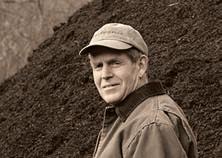
1961
Peter Brice Britton of South Hamilton, Massachusetts, died on April 26, 2024, at Beverly Hospital after a brief illness. He was 81.
The son of John Delaplaine and Margaret (Ferguson) Britton, Peter was born and raised in Hartford, Connecticut. After graduating from St. Paul’s School, he pursued a prebaccalaureate program at Upper Canada College in Toronto. Following graduation from Yale in 1965 with a degree in American Studies, Peter joined the U.S. Navy and served as a repair diver and gunnery officer on a repair ship.
Peter married Beatrice Totten in 1970; they lived in Lexington, Massachusetts, and he taught at Belmont Hill School. In 1975, they built their home in South Hamilton, where they lived with their children, Nathan and Willoughby.
Peter was a civic leader involved in local and international nonprofit environmental organizations. He served on the Hamilton planning board for many years and was a supporter of The Trustees of Reservations as well as the Essex County Greenbelt Association. He also was a longtime board member of Outward Bound International and helped establish programs for youth wilderness education in Oman and Rwanda. Peter founded Brick Ends Farm in Hamilton with the vision of restoring fallow lands along the North Shore to agricultural production. His commitment to land restoration continued as he transitioned the farm into a pioneering operation for the processing of organic waste into usable compost. His track record finding water using only a dowsing rod was locally renowned.
An enthusiastic athlete, Peter was a longtime member of the Myopia Hunt Club. He ran the Boston Marathon and was once the only person in his age group to complete the Sea to Summit Triathlon. He loved to kayak in the ocean, and he was particularly proud of having skied more than a million vertical feet of untracked powder in the Canadian Rockies in his lifetime.
Peter is survived by his loving wife, Bea; his son, Nathan Britton, and his wife, Sara Dunsky, and their daughter, Tabitha DunskyBritton; and his daughter, Willoughby Britton, and her husband, Jared Lindahl.

1961
Jonathan Mayhew “Jon” Wainwright ’61 beloved husband, father and grandfather, died at 80 on Nov. 21, 2024, at his home in New York City with his wife, Candace; his sons, Jay and Shep; and his stepdaughters, Kate and Lexie Olmsted, by his side. He was the son of Janet Parsons and Stuyvesant Wainwright II, a U.S. Congressman.
Before coming to St. Paul’s School, Jon attended a one-room school in Wainscott, New York, followed by St. Bernard’s School in Manhattan and the Landon School in Washington, D.C. At SPS, he sang in the choir and learned to skate on the black ice. He played ice hockey and lacrosse and talked often about playing hockey at Madison Square Garden and scoring the only goal of the game. He was a passionate hockey player until a serious back injury during his freshman year at Yale. Unable to continue with the sport, he took on the task of running the Yale Student Laundry, a formative experience from which he learned that much could be accomplished with hard work, determination and a creative approach. The philosophy guided him the rest of his life.
Jon earned his law degree from New York University in 1968 and went to work at Cadwalader, Wickersham & Taft, where he stayed until his death. The firm described him as “one of the legal profession’s foremost experts in investment management, alternative investment products and family office matters, providing corporate governance and transactional advice to a who’s who of U.S. and international clients.” Professionally and personally, Jon had a way of gathering people. An incredibly hard worker, he was curious and
eager to learn about everyone, and many gravitated toward him, seeking his guidance. Jon served on many boards, including the B. Robert Williamson Jr. Foundation, Lighthouse Guild, The Nature Conservancy and Friends of Georgica Pond Foundation, which he helped found in 2015 to protect the water and ecosystem of Georgica Pond, where he lived for more than 75 years.
An American studies major, Jon had a lifelong appreciation for American art, literature and music. He was an avid upland bird hunter, a family tradition he was thrilled to share with his sons. Jon’s favorite places were his cottage at the Long Point Company (a duck hunting club in Canada) and his home, where he gardened, delighted in the wildlife and the weather, and enjoyed the thousands of daffodils he and Candace planted over the years. A skilled squash player in his younger years, Jon was a lifelong conservationist, gardener and New York Times puzzle whiz.
Jon was predeceased by his sister, Snowden Wainwright. He is survived by his wife, Candace; his sons, Jay (Bitsy) and Shep (Tina) Wainwright; his stepdaughters, Kate (John Grossman) and Lexie Olmsted (Ly Tran); his grandchildren, Jack, Lucy, Sally, Alex, Reed and Chloe Wainwright, Eliza, Charlotte and Xander Grossman, and Will and Katie Tran; his siblings, Stuyvesant (Mitten) and Laura (Whit Griswold); and several cousins, including D. Walker Wainwright ’68 and Mark Wainwright ’72.
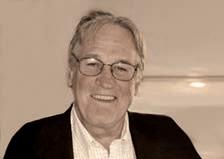
1963
David Courtney Evans died March 9, 2025, at his home, Orchard House, in Ligonier, Pennsylvania, after a brief illness.
David was born on Oct. 1, 1945, to John Duncan Jr. and Virginia Evans of Pittsburgh. He attended Shadyside Academy before enrolling at St. Paul’s School and studied at the University of Pennsylvania before enlisting in the U.S. Army. He served as an ambulance
driver with tours of duty in Okinawa and the Philippines.
David’s favorite places were Aspen, Ligonier and Hyannisport. He spent winters in Aspen and was an accomplished skier who stood out from the crowd by always wearing a blue onepiece mechanic’s outfit from a local garage. He enjoyed driving across the country, visiting friends. He was an avid Porsche-lover, owning various models from age 18 until his death.
Though a private man, David was a longstanding member of the Hyannisport Club and The Beach Club of Centerville, Massachusetts, and other clubs in Pittsburgh.
David is survived by his sister, Margaret Tuten (John). His brother, John Duncan Evans III ’57 (Vernelle), a Presbyterian minister, died in 2015.
David was very close to his sister Gerry’s children, John and Alex Tuten, and their children, Jack and Maddie; Gigi and Caleb Kuhnmunch and their children, Jack, Wills and Molly; and Ginna and Mike Welsh and their children, Sophia and Danny. He loved to take the children tubing on his boat, Jade, in Nantucket Sound.
David was also close to his brother’s children, John Paul Evans and Faith Evans-Sills. He always enjoyed spending Christmases with Faith and her husband, Frank, and their children, Jasper, Carys and Griffin. David was somewhat of a trickster who loved to play games with the children and taught them to juggle. He was a caring, generous, concerned, compassionate and courageous person with friends all over the country. He will be missed by all who were lucky to have known him.
OBITUARY SUBMISSIONS
Alumni Horae will reprint obituaries that have been previously published elsewhere or written in traditional obituary format and submitted directly to us. Obituaries may be edited for length and style and will appear in the next possible issue of Alumni Horae. You may reach out to alumni@sps.edu to submit an obituary.
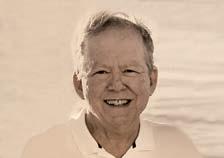
1965
Stephen V. R. “Steve” Whitman died on Nov. 15, 2024, of pancreatic cancer at his home in Bonita Springs, Florida.
He was born on Feb. 2, 1947, to Alexander Harvey Whiman (Form of 1937) and Sylvia Choate Whitman and grew up in Cedarhurst, Long Island. He learned to play tennis at the Rockaway Hunt Club, where he developed an early passion for playing and winning. He attended The Lawrence School before heading to St. Paul’s School in the Second Form. Steve’s sister, Sylvia, graduated from the School in 1979. Members of the Form of 1965 looked up to Steve and elected him as their president. He was also an Honor Scholar, Ferguson Scholar and a recipient of the Oakes Greek Prize. An Old Hundred and Halcyon, Steve made the varsity football team in his final year, but his greatest athletic prowess was in racquet sports. He was on the varsity squash team for his last two years and on the varsity tennis team for four years, serving as captain for the final two.
Steve graduated from Harvard and University of Virginia School of Law. He joined USAID, which included a posting to Peru from 1980 to 1981. He then began his law career with Kelley Drye and Warren, helping them start a new office in Miami. Subsequently, he became general counsel for Hagler Bailly, a consulting company and, eventually, general counsel for SS&C Technologies, a public software company in Windsor, Connecticut. These last two were Steve’s favorite employments. He formally retired in 2013 and moved to Bonita Springs, where he could play tennis to his heart’s content. Steve and his wife, Pat, enjoyed lots of travel to places such as China and Argentina. According to Pat, when Steve worked, he worked hard. When he retired, he totally enjoyed spending time with their seven grandchildren. He loved his family deeply. In addition to Pat and the grandchildren, he is survived by his son, Stephen Jr., and his daughters, Mary and Elizabeth.
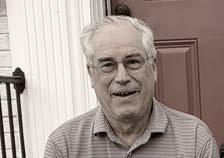
1966
Thomas N. Lea died peacefully on April 6, 2025, in Falmouth, Maine. He was 76.
Tom was born Oct. 3, 1948, and grew up on his family’s working farm in Princeton, New Jersey. He enjoyed spending time with his standard poodle, Babbette, and playing hockey and soccer. Throughout his childhood, Tom spent summers with his family in Tenants Harbor, Maine. He enjoyed his time there so much that he chose to attend Bowdoin College, where he majored in government and competed on the varsity hockey and soccer teams. He also enjoyed competitive sailing throughout college and well into his 30s. He remained in Maine for the rest of his life.
After college, Tom started a career in banking, where he spent the next five decades, eventually settling into commercial lending. He earned his MBA from the University of Southern Maine in 1980. He finished his career in 2013 as senior vice president of commercial real estate lending for Northern New England at People’s United Bank in Portland. He was also president of the Maine Real Estate and Development Association.
In 1979, Tom met his wife, Dale, in Portland, and they married a year later. Together they raised two children. In his spare time, Tom enjoyed golfing and gardening. He had quite the green thumb and in his prime maintained flower beds and vegetable gardens around his family home in Cumberland. He was a member of the Portland Country Club for nearly 50 years, where he served on several committees. He also volunteered for many years at the Shalom House in Portland, which provides community-based support for adults living with mental illness.
Tom was well loved by those closest to him and was known for his sense of humor and gregarious personality. He was very proud of his children and his wife’s successful career in public health and genomics.
Tom was predeceased by his wife and his siblings, Ann Fries and John “Biff” Lea ’61. He is survived by his children, Allison and Halsey, as well as a daughter-in-law and granddaughter.
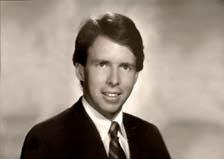
1975
Francis Moors “Frank” Bradley of Manchester-by-the-Sea, Massachusetts, died peacefully on Nov. 26, 2024, surrounded by his immediate family. He was 67. He succumbed to a lifelong battle with juvenile rheumatoid arthritis, which he had faced so bravely, quietly and intellectually that he lived longer than anyone imagined.
Frank was the beloved husband of Dr. Adrienne S. Bradley, with whom he shared 37 years of marriage and two cherished daughters. Frank and Adrienne met on the first day of medical school and, from that moment on, he had her heart completely.
Frank was born in Boston on May 31, 1957, to Jane Dysart Carpenter Bradley and John Moors Bradley. He graduated from Shore Country Day School and St. Paul’s School before attending Harvard and Hahnemann Medical College, where he was at the top of his class. His future brother-inlaw stated that he was exhausted from having to stand up and clap so many times as Frank won almost every award given at graduation. He completed a five-year radiology residency at the New England Deaconess Hospital and then a fellowship at Massachusetts General Hospital in cross-sectional imaging. He then returned to the Deaconess, now merged with Beth Israel Hospital, as head of mammography and was a leader in establishing stereotactic breast biopsies.
Since boyhood, Frank was a gifted and graceful athlete. Whether skiing, picking up a game of hockey on any patch of ice he could find, playing tennis, windsurfing with his dog atop his board or casting a line while fishing off the rocks at Eaglehead, he noticed and appreciated nature. These playful endeavors allowed him to fulfill his sense of adventure, competition, joy in friends and also quiet contemplation.
As his joint destruction worsened, Frank remained hopeful and patient. With new medications often having intolerable side effects, he decided to spend his time where it mattered most and relinquished the intensity of hospital work to concentrate his time with his family, particularly his daughters. He prioritized his physical and mental health but also gave back to his communities. Frank taught Harvard radiology residents and donated his time to boards at Shore Country Day School and was a leader in a family charitable trust. He also enjoyed being with his family and friends at the Macanudo Investment Club, the Essex County Club, the Myopia Hunt Club, the Manchester Yacht Club and the Singing Beach Club, where he served as treasurer until recently.
Losing the ability to play many sports he had enjoyed, Frank turned to golf, walking in the woods, boating and swimming. He was a naturalist at heart with a curious, scientific mind that was a sponge for the names of wildflowers, trees, land and sea creatures of all sorts. His enthusiasm was infectious, whether it was finding a slug or a salamander under a log or coming out of the Caribbean with an octopus that had climbed into his pocket. This less frenetic time allowed deeper connections with and appreciation for his family and friends.
Frank’s appreciation, delight and wonderment at life was constant, and people just wanted to be in his company. He is survived by his wife, Adrienne; his daughters, Camilla Cabot Bradley and Cecily Moors Bradley; and his siblings, Ralph Bradley, Juliet Bradley and Didi Blau ’77. To know Frank was to love him, and he is greatly missed.
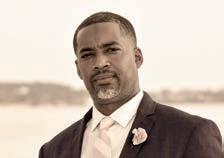
1996
Terrance Pedro Edney Sr. died suddenly on April 13, 2025, at age 46. He embodied the School’s values of service and excellence throughout his remarkable life, dedicating himself to uplifting young people and strengthening communities.
Born in Philadelphia on July 12, 1978, to Alice D. Edney (White) and the late Pedro Edney, Terrance demonstrated exceptional academic promise from an early age. His teachers recognized his potential and recommended he pursue a more challenging educational environment, which led him to St. Paul’s School.
During his four years in Millville, Terrance came into his own as a leader and athlete. The recipient of the 1996 Gordon Medal for the top male athlete, he was recognized as a true three-sport performer. What distinguished him most, according to coaches, was his unusually balanced and healthy perspective on the role of athletics in his life. As a Sixth Former, Terrance was a three-sport captain. On the football field, he excelled as a running back. In basketball, his assertive ball-handling and floor leadership sparked his team’s run to the New England tournament. A combo guard known for his penetration on offense and tenacious defense, he earned the Independent School League Most Valuable Player award and was selected to the Boston Globe All-Scholastic team. On the track, he was a member of the foursome that set the School record for the 4x100 meter relay; his leadership helped secure an unprecedented four straight ISL and New England Championships.
Beyond athletics, Terrance’s healthy, positive attitude and infectious smile made him beloved throughout the School community. He was a wonderful ambassador as a Student Admissions Officer.
At Lehigh University, Terrance earned a B.S. in biology and then devoted his career to youth development and community service in Philadelphia. As executive director of the Prince to King Foundation, he mentored underserved juvenile boys and served as head coach of the foundation’s AAU basketball team. His work extended to roles as aftercare and summer camp director with Discovery Charter School, behavior specialist with Philadelphia Health Management Corporation and therapeutic support specialist throughout Greater Philadelphia.
Terrance’s commitment to young people was unwavering; he met them at their point of need and helped guide them toward brighter futures. His unique combination of mentoring and coaching provided countless young people with the support and encouragement they needed to succeed.
In recent years, Terrance embraced his love of travel as an agent with Travel Allure Agency, helping clients create special memories through their journeys. His faith remained central to his life, having accepted Christ at age 10 and maintaining active church membership throughout his adult years.
A devoted Philadelphia sports fan with a love for Marvel comics, Harry Potter and amusement parks, Terrance was known for his infectious humor and ability to make everyone around him laugh.
In 2018, Terrance married Antoinette Cooper, and their loving union was blessed with four children. He was preceded in death by his father, Pedro Edney, and his son, Terrance Pedro Edney Jr. He is survived by his wife, Antoinette; his children, Terrance Pedro Edney III, Amiyah Edney and Adneka Robinson; his mother, Alice D. Edney; his sisters, Tracey Sullivan-Clarke, Trina EdneyJones and Porsha Corbin-Edney; and many extended family members and friends whose lives he profoundly touched.
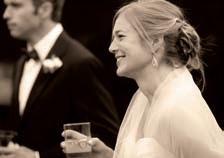
1998
died peacefully in her home in Mill Valley, California, on Oct. 7, 2024. Her husband, D. Stephen Maxon Jr., was by her side. Jennie was diagnosed with breast cancer in March 2020 but lived all her 44 years with energy, curiosity, candor and love, always taking adversity in stride and inspiring those around her.
Jennie was born and raised in Lakeland, Florida. In her four years at St. Paul’s School, she was an exemplary scholar, athlete, musician and community leader. Her formmates remember Jennie for her boldness, confidence, enthusiasm for anything she tackled and great sense of humor.
Jennie was a standout athlete. An AllLeague softball player and team captain whose sportsmanship, fellowship and individual skill was recognized with the School’s softball award, she also played JV field hockey during her Third Form year and on the varsity team for the next three years — all undefeated seasons. Despite having never skated before arriving at SPS, she played JV hockey all four years, generating a strong and enthusiastic offense for the team.
Jennie played first alto sax in the concert band throughout her tenure at SPS and was a key member of the jazz band as well as the Keiser Guild.
Service and giving to others was important to Jennie, and she earned the Franzheim Prize, given for outstanding citizenship and School service, as a Fifth Former. Jennie was active in the Missionary Society for three years and rose to become the group’s secretary. Her
charitable activities extended into the Concord community, where she served as project director for student volunteers visiting the Odd Fellows Home. In this capacity, Jennie used her natural charm and formidable persuasiveness, encouraging peers to spend time with the elderly. Her service to others and leadership in the form were also demonstrated when she was voted as the Fifth Form representative to the Student Council and selected to be a Student Admissions Officer in her Sixth Form year.
Jennie received her diploma cum laude and was awarded the Clifford J. Gillespie Medal, presented to the student who “best embodies the qualities of honesty, integrity and an eagerness to undertake the tasks great and small which make the School a better place,” as well as the Giles Band Prize, awarded to the student who has demonstrated the most spirit, leadership, musicianship and dedication to the band.
At Brown University, Jennie studied economics and played varsity softball and golf. She then served in the Peace Corps in Bolivia before working as a consultant in Boston, where she met Steve. Most recently, Jennie was a landscape architect with projects in Marin, Napa and San Francisco.
Jennie was a vibrant and loving soul with endless hobbies, including writing, reading, gardening, travel, skiing, pickleball, surfing, swimming, cycling and golf that served as pathways for her relentless pursuit to enjoy life and learn as much as she could. Jennie conquered everything she turned her hand to. While Jennie’s talents were many, perhaps her greatest gift was her love for her family and friends and ability to bring folks together to share her bold sense of adventure and zest for life.
Jennie is survived by her husband, Steve, and their daughters, Madeline Joan (Maddie) and Parker Ellen; her father, Dr. James Belcher; her brother, Chris, and his wife, Gina; and her beloved dog, June. She was predeceased by her mother, Carolyn. Jennie is greatly missed by family and friends, although her spirit will be long remembered.
Jennifer Ellen Belcher “Jennie” Maxon
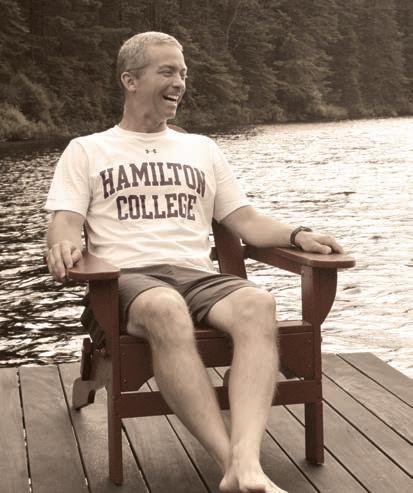
Remembering Tim Crutchfield
JANA F. BROWN
Before Tim Crutchfield died on April 13, 2025, he had one last message for his four children: “Be good people.”
From a man who emanated kindness, warmth and positivity, that was the final request — to emulate the goodness he seemed to effortlessly put into this world throughout his 65 years.
Although not a full-time member of the faculty or staff at St. Paul’s (he did help his wife, Heather, coach girls lacrosse at various times, coached boys lacrosse with Cliff Gillespie for a couple of years and was instrumental in the School building a childcare center on campus in 1991), Tim was a longtime community member, having lived on School grounds for 38 years with Heather since the couple married in the Chapel of St. Peter and St. Paul in 1987.
Tim was a familiar, friendly face at SPS and a pillar of the community, ever-present on the trails and walkways, or offering encouragement from the sidelines of athletic contests. Most of all, he was known for his cheerful good nature and a sunny smile that could brighten a day.
Tim was diagnosed with leukemia in 2022 and underwent treatment for the disease for the next three years. In fall 2023, he received a bone marrow transplant, but the chronic disease mutated into acute form in January 2025.
Throughout many lengthy hospitalizations, his family shared at a May 4, 2025, celebration of life in the Chapel, Tim never complained. He remained relentlessly upbeat in the face of his illness and made countless friends and admirers among the medical staff at Dana-Farber Brigham in Boston. Before his passing, more than two dozen of those medical professionals lined up to bid him farewell, one after the other, acknowledging the positive impact he had made on them in his own time of need.
A devoted husband and father, Tim regularly wrote love letters to his wife, and an early one was read at his service by Blair Linen Demers ’92. The couple’s devotion to one another was a genuine example of love and commitment. Tim enjoyed watching Heather shine but was always willing to step in when needed. Their children, Ashley ’08, TJ ’09, Connor ’13 and Madison ’14, shared tender remembrances at his request. “He was always happy to see us,” TJ said, recalling that his father would travel more than two hours to his college lacrosse games even when he wasn’t getting playing time as a freshman. The siblings recalled road trips with their dad, early breakfasts, supportive and caring messages. “He was my first text of the morning and my last before bed,” Madison said. He was always there for them, even while balancing his own meaningful professional life.
In the mid-1990s, Tim completed law school, at times with Ashley and TJ in tow. At the May 4 service, Judge Jeffrey Howard P’13 spoke of the admiration and respect Tim had earned within the state’s legal community as general counsel and deputy director for the New Hampshire Retirement System. “Who better to do this job?” Howard asked, referencing the legal headaches and bureaucracy that often accompanied Tim’s post — but which Tim always took in stride.
On line condolences lauded Tim as “the best boss I ever had … he always treated me as an equal.” He was described as a man with “uncommon decency” and “welcoming eyes” who was “always gracious.” One entry read: “I have never met in my life a nicer person than Timothy Crutchfield. In my eyes, Tim was — and always will be — the absolute perfect human being.”
With his trademark positivity, charm and disarming smile, of which his family and friends spoke fondly (Ashley described her father as seeing the world through a “glasshalf-full filter”), Tim conducted himself with a kindnessfirst approach. He was a living embodiment of the School Prayer — unselfish, thoughtful and eager to bear the burdens of others.
The depth of his loss, one online tribute to Tim read, was “the price of knowing a good man. There are in one’s life a special few you always are glad to meet; you are lifted up and left better than you were before.”
Tim once reminded his son, Connor, that kindness should not be mistaken for weakness. As Tim Crutchfield proved throughout his life, it is in fact what will remain his enduring legacy of strength.
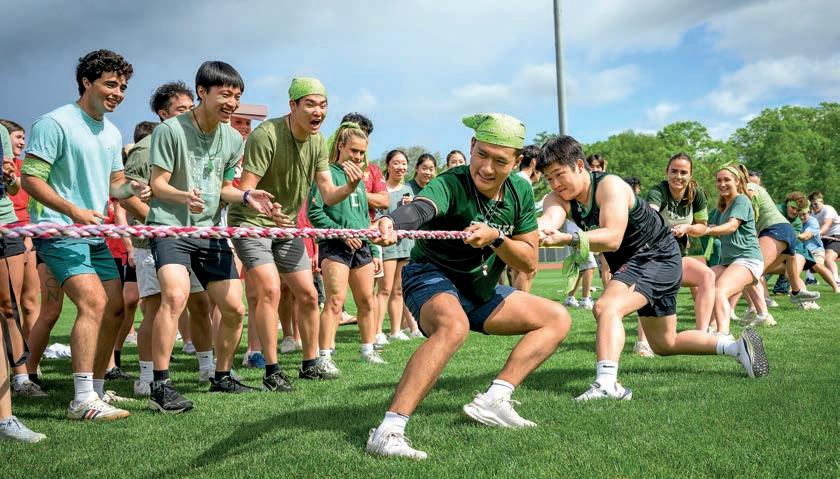
YOU DID IT!
THANK YOU for being the greater good and supporting The SPS Fund, which provides vital current-use dollars that help make it possible for us to offer exceptional experiences to the students who live, learn and grow together in Millville.
This year, your generosity was record-setting: 3,435 alumni, parents and friends made gifts totaling $7.9 million to support every aspect of life at St. Paul's School for our 535 students, the highest dollar amount we’ve ever raised for annual support. We couldn’t be more grateful.
Your generosity was also inspiring: For the second year in a row, every member of the graduating form participated in the Sixth Form gift to honor their own SPS experiences and those who helped make them possible.
For all the ways in which you've helped our students develop greater empathy and perspective, greater insight and understanding, greater teamwork and sense of community, and so much more, we thank you — and they do, too.

HEAR FROM THE FORM OF 2025 IN THEIR OWN WORDS
Alumni Horae
St.
Paul’s School
325 Pleasant Street
Concord, NH 03301-2591
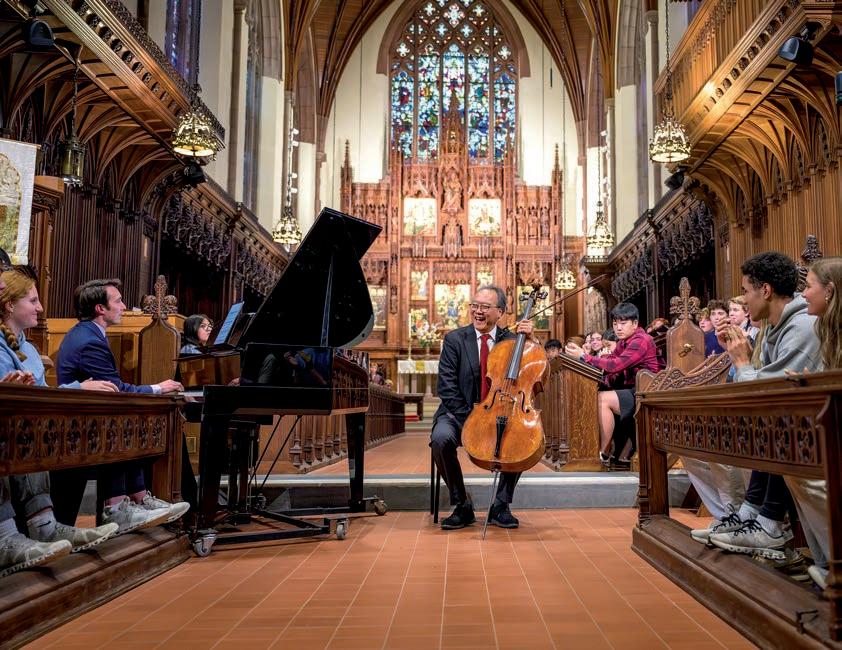
The SPS community gathered in Chapel on May 22 to honor departing and retiring faculty, and to celebrate their time at the School with a special performance by world-renowned cellist Yo-Yo Ma.
PHOTO: MICHAEL SEAMANS
